Sunday 25 February: Tiger’s Nest – Sylvia
Breakfast arrived at our villa at 6:15am this morning and we metChimi and Singye at 7:00am to head for the base of the Tiger’s Nest walk, abut a 45 minute drive away, on the other side of Paro town. The Tiger’s Nest is probably the most iconic site in Bhutan, a monastery built in the 17th century that is perched precariously on the side of a cliff at about 3,093m. It is called the Tiger’s Nest as apparently the second Bhudda ‘flew’ to this site to meditate on the back of a tiger.
We arrived at the car park at 2,599m. Chimi purchased our tickets and we started off at just after 8am, passing a large number of mules that were gathered, waiting either to carry goods up to the cafeteria or tourists the first half of the hike. We opted to walk ourselves and set off at a slow but steady pace, gradually gaining altitude on a well-worn track. In parts there were fairly steep steps, but it is not a strenuous climb, or at least wouldn’t be if it was a couple of thousand metres lower.
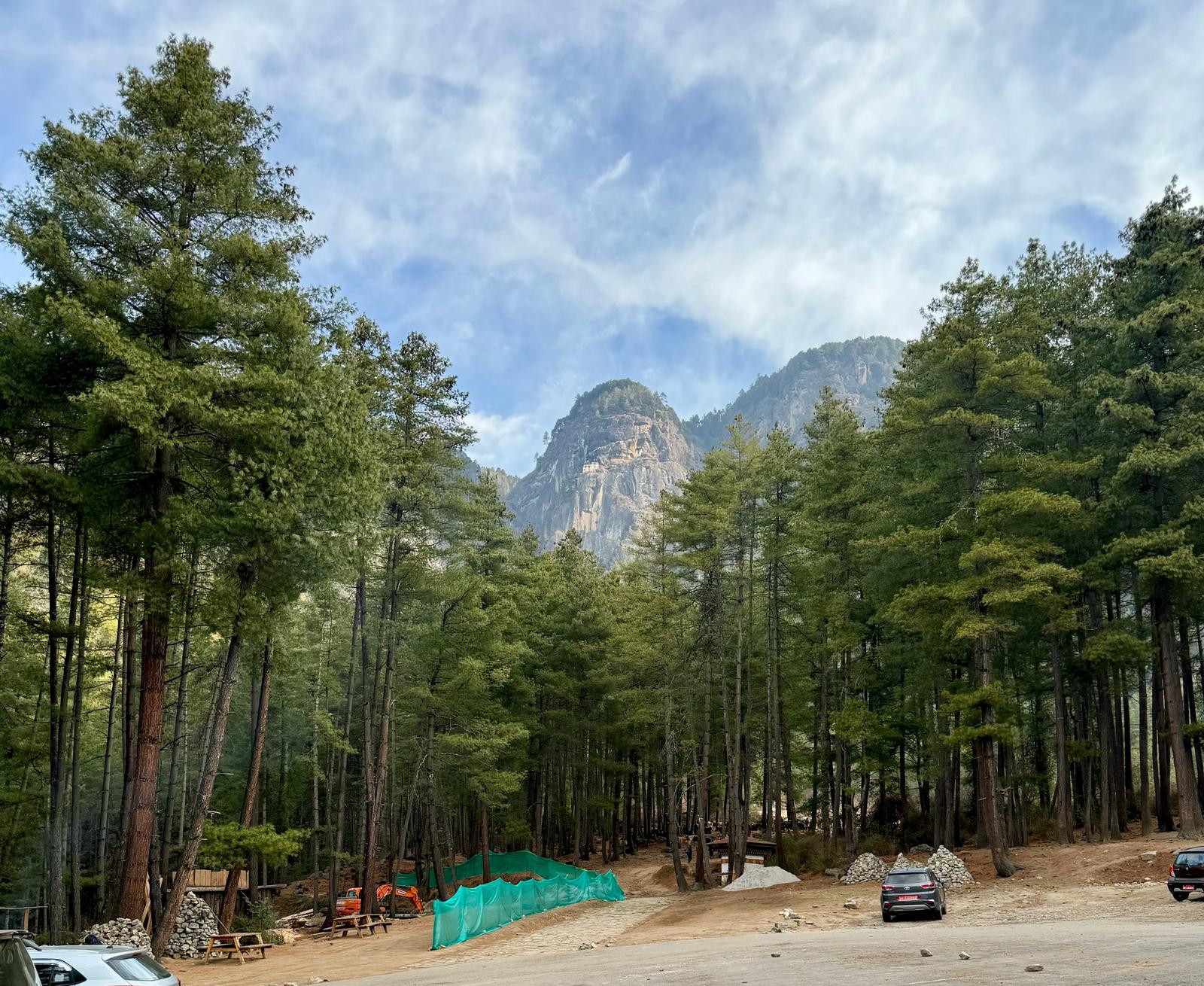
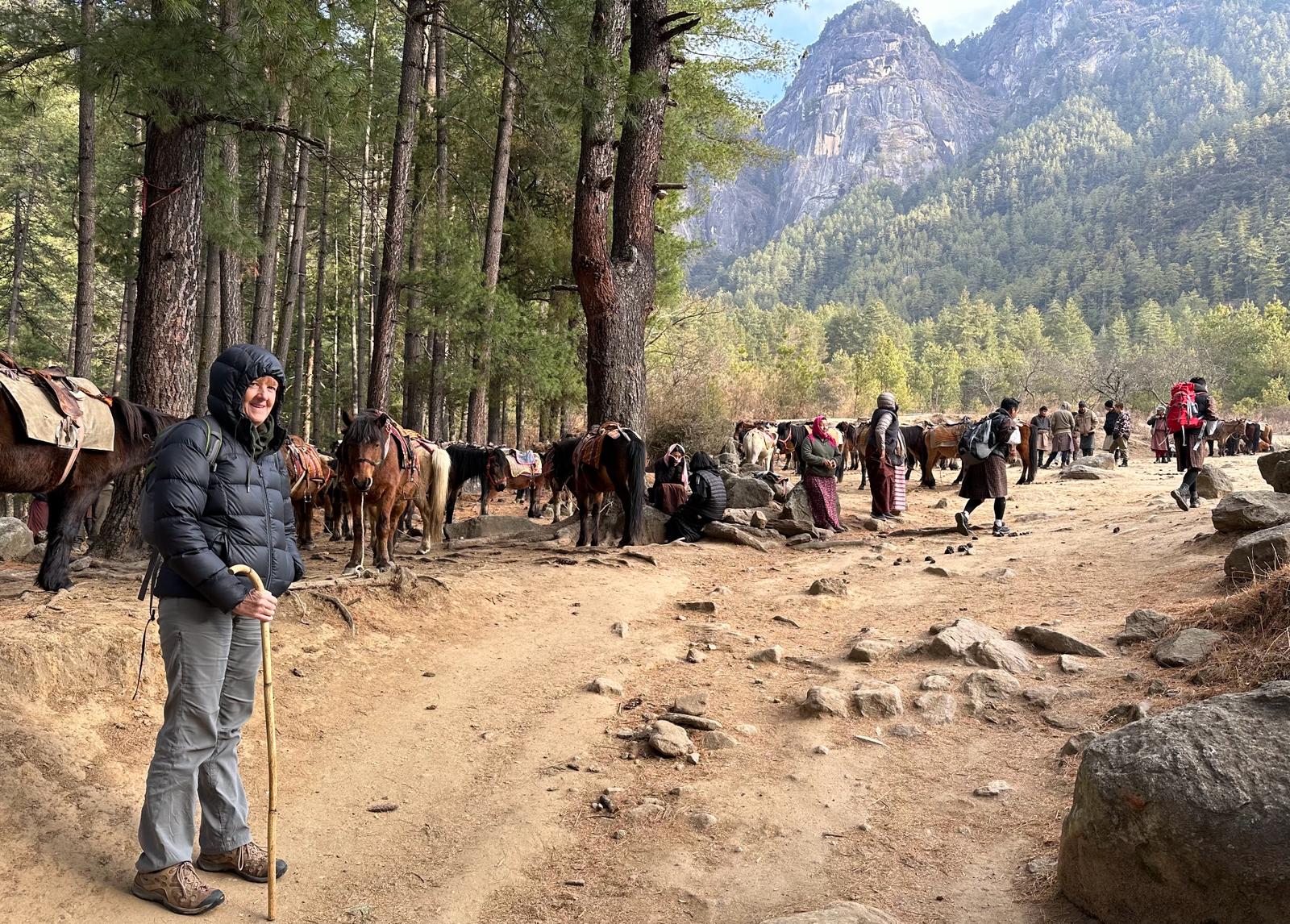
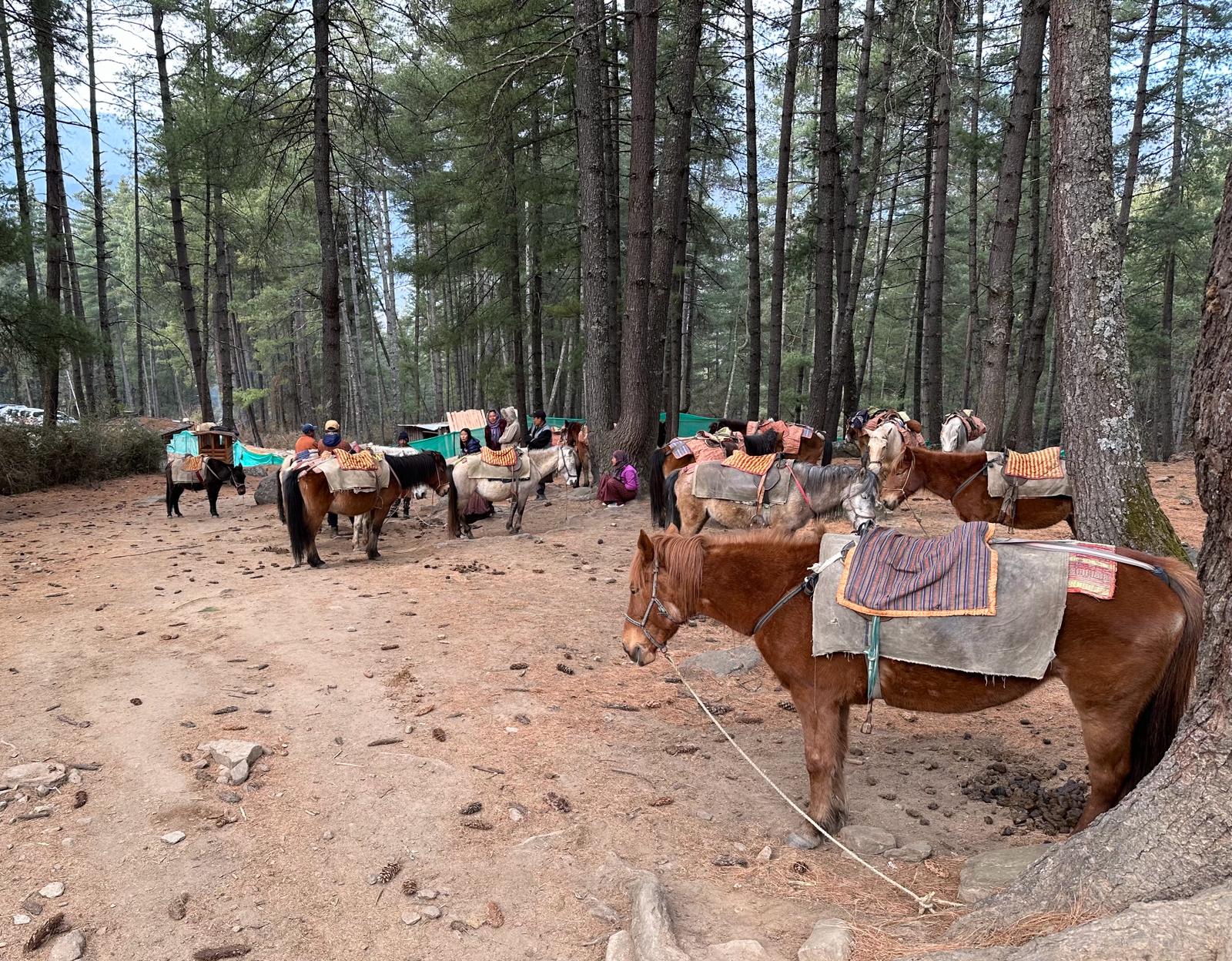
A few people raced past us only to stop for a breather a little way ahead. We plodded on steadily, passing them again, making me think of the hare and the tortoise. At one point we got a bit caught behind a mule train that was slowly making its way up the hill – before the track split off and they continued on a slightly less steep but longer path and we continued on the main path.
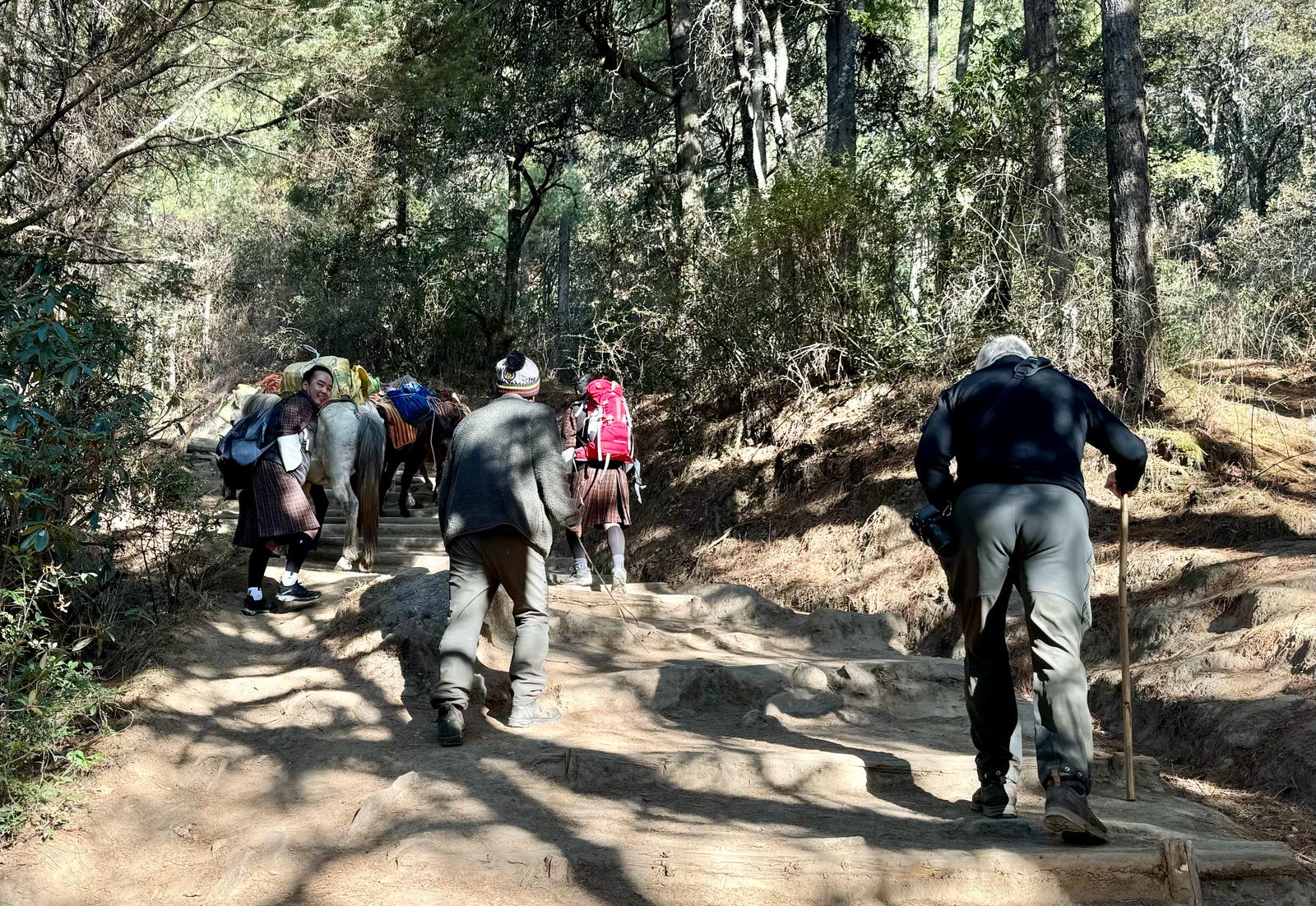
Just before the halfway point we came across a large prayer wheel and Roger gave it a few rounds in hope it might help his knees. Then we arrived at the halfway cafeteria at 2,903m, which has fantastic views to the Tiger’s Nest. Roger enjoyed a cup of tea and we chatted with some of the other tourists making their way up.
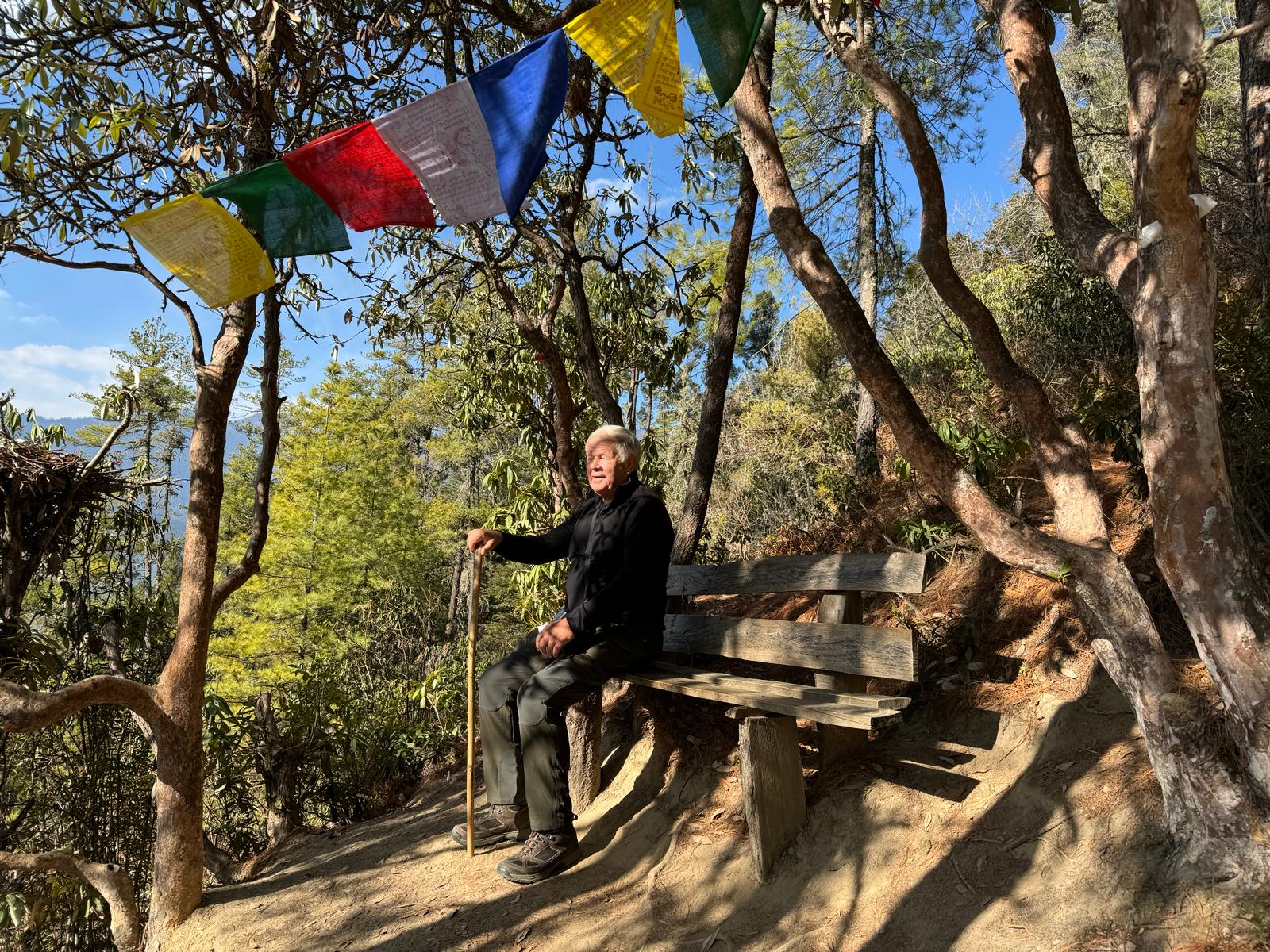
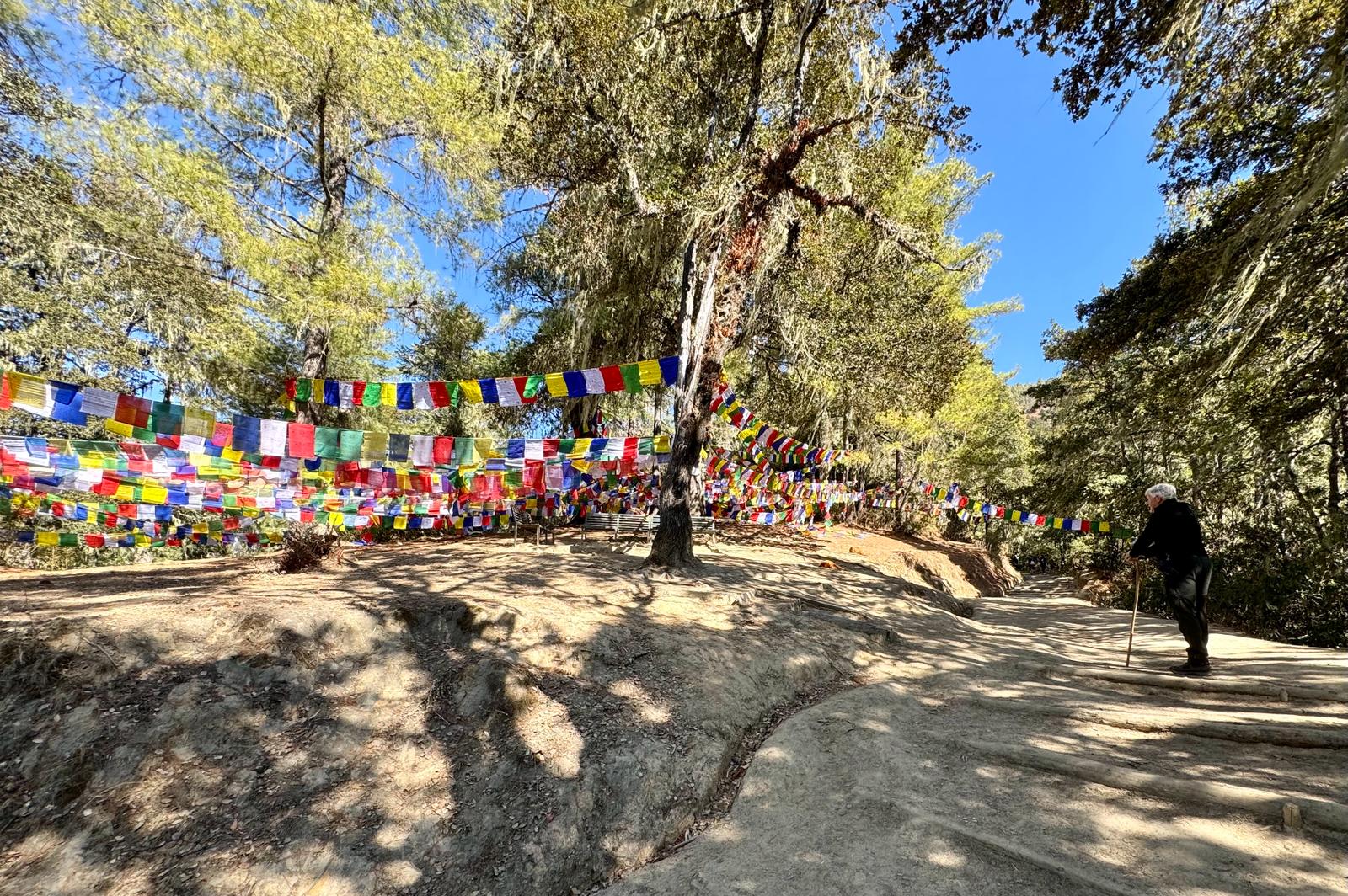
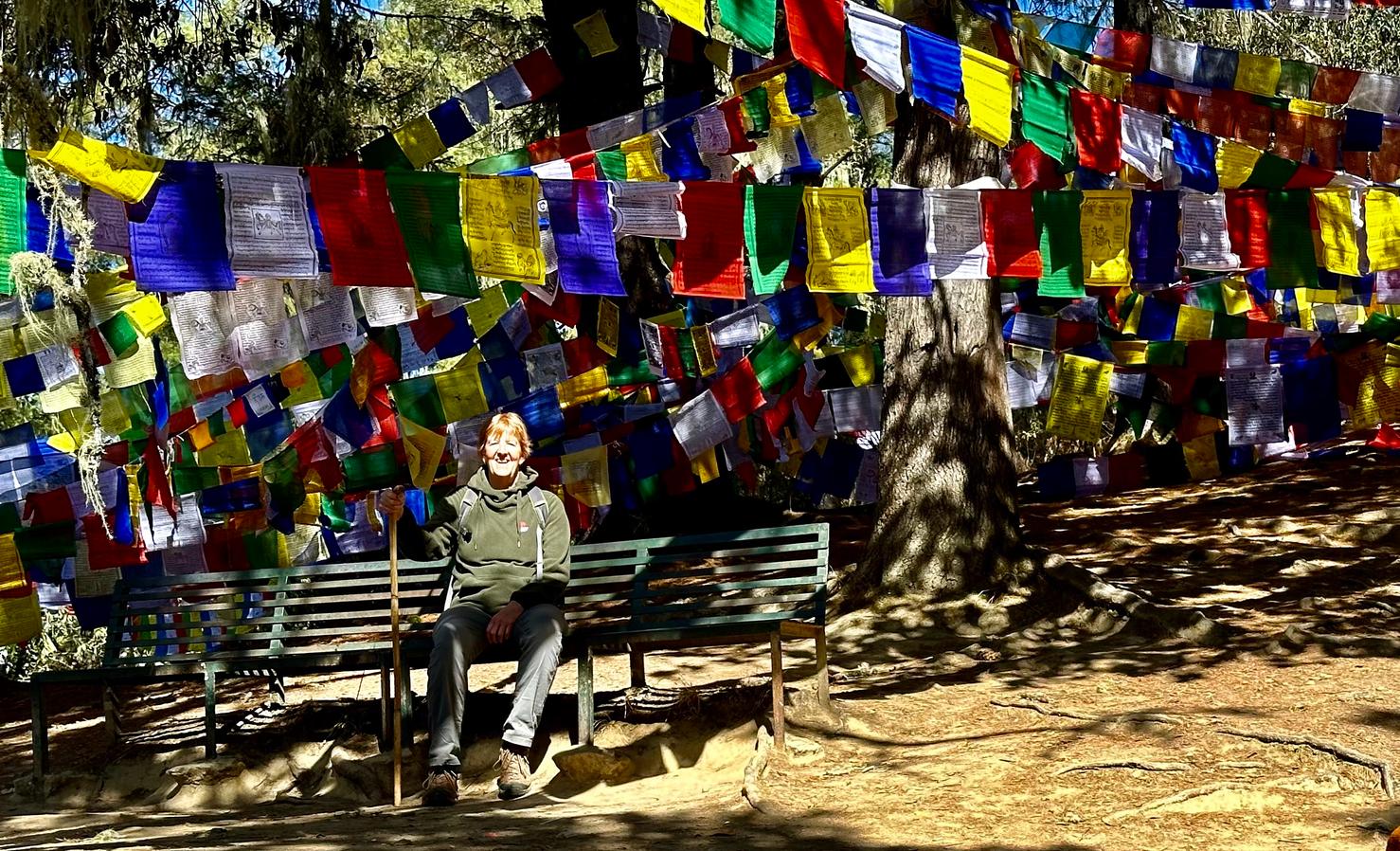
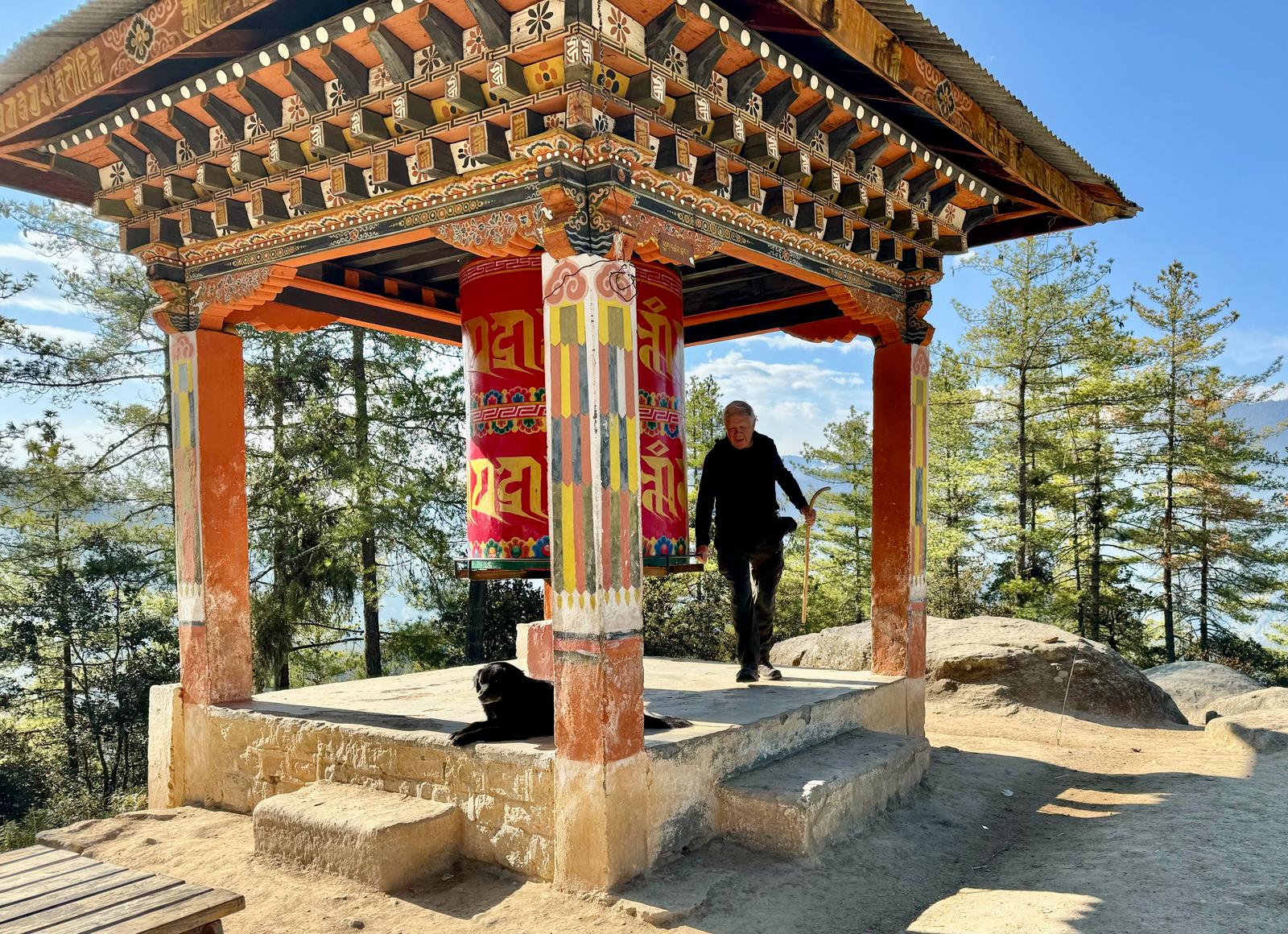
The track continued up for a while then levelled off and wound along the ridge. There are several other temples, monasteries and other buildings, some even higher than the Tiger’s Nest, but none perched quite so spectacularly. The track peaks at about 3,105m. Eventually we came to the top of a long stone stairway going down the side of the mountain. We could see the Tiger’s Nest almost directly opposite on the other side of the valley. We made our way down the steps to a small bridge at the bottom of a waterfall. By this time the wind had picked up and was blowing pretty strongly. Just before we made it to the bridge there was a loud crash as a big chunk of ice blew off the waterfall. Across the bridge, we started climbing again heading now directly to the temple complex.
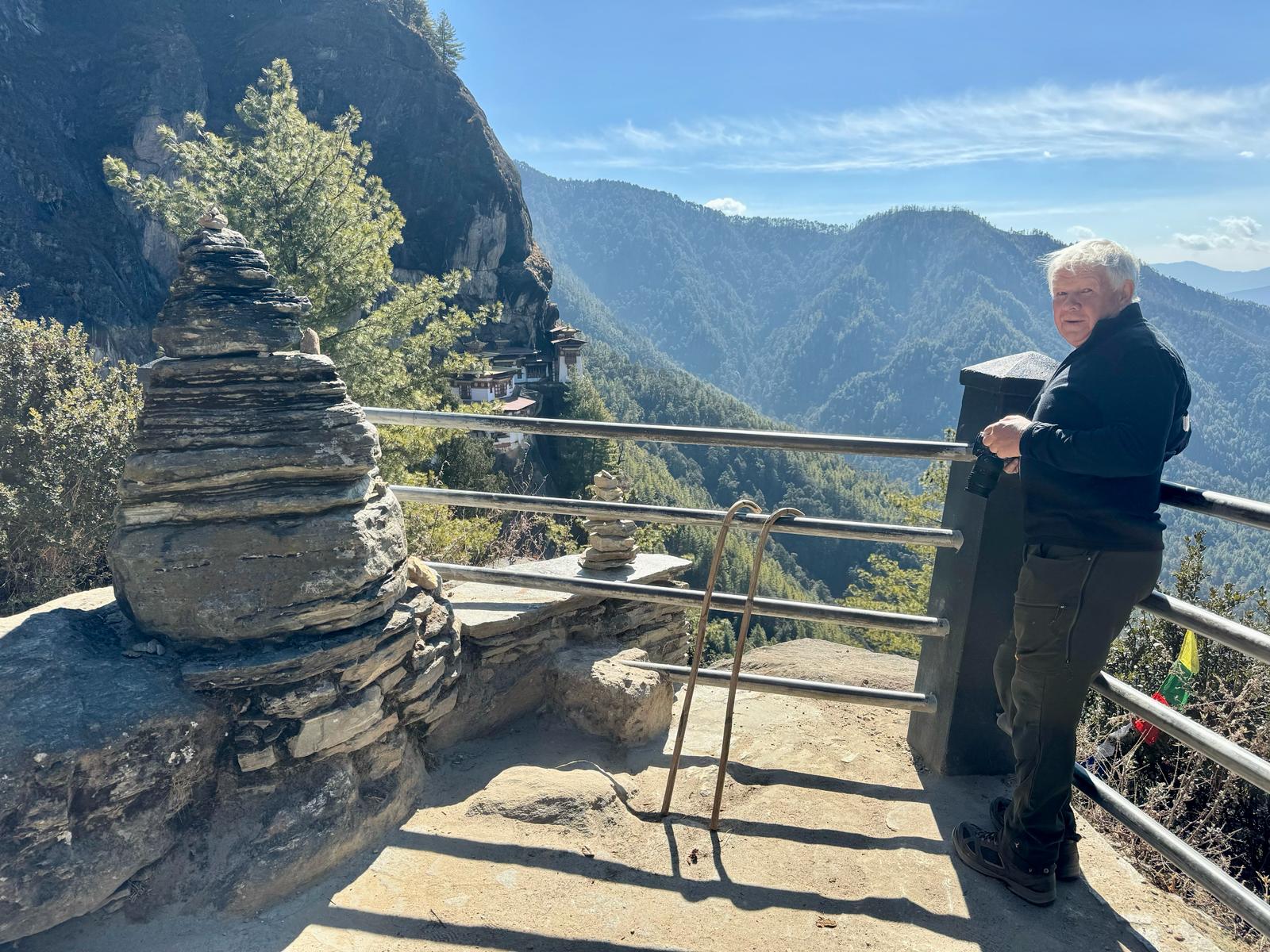
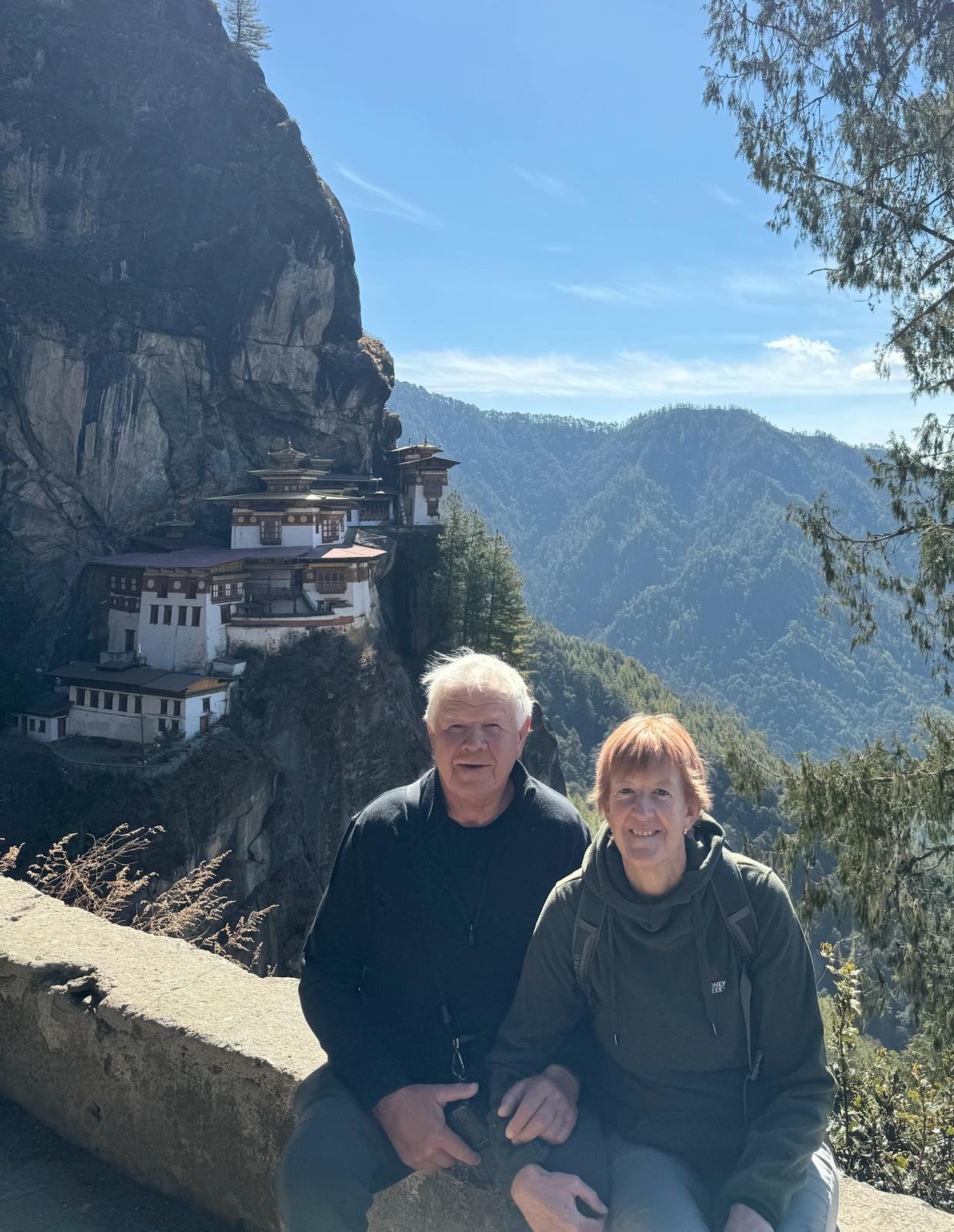
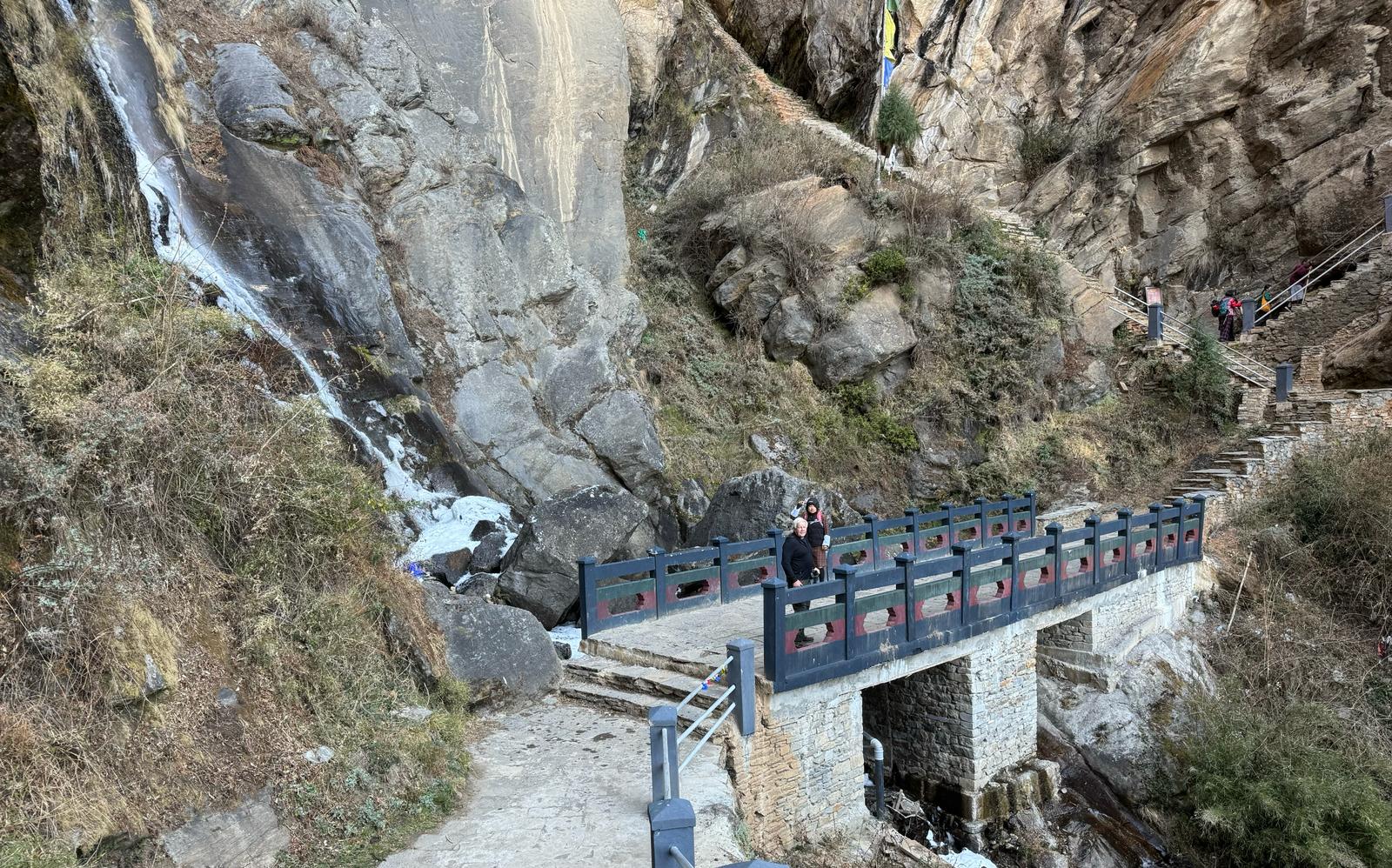
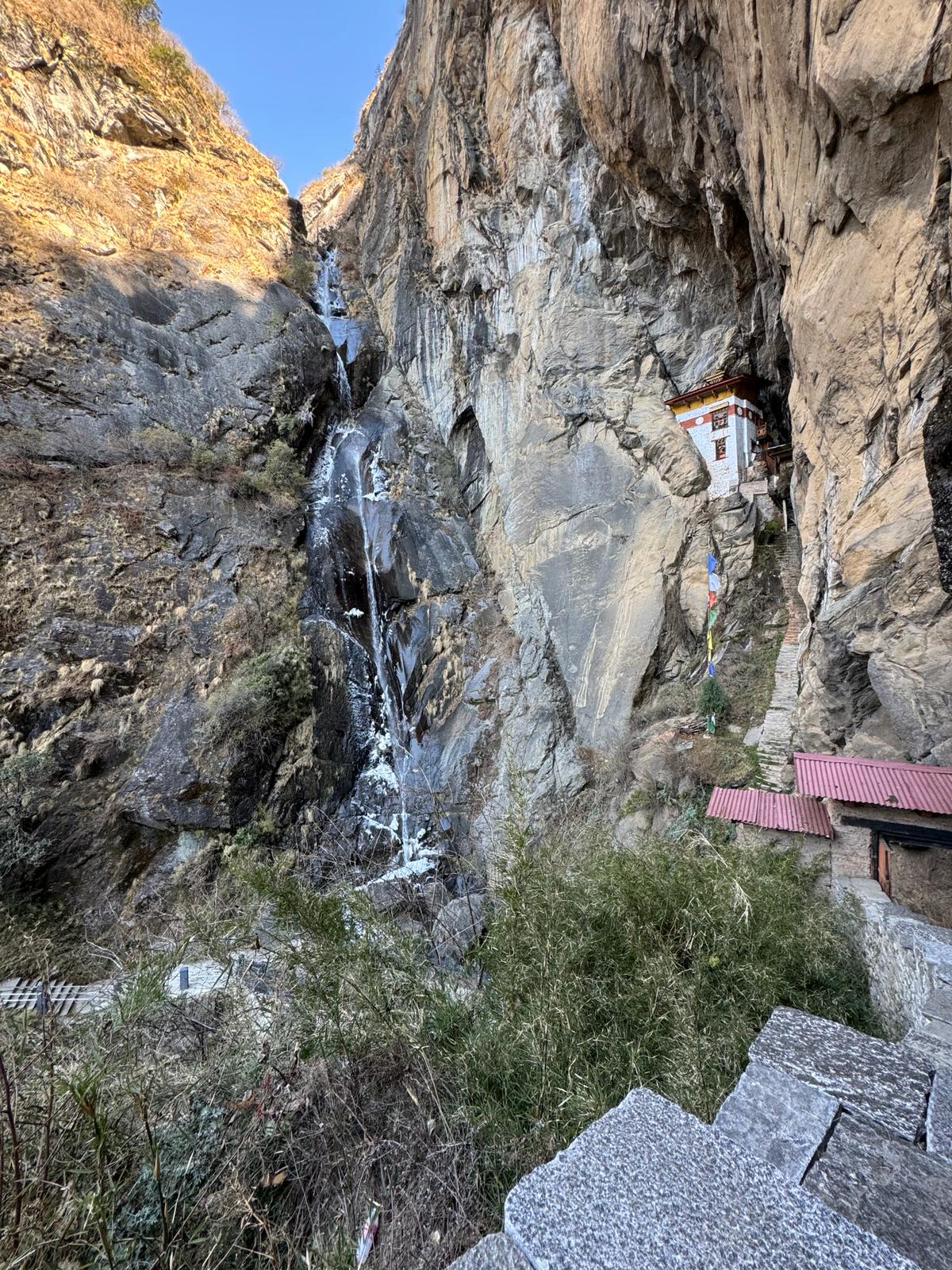
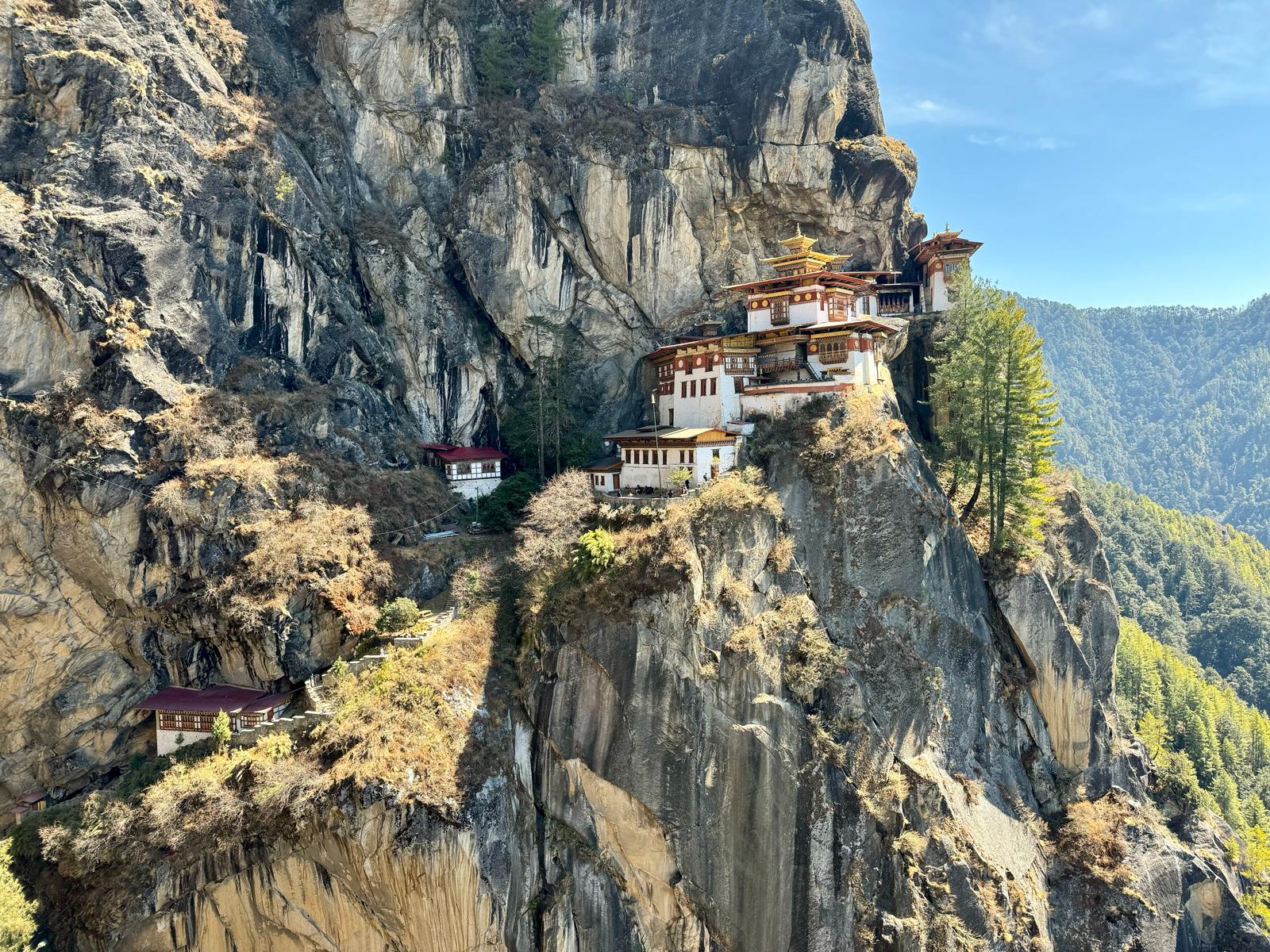
Arriving at the temple we had to leave our bags, phones and cameras in the lockers before we were able to enter the complex. It is such a shame as the complex itself is impressive and some of the views back across the temple’s gold embellished, pagoda-style roofs were magnificent.
Chime led us, in stockinged feet, through 5 of the 12 or so temples in the building, stopping to prostrate himself in each one and explaining the meanings of some of what we were seeing. In the second temple we watched while he rolled some dice to determine something of his future. The first roll was not good so he went to the monk, seated in the temple, for cleansing, before rolling again. Happily the second roll had a better outcome. Apparently they are allowed to roll up to three times. Some of the icons in the temples are really impressive.
Exploration of the temple over, we started back the way we had come. I think perhaps the toughest part of the whole walk is the climb back up the steps on the opposite side of the valley but we maintained our slow and steady pace. I am glad we set off early as we started to pass large groups of people making their way up, some carrying babies or infants up to be blessed. Apparently once you have visited the temple even once, you will reach enlightenment, either in this life or a future one.
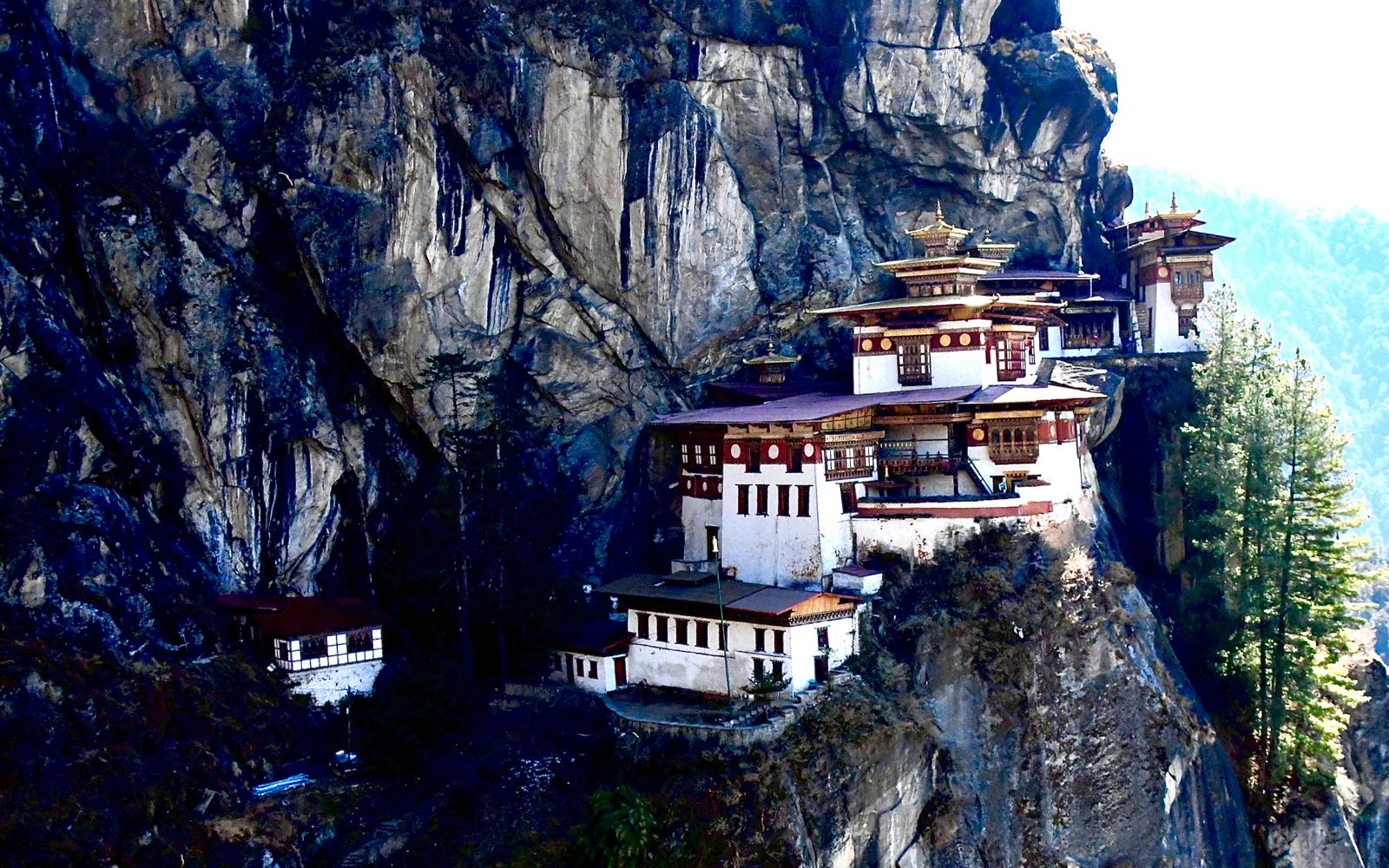
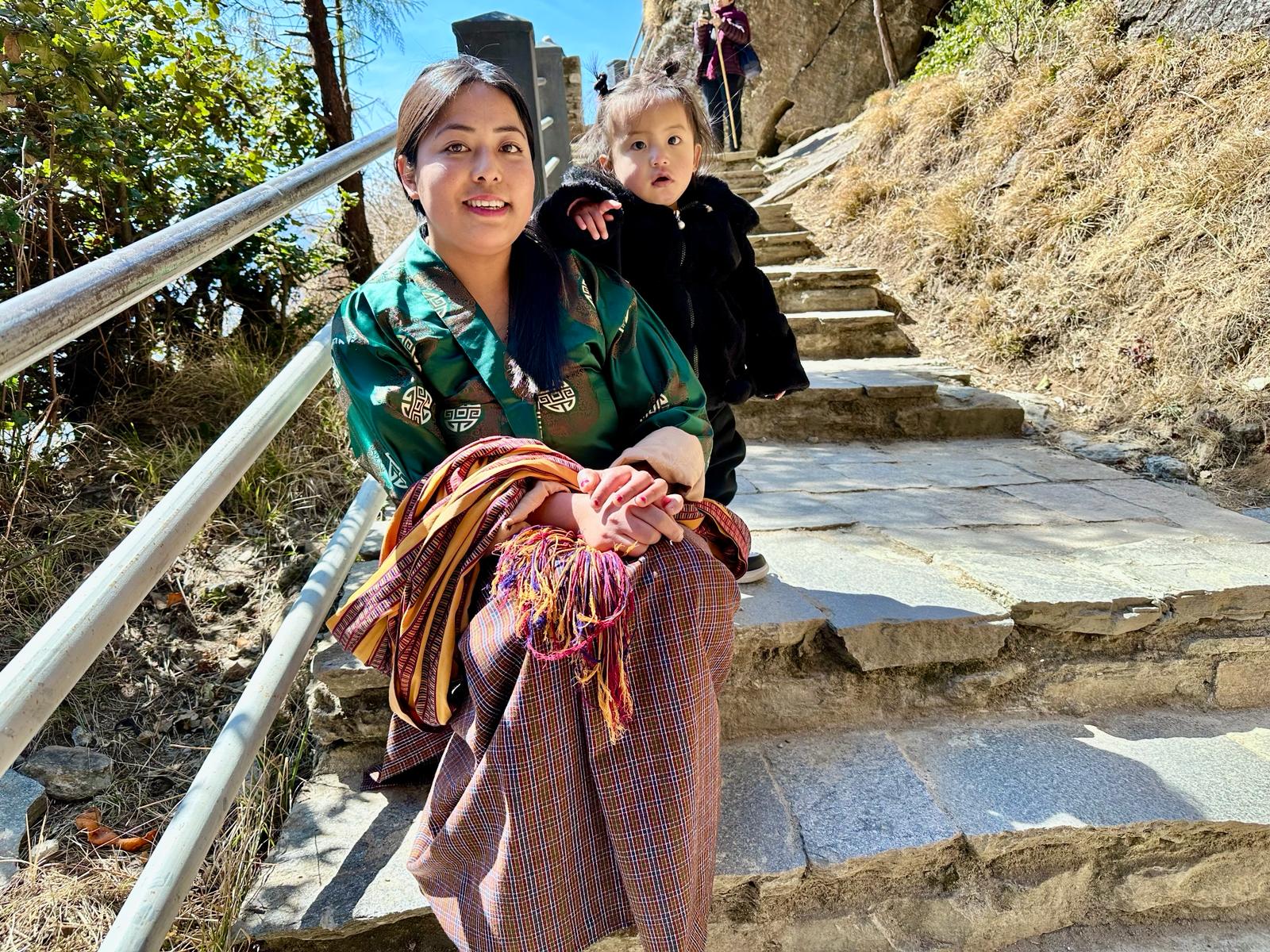
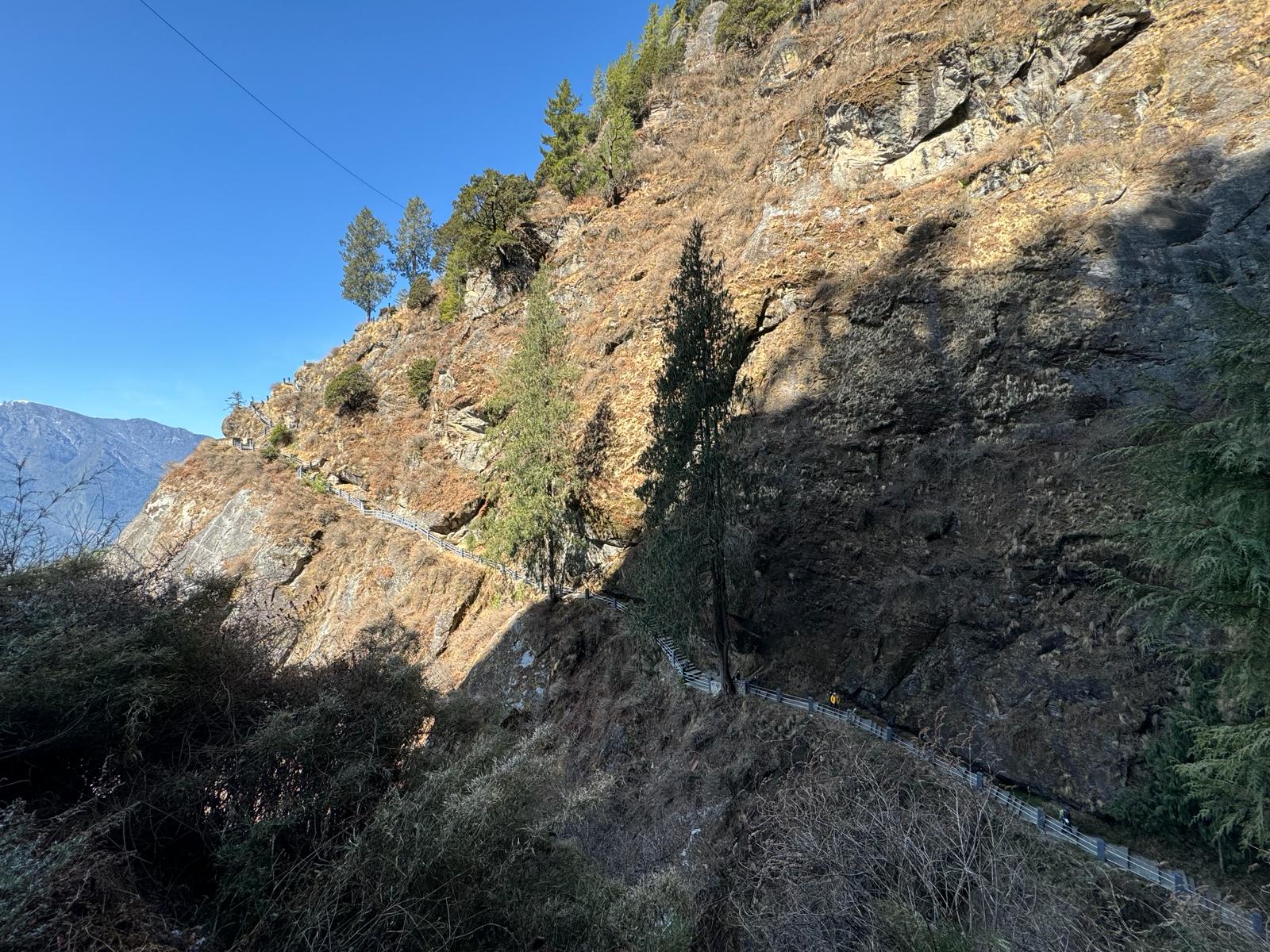
At the highest point we stopped in a small shelter and enjoyed the lunch that had been prepared for us at the hotel and carried up the track by Chimi and Singye. They really look after us and go out of their way to ensure we are comfortable. Both have been working in the industry for a very long time, are well educated and provide great information without overwhelming us.
After lunch we made our way slowly down to the car, passing many mules, still saddled up about halfway up after dropping off their ‘loads’. We arrived back at the car just before 2pm and headed back to the Six Senses Paro property. This hike was a fantastic experience. The photographs really don’t do it justice at all.
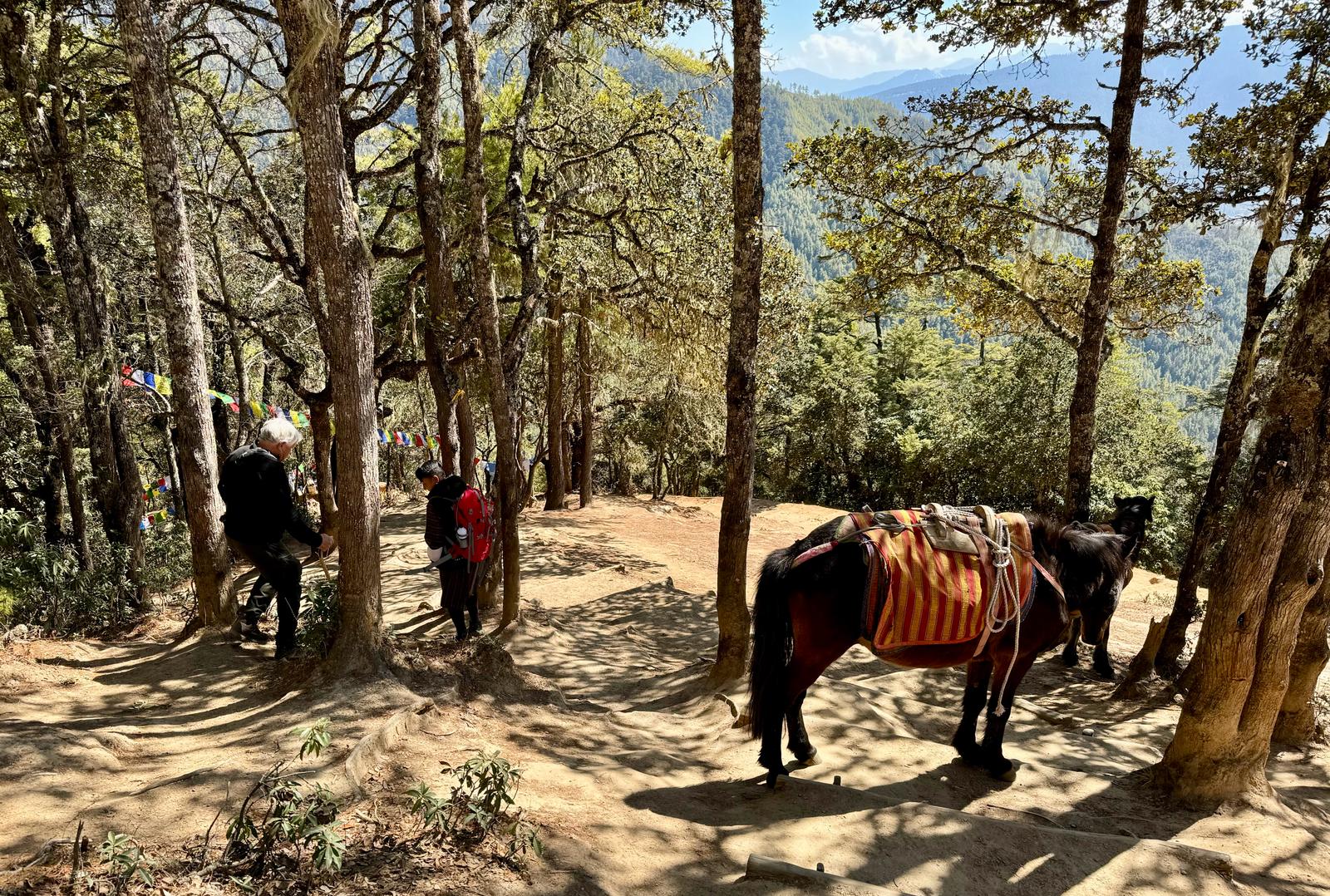
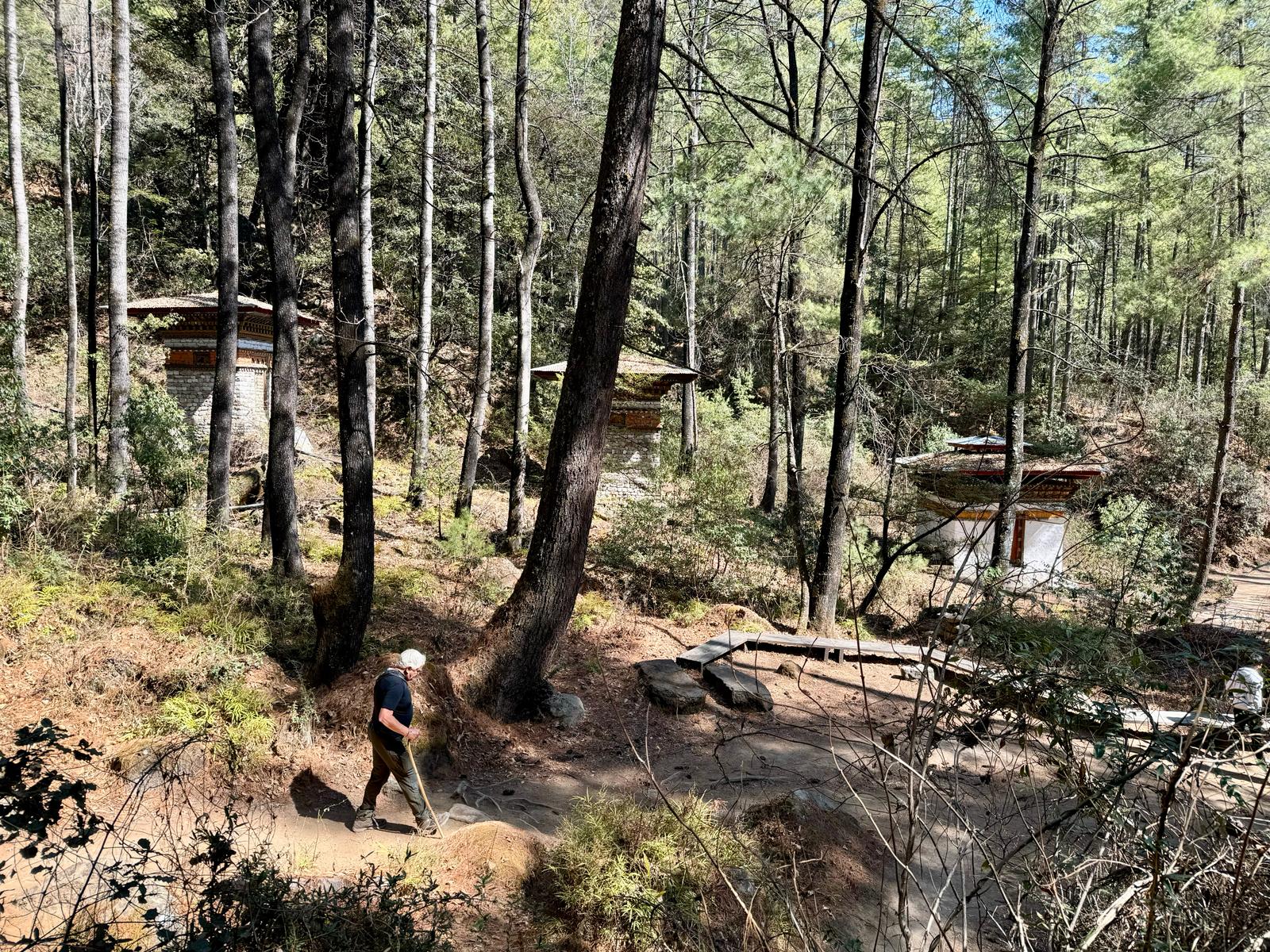
On the way to the hike in the morning we had seen two men prostrating themselves along the side of the road, probably on a pilgrimage to somewhere. They were still making slow progress when we headed back. Arriving back at the hotel we were met by the lovely staff, who informed us that because we had just done the hike we would receive a 15 minute foot massage. What a lovely surprise! We were seated in the lounge area, served a delicious glass of hibiscus lemonade, our shoes and socks were whisked off for cleaning and our tired feet were pampered. We had already booked 90-minute massages at the spa and they accommodated us a little early, which was super nice. A great way to ease the aches and pains.
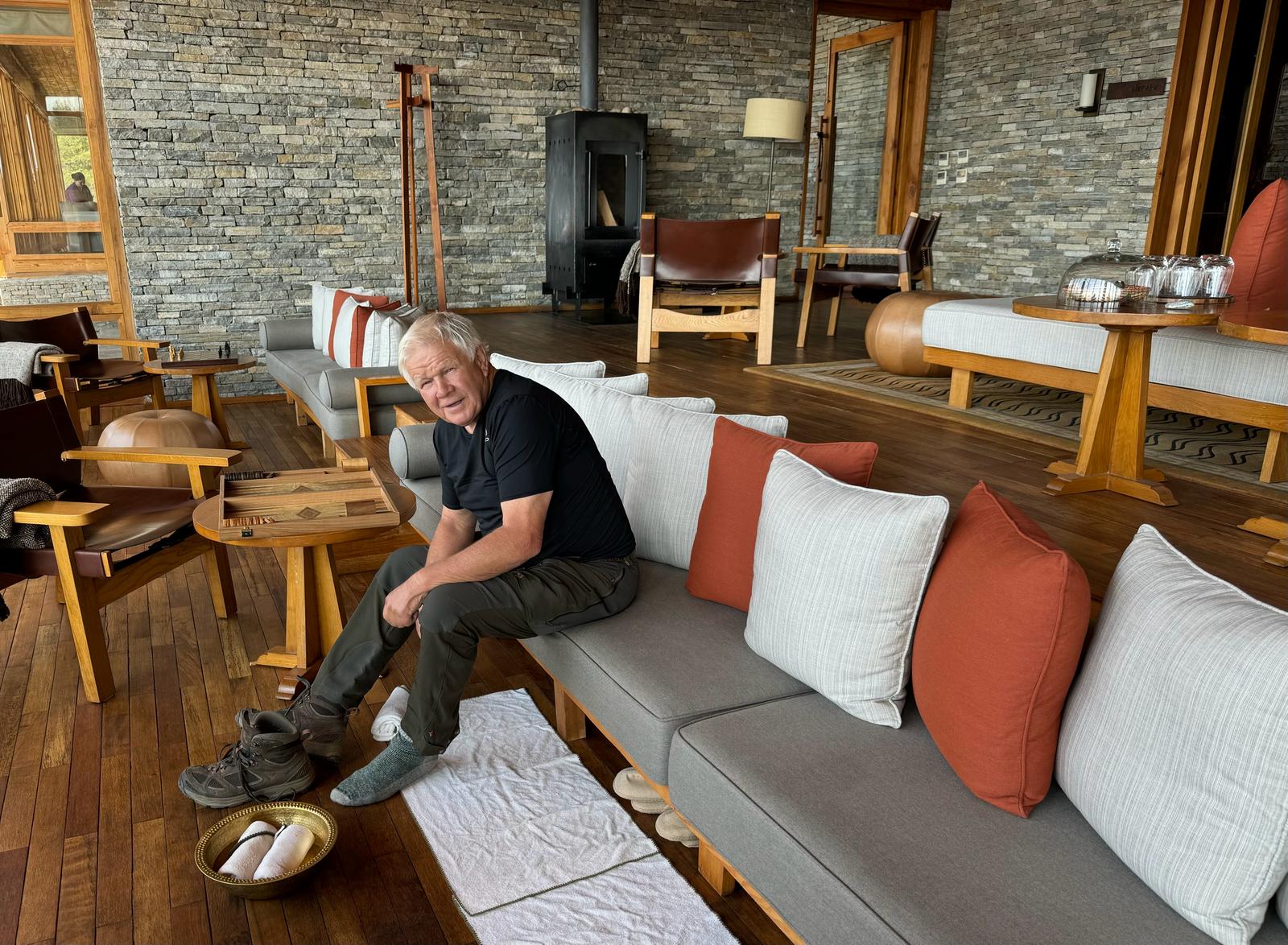
After the massages we enjoyed a delicious meal in the hotel dining room before retiring to our room to edit photos, catch up on the blog, and relax for the evening. We have been incredibly impressed with the service orientation here. Nothing seems to be a bother and someone seems to anticipate our every need. And it is not just the outstanding staff here at the Six Senses. Even the staff at Immigration were friendly and welcoming, something I have not experienced to the same extent anywhere else in the world. I am definitely a fan of Bhutan and its people.
Monday 26 February: Paro – Roger
We had a late start this morning with Chimi and Singye meeting us at 10am. We headed off down the rather bumpy dirt road to where the tar seal starts, which just happens to be where the National Museum of Bhutan is.
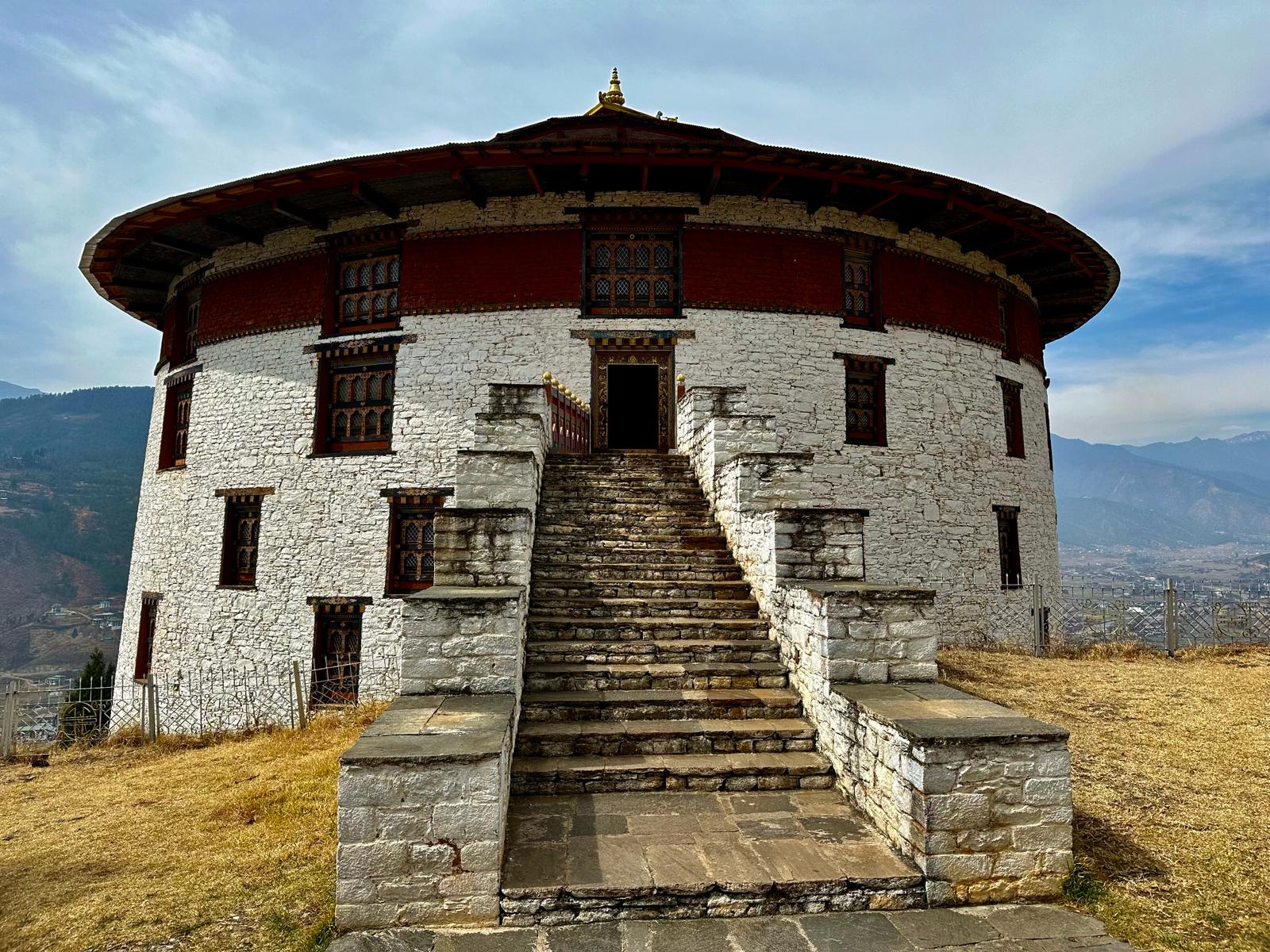
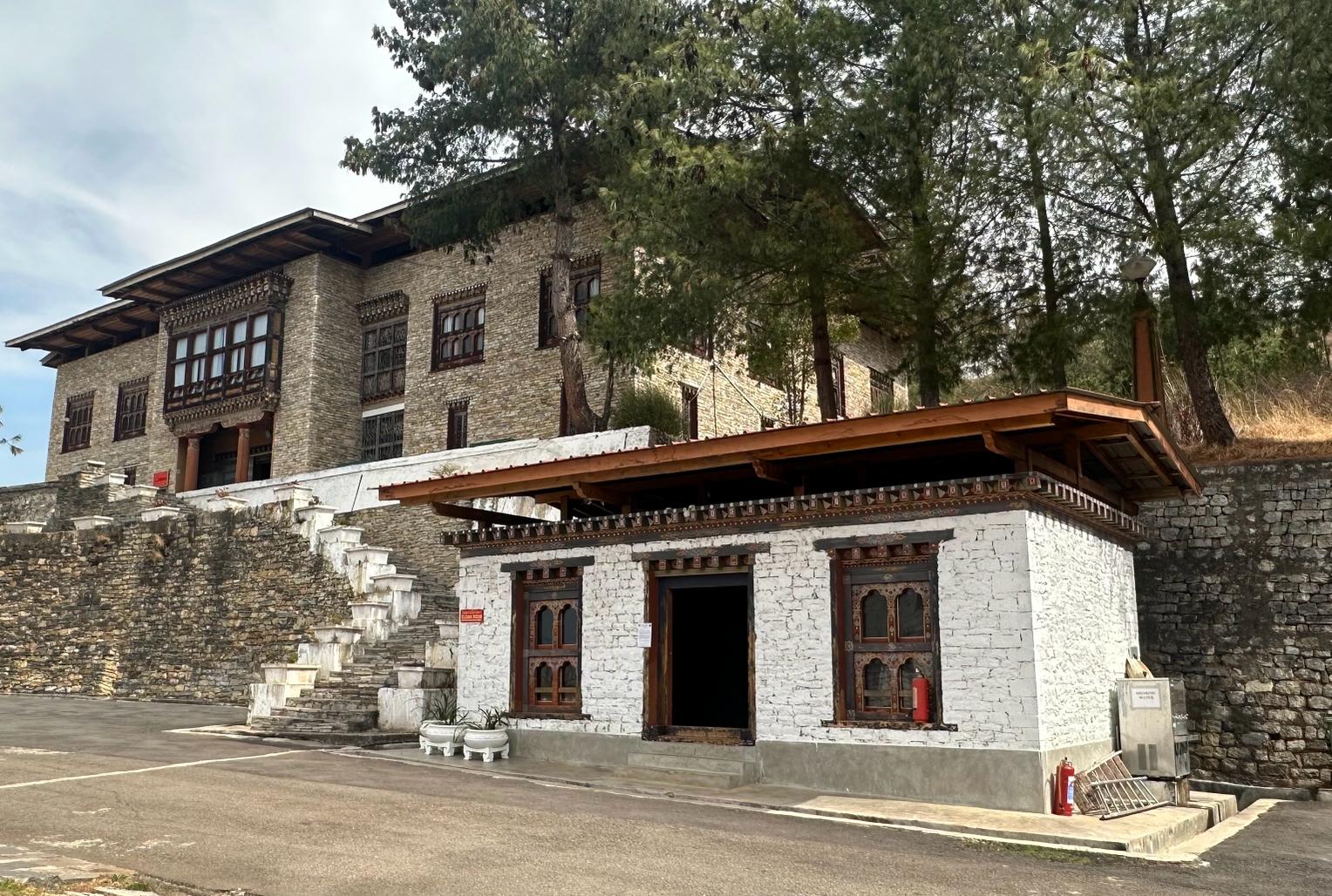
Understanding what goes on here with Buddhism and how it all came together is quire difficult, despite Chimi’s patient explanations, as it is made up of numerous buddhas, lamas, other enlightened beings and royalty. So I am going to quote a little bit from Wikipedia. “The consolidation of Bhutan occurred in 1666 when Ngawanag Namgyal, a lama from Western Tibet, known as the Zhabdrung Rinpoche, defeated the three Tibetan invasions, subjugated rival religious schools, codified the Tsa Yig an intricate and complicated system of law, and established himself as the ruler over a system of ecclesiastical and civil administrators. After his death infighting and civil war eroded thee power of the Zhabdrung Rinpoche for the next 200 years. In 1885 Ugyen Wangchuck was able to consolidate power and began cultivating closer ties with the British in the sub-continent.” His family still rules to this day with the current king being the fifth. It was in 1972 that Jigme Singye Wangchuck, the father of the current king ascended to the throne. He developed the Gross National Happiness philosophy that guides a lot of Bhutanese life today.
After having our cell-phones removed at the ticket office we ascended the steps into the cylindrical building, which houses the national museum artefacts. There were stone axes and knives dating back to ±2,000 BC, which shows that man has been hanging around here for a while. There was a huge amount to take in as we passed various types of Thanga paintings, then came to a couple of shrines, the first of which was four sided, with numerous depictions of Buddha and other enlightened beings, each of which was numbered. Chimi patiently explained as Sylvia asked a number of questions, with most of the answers going right over my head. During my 30-odd years of studying karate I had come across the Buddhist ways and been to a number of Buddhist meditation centres, both in NZ and in the US, but I find the Buddhism here to be much more detailed and sincere, The attention to detail in their shrines compared with others I have visited in various parts of the world is much more particular.
The path led us up little stairways andd through little passages, passing all sorts of artefacts, until we started to descend, passing areas, on clothing, stamps, coins, royalty, and royal costumes. One little circular alley we went through was full of teapots – here one had to keep one’s head down as the ceiling was very low. There was even a section of matchlock long rifles and powdered-primed swivel canons. Eventually we popped out of the bottom of the building and wandered our way up the path to the ticket office, where we collected our phones. It’s really hard to describe these places accurately without having pictures.
From here we drove down to the Rinpung Dzong, or fort, which houses regional government offices and the monastic (religious) administration. Once again the attention to detail in this place is quite incredible. We wandered through courtyards and down stairways into the temple where the monks pray at the bottom of the building. Chimi, once again, explained the various statues and representations to us.
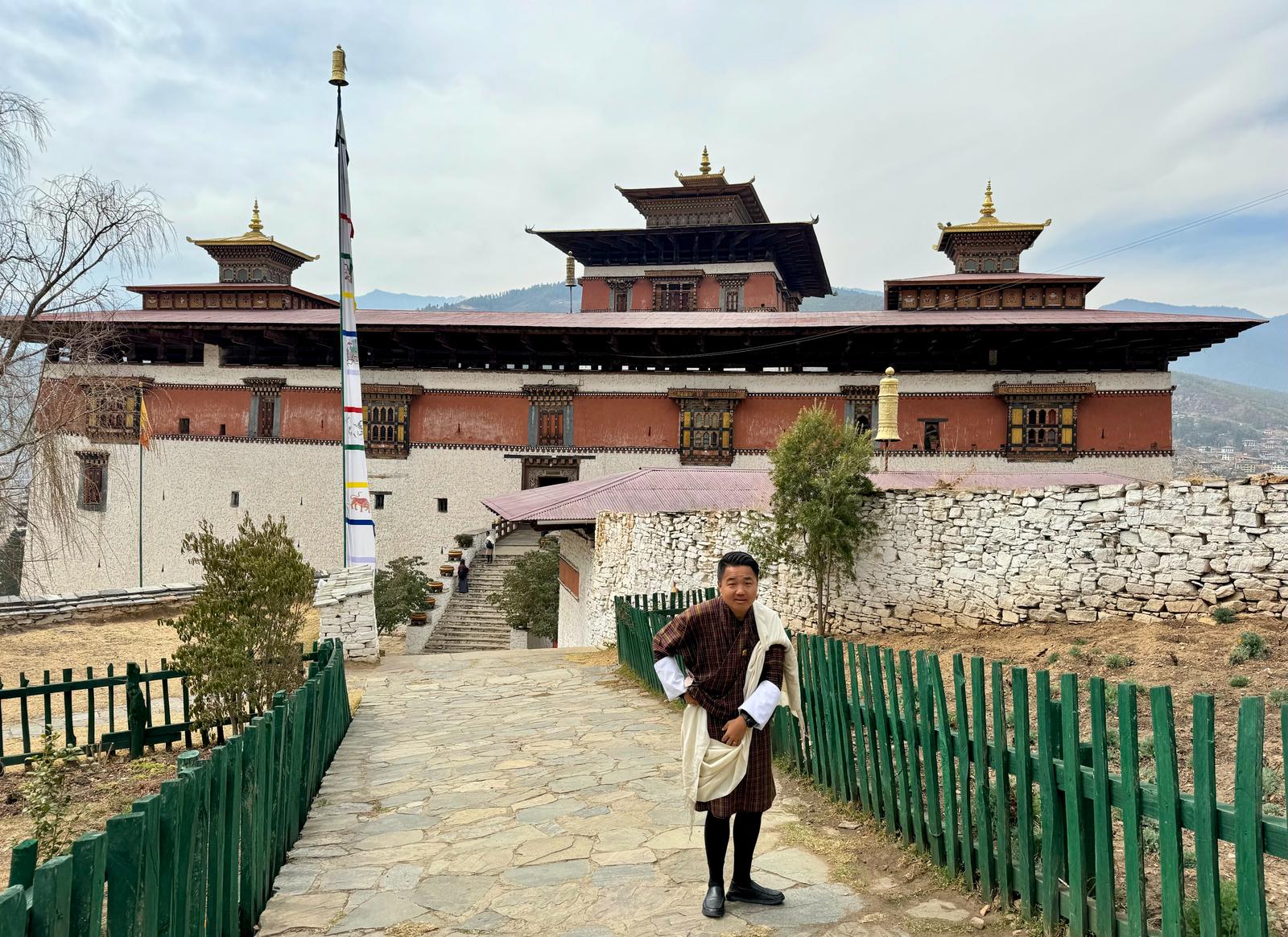
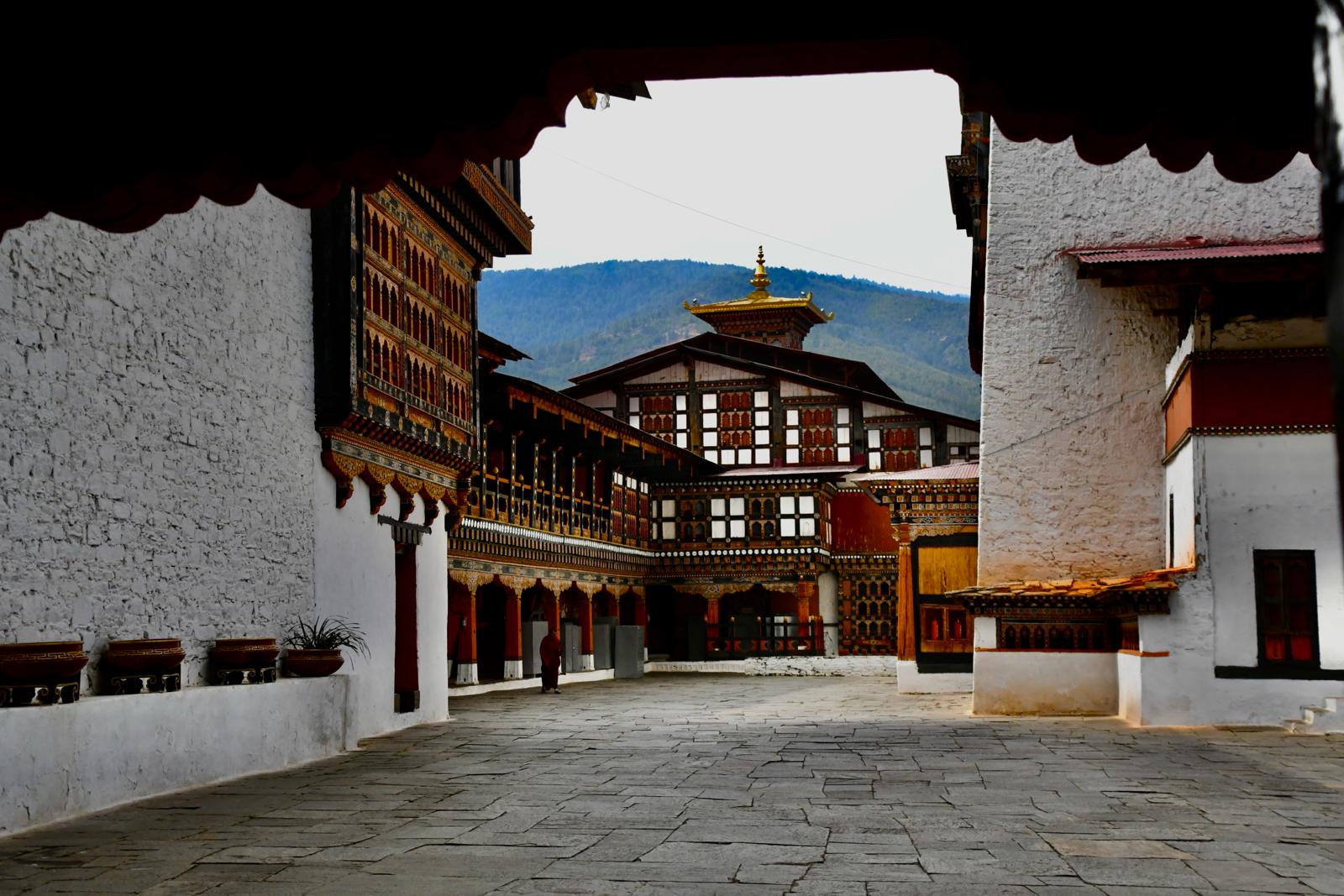
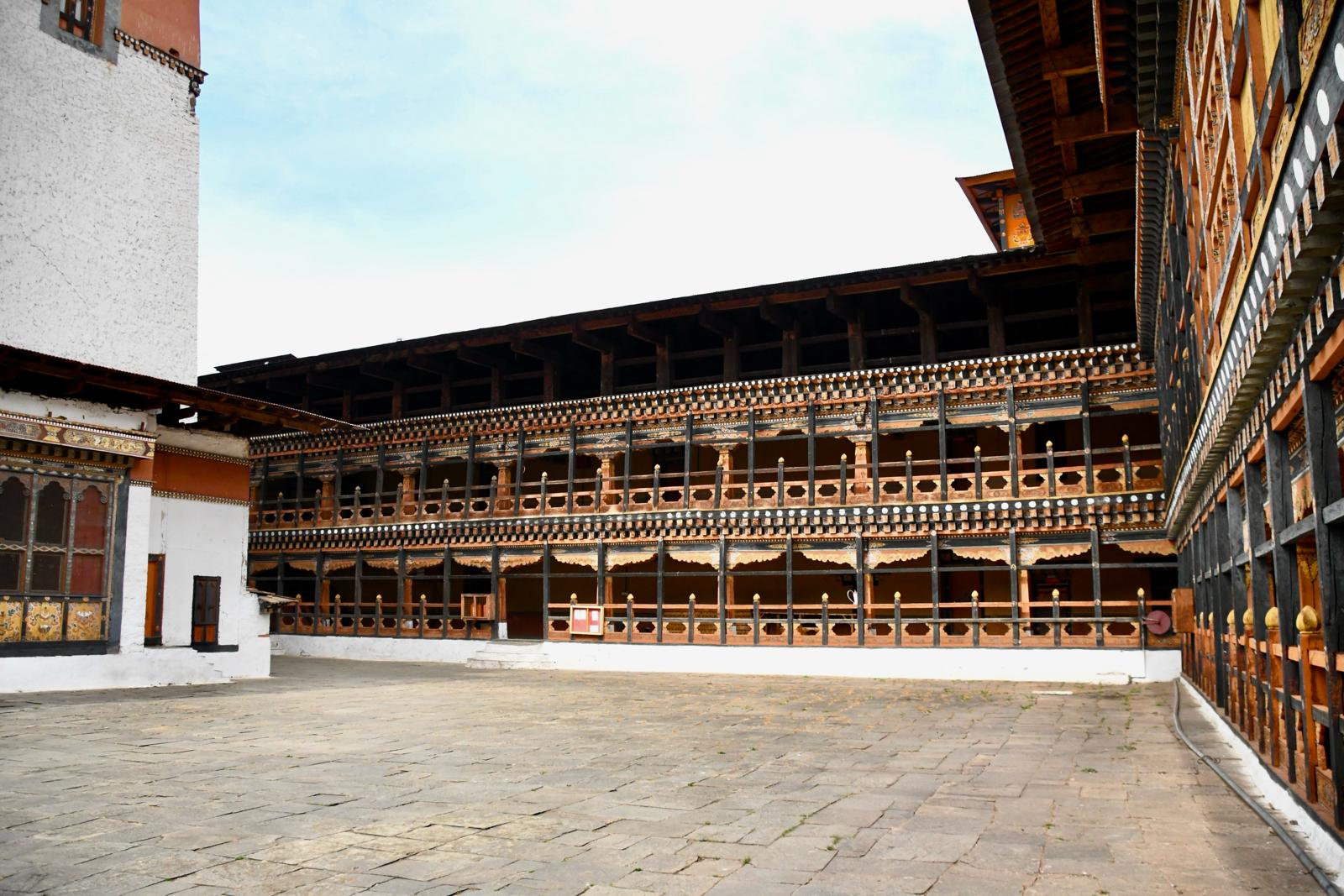
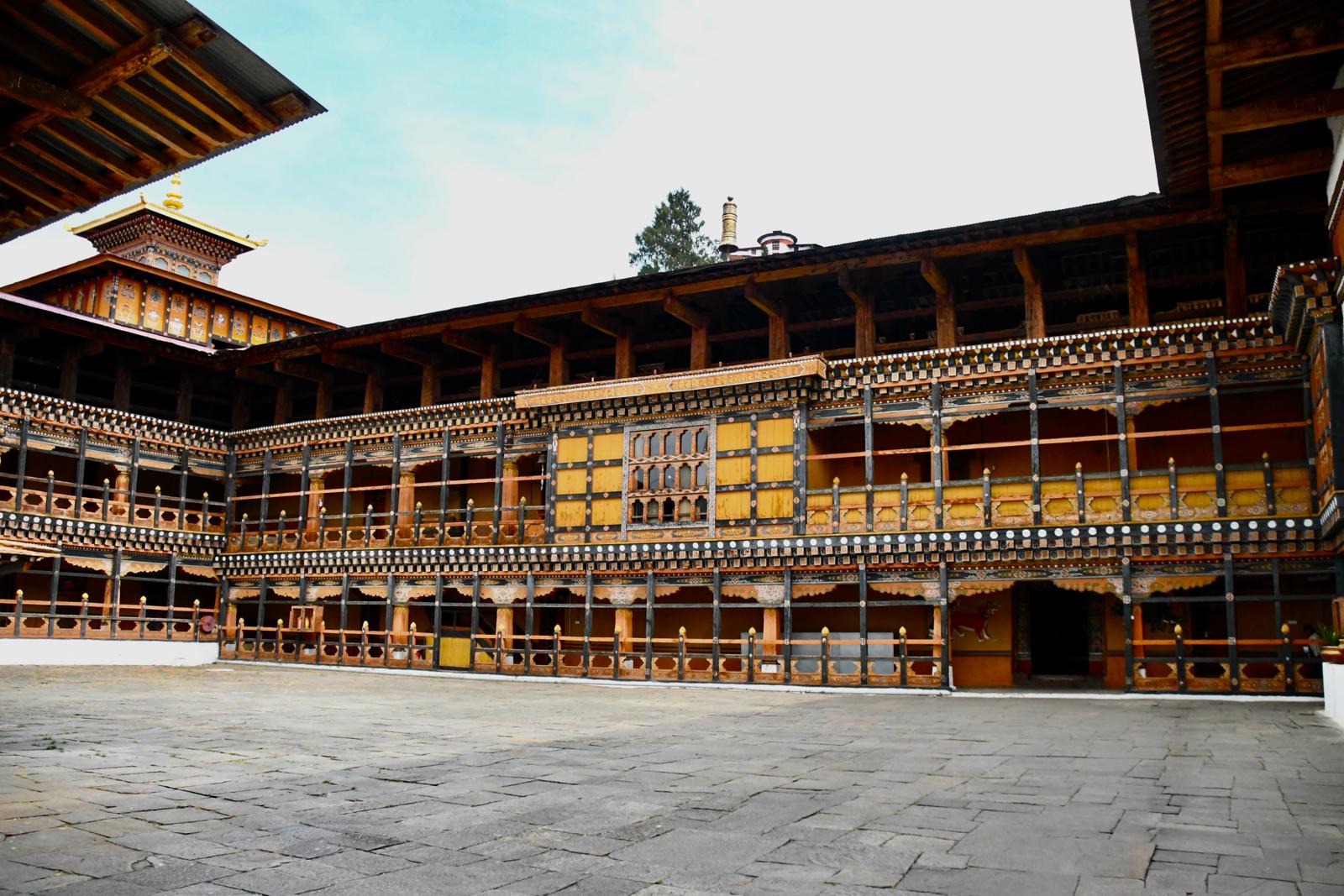
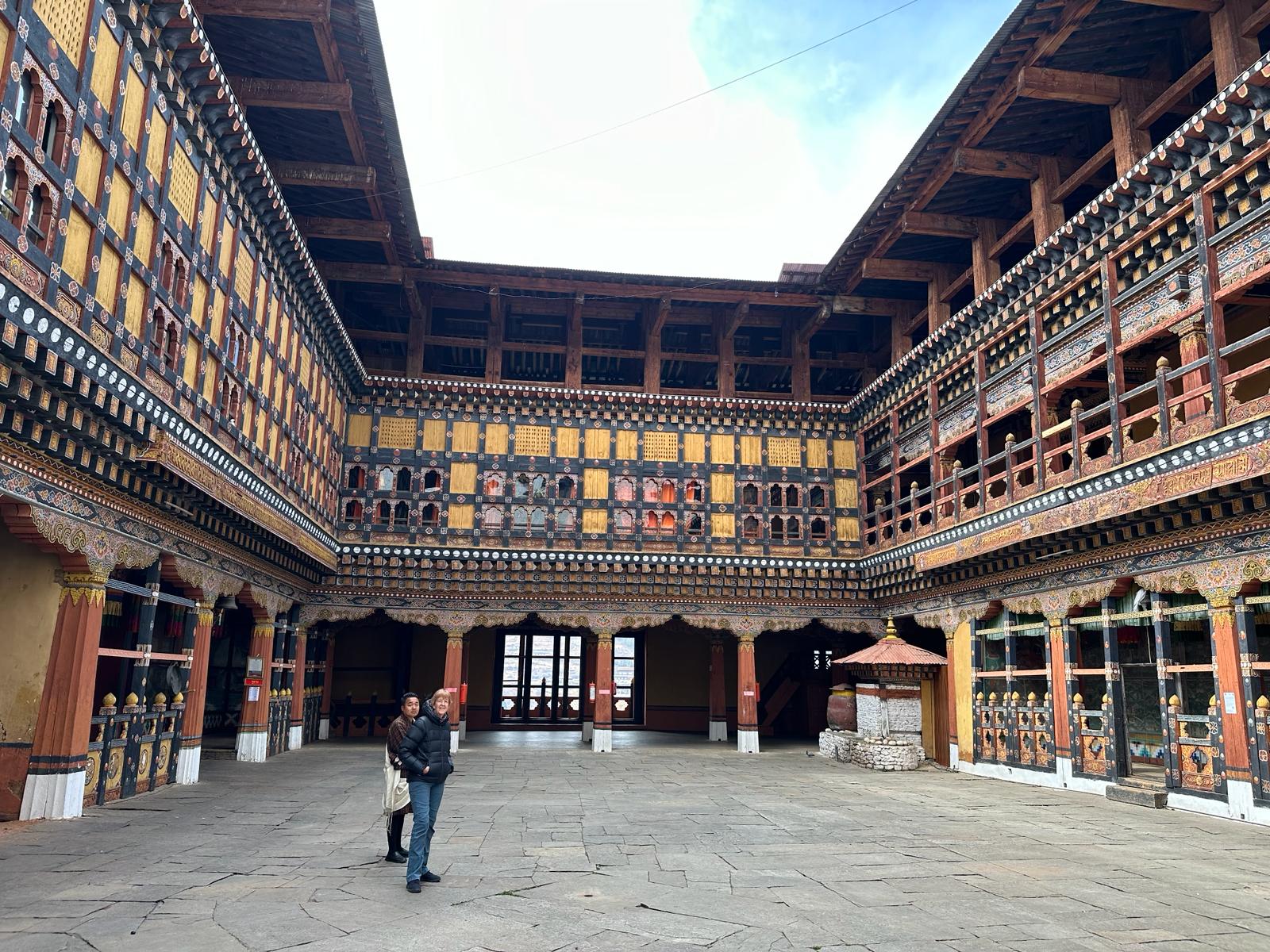
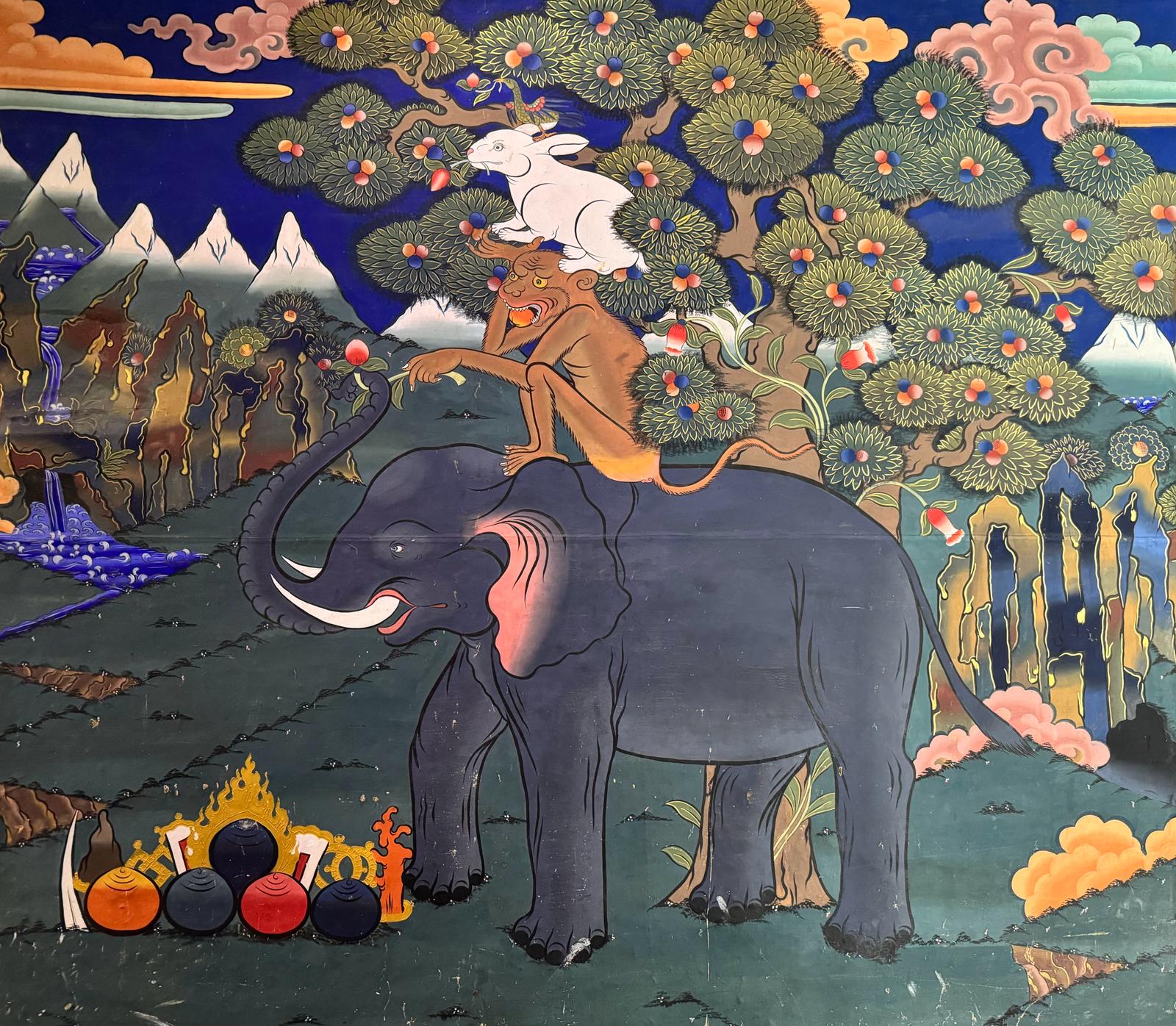
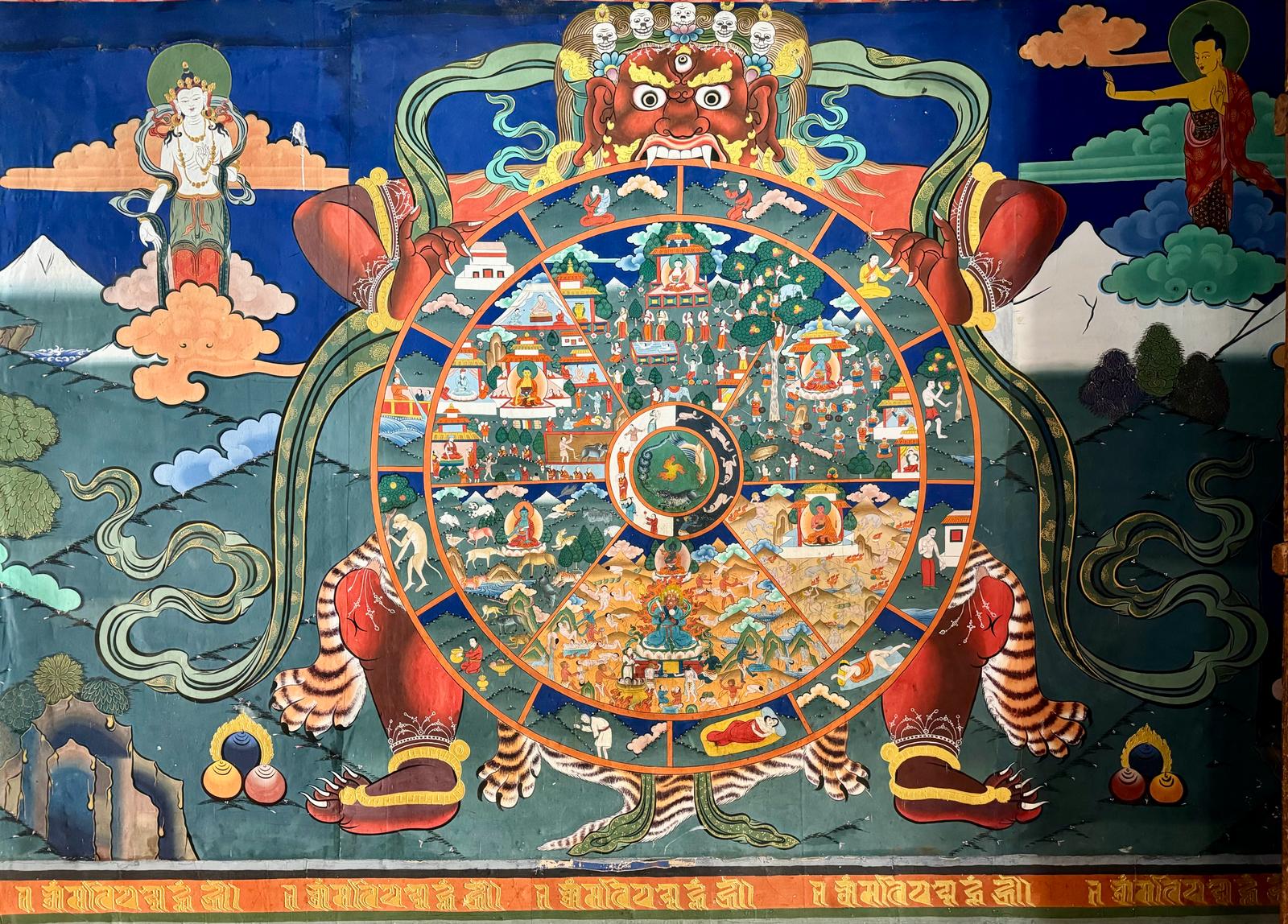
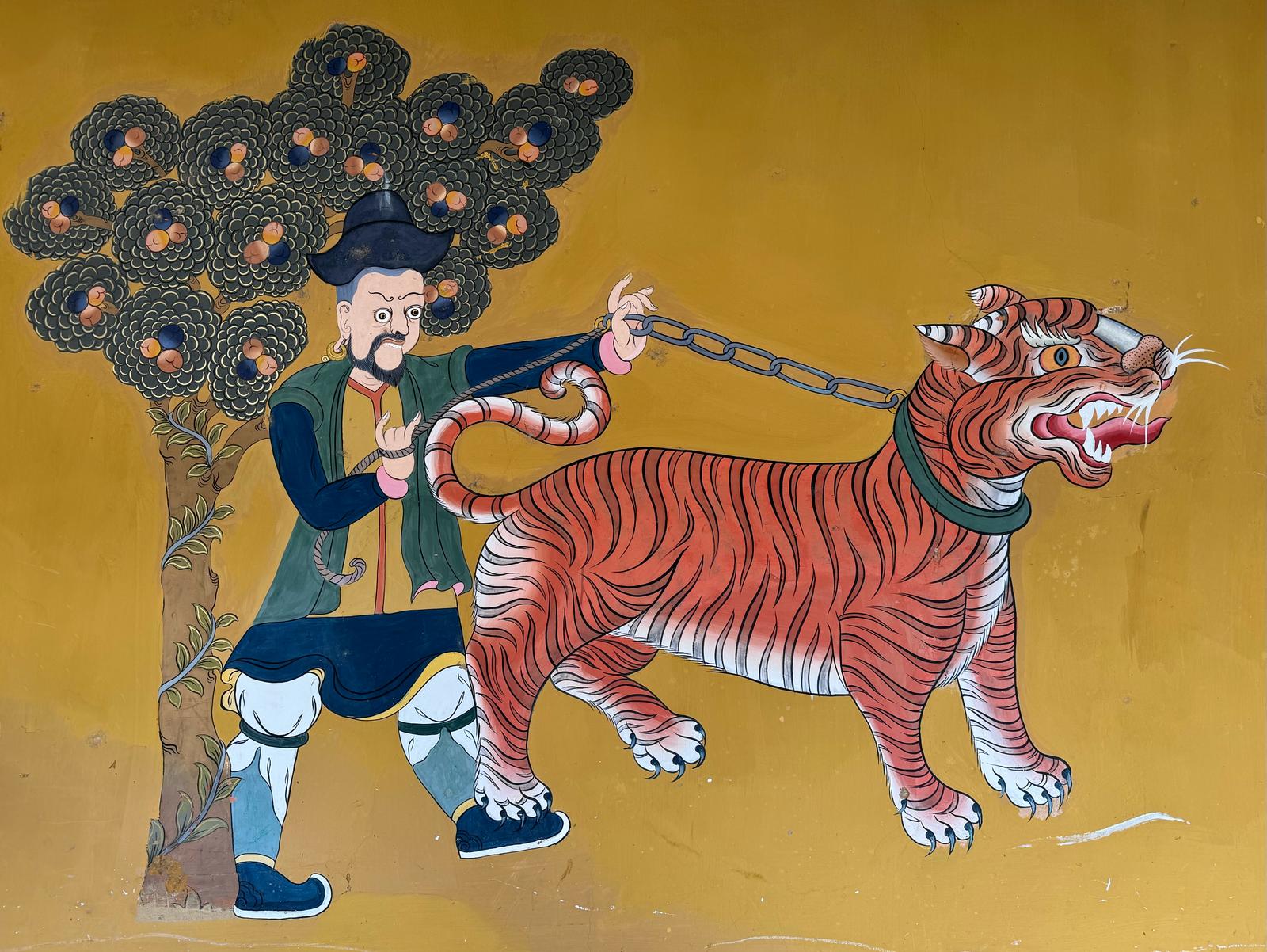
Feeling my knees after yesterday’s hike, I thought we may pop out the bottom of the building and head into the town. But no such luck. As we left the temple a bunch of young trainee monks, still in their childhood, raced around playing during their lunch break as we ascended the stairs back to the main entrance.
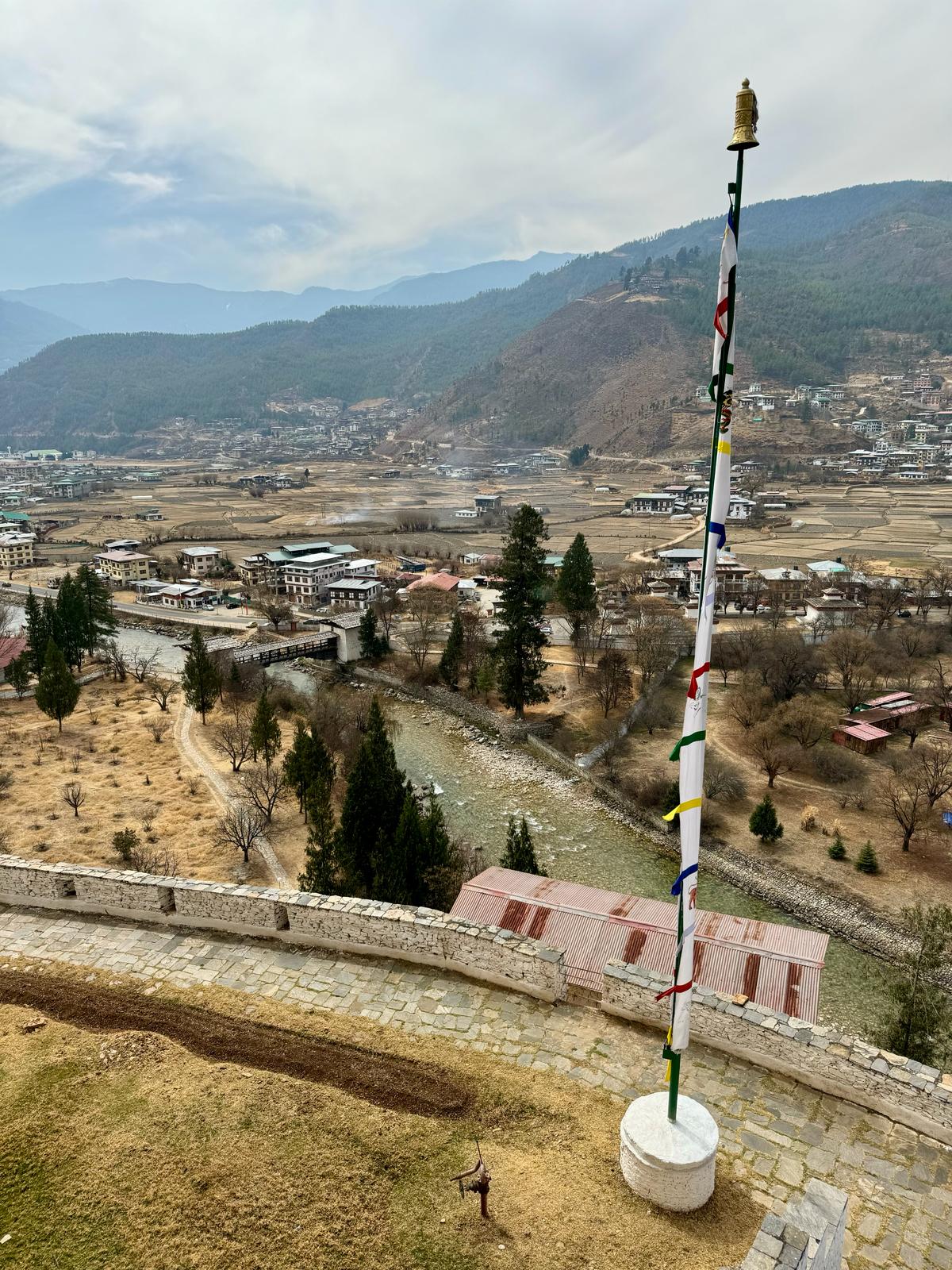
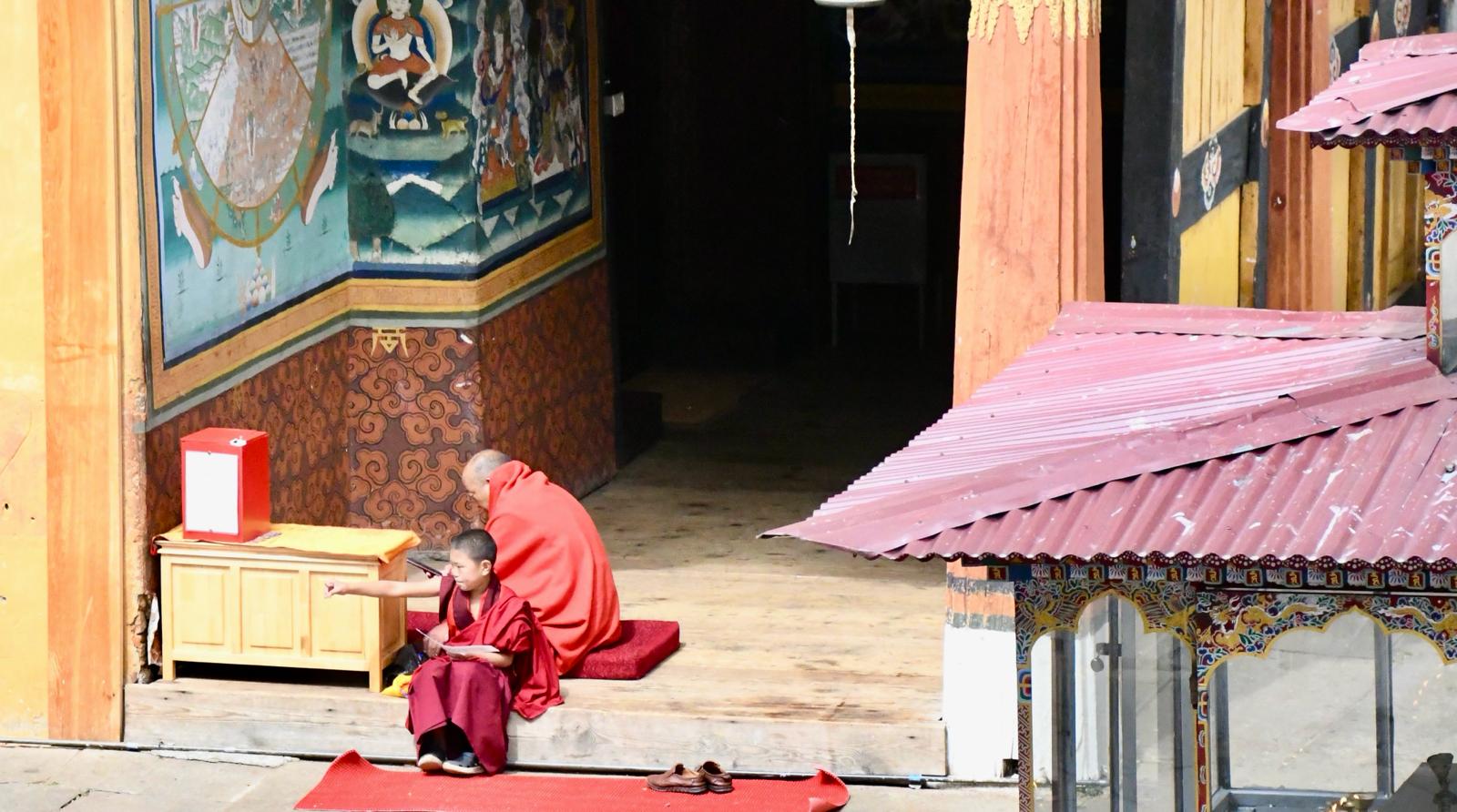
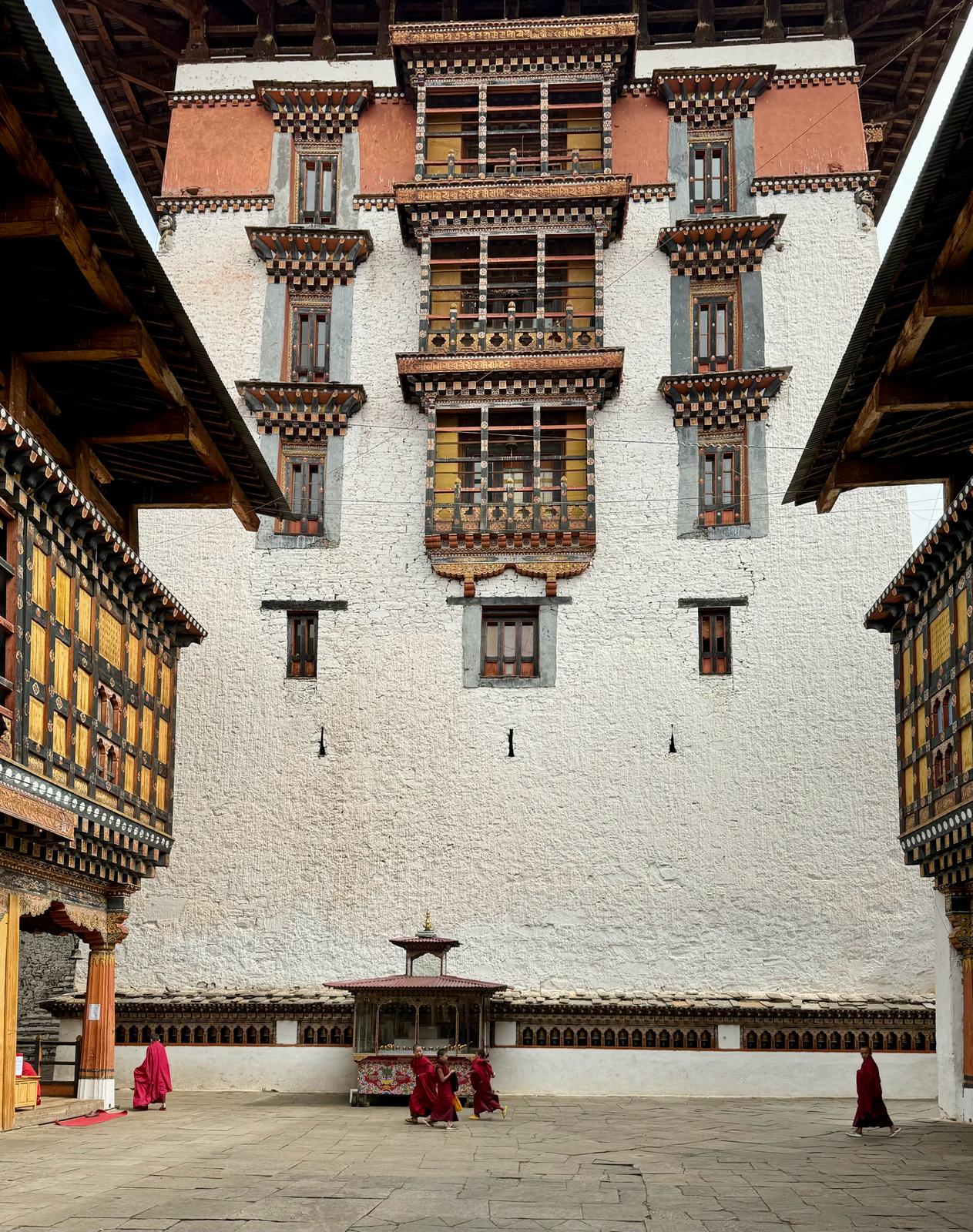
From there we took a stroll around the side of the Dzong on a gentle sloping path taking us to the Paro Chhu River and the Nyamai Zampa, an ancient traditional cantilevered bridge. Exiting the other side we were adjacent to five stupas, two large and three small, where Singye picked us up and drove us to Kyuchi Lhakang, which we had tried to visit a couple of days ago.
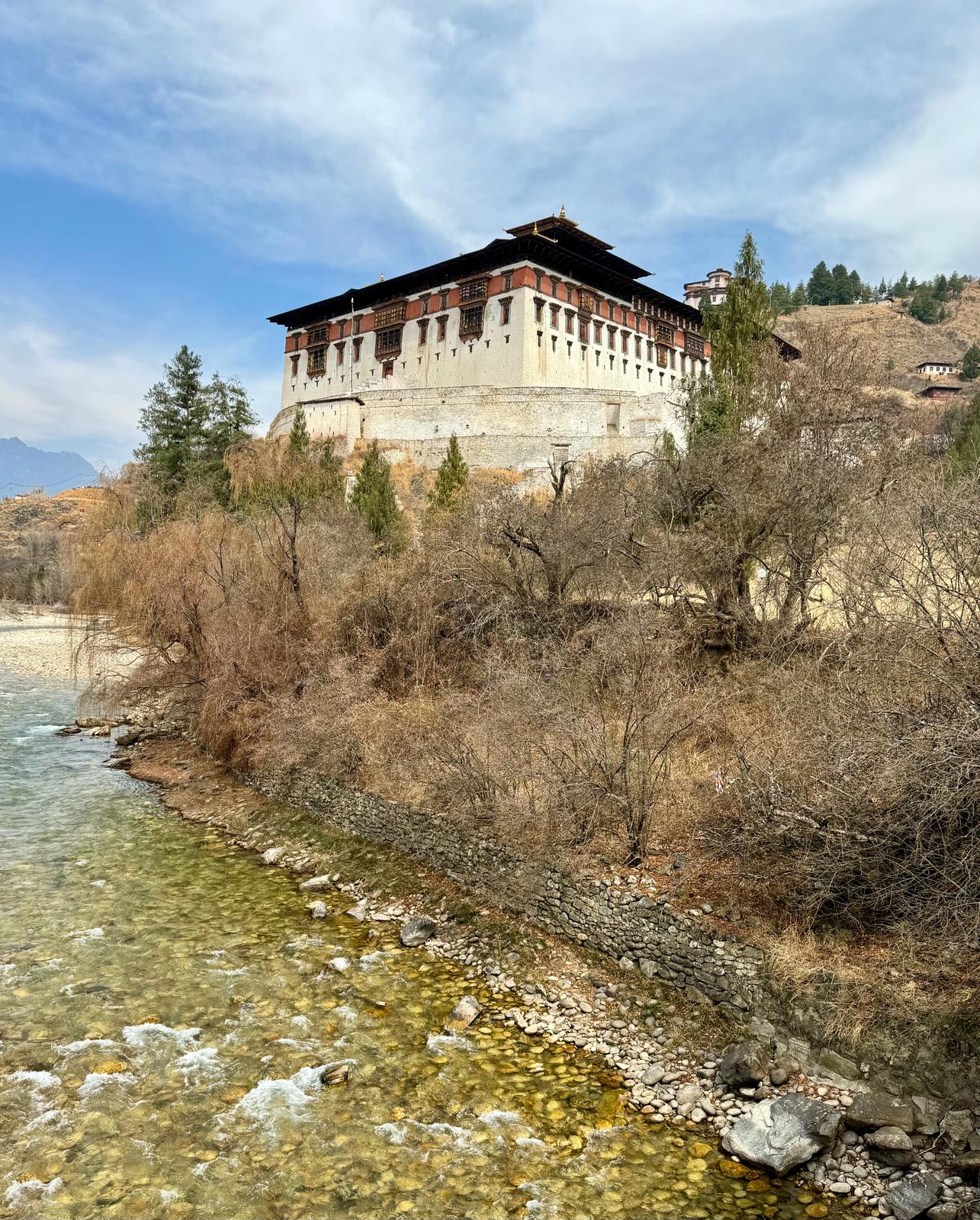
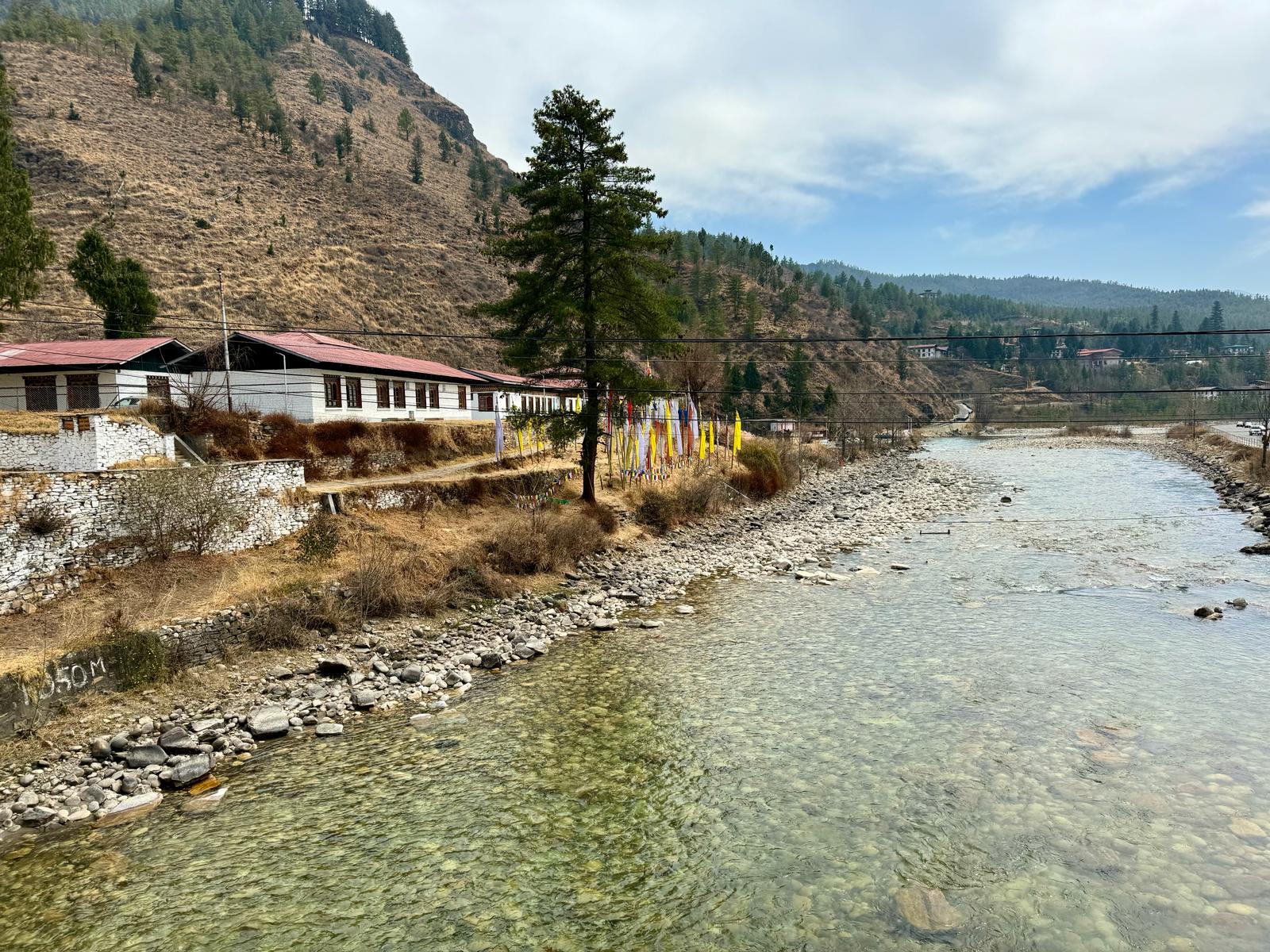
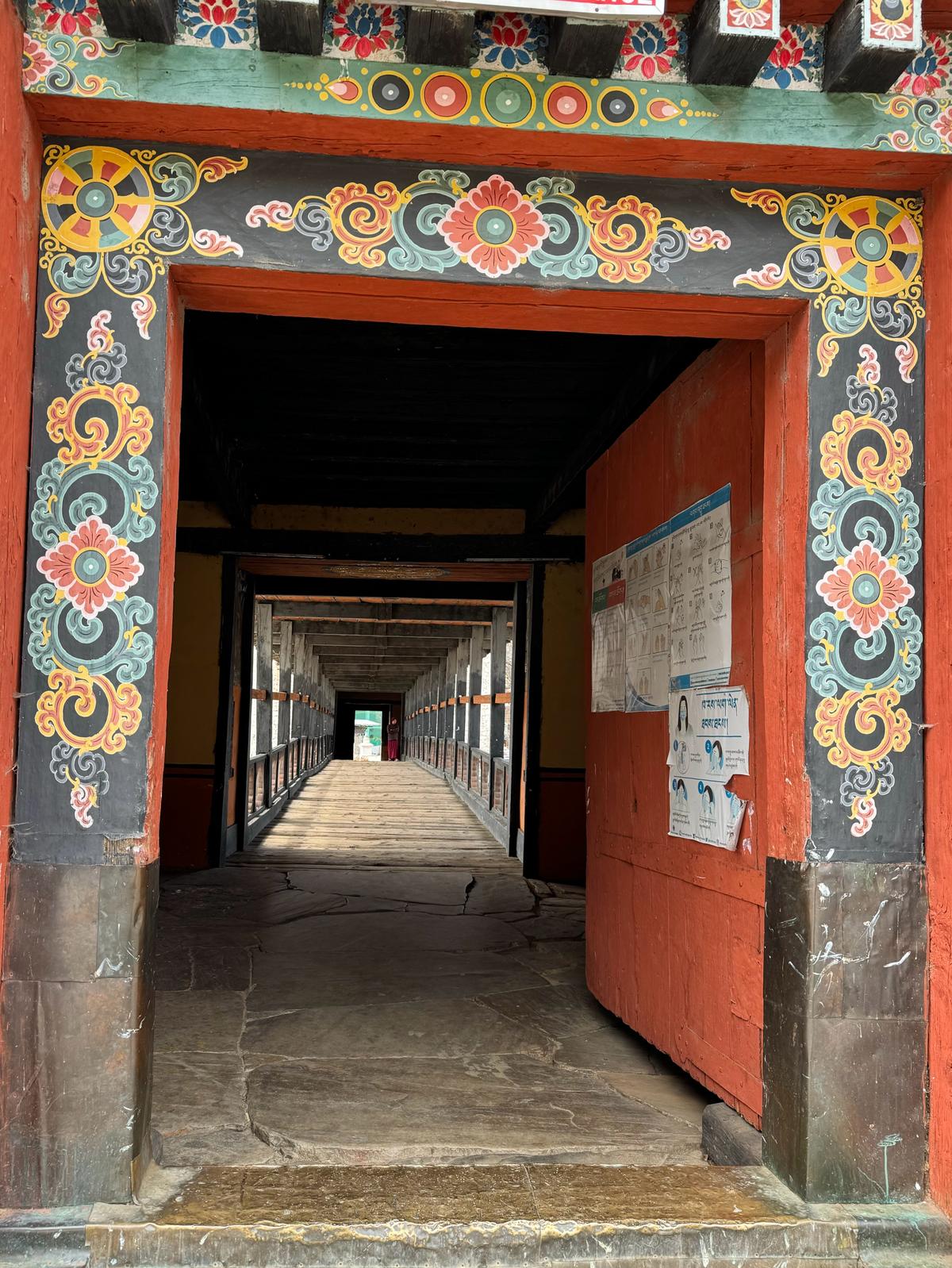
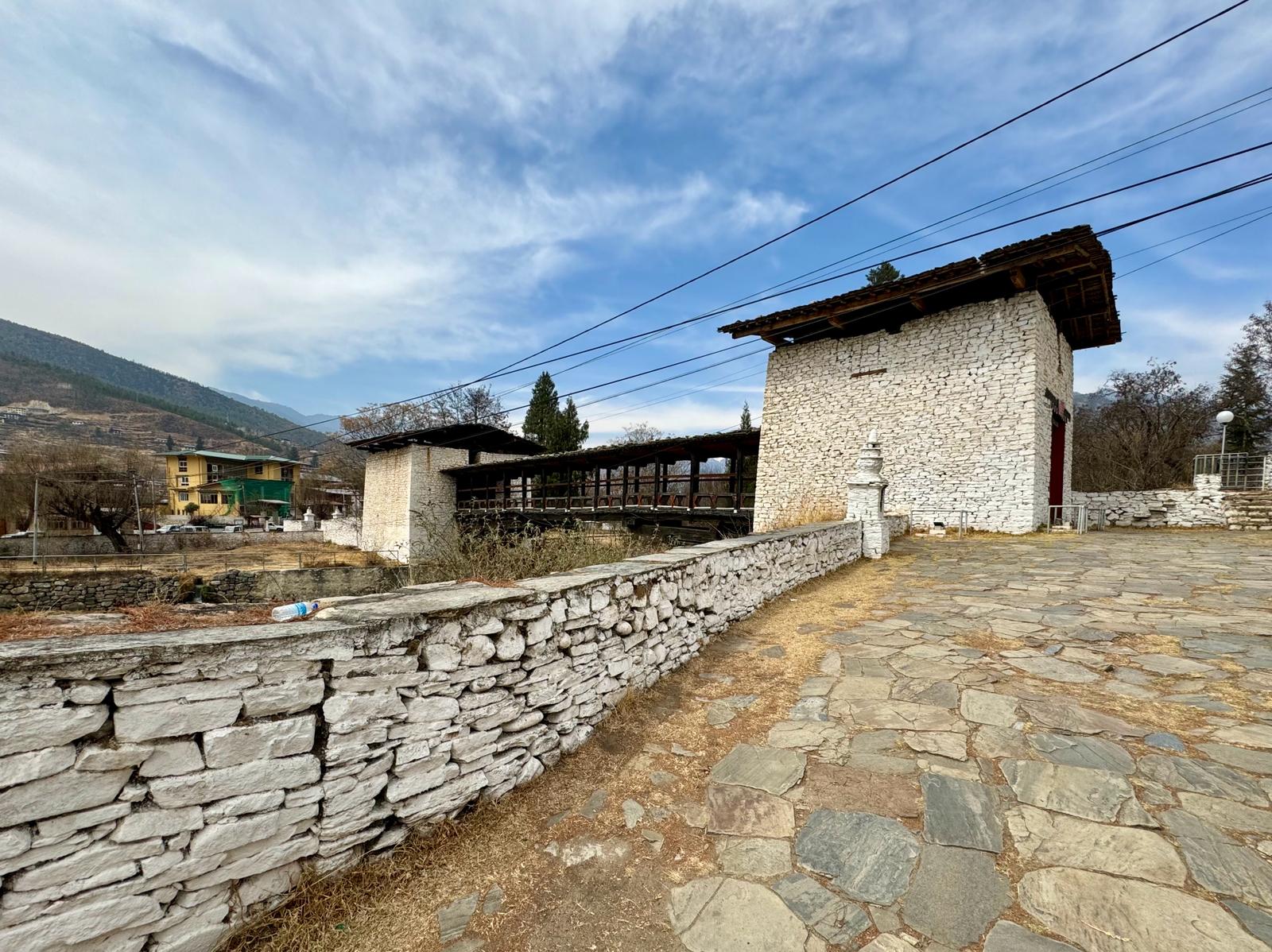
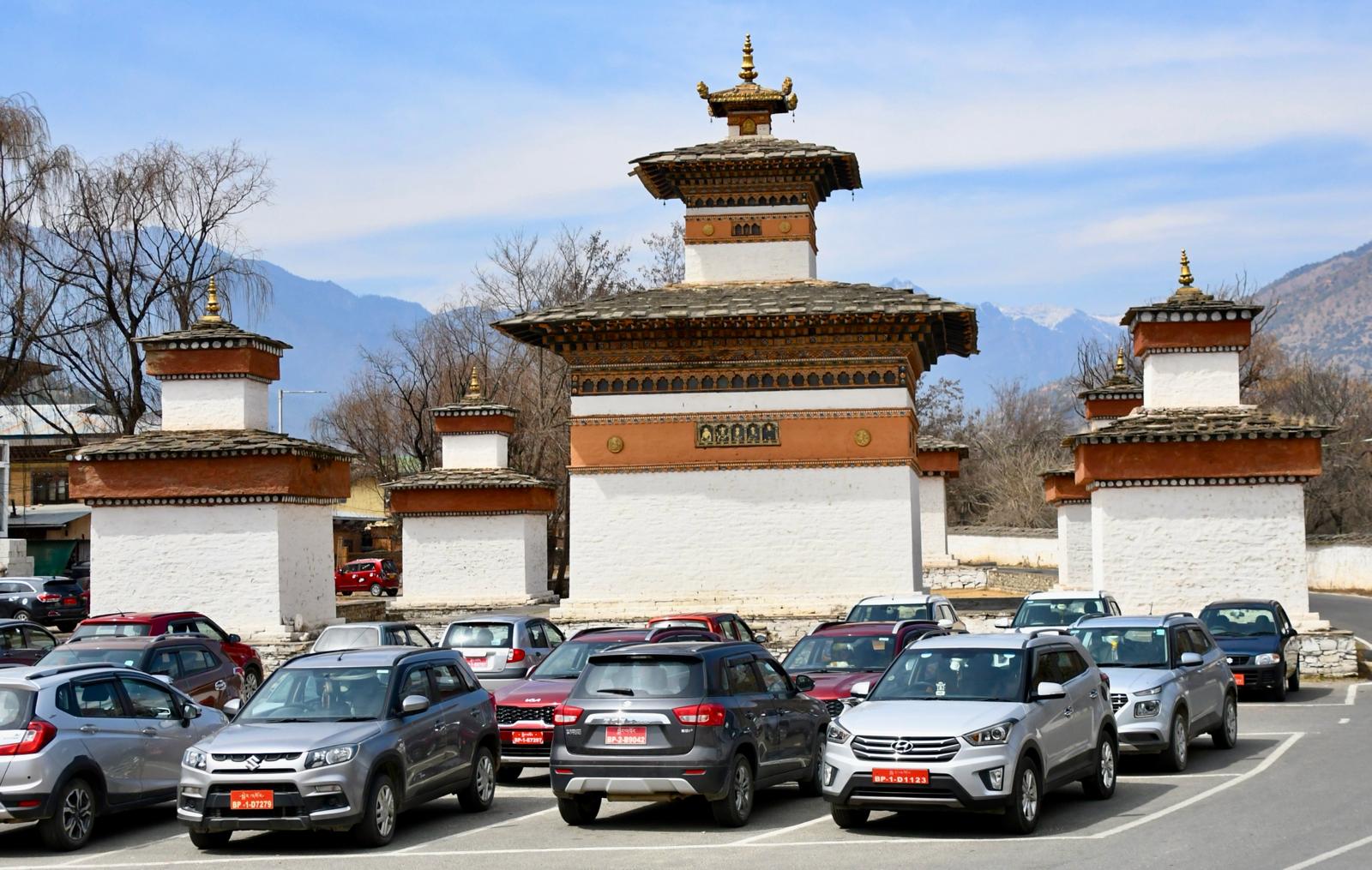
Established in the 7th century this is one of the oldest temples in Bhutan and has well manicured and laid out gardens, lots of prayer wheels and in the internal courtyard two temples, both of which we visited. It’s interesting to watch, because each time we enter one of these temples Chimi goes through. His prayer rituals and prostrations (getting down on his knees and touching his head on the floor and performing various other rituals). With the number of these we have visited over the last couple of days he should be right up there in the Buddhist good books.
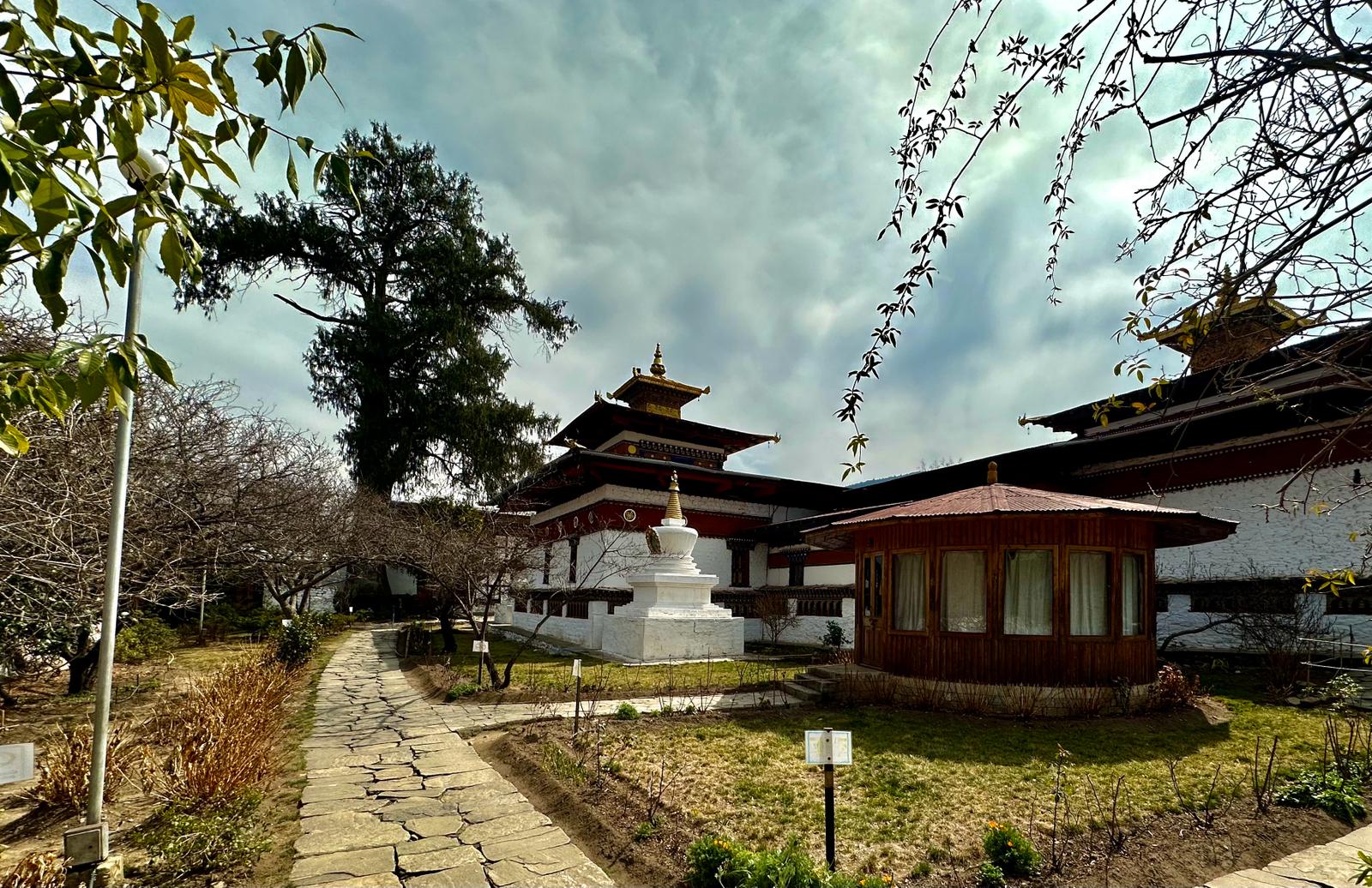
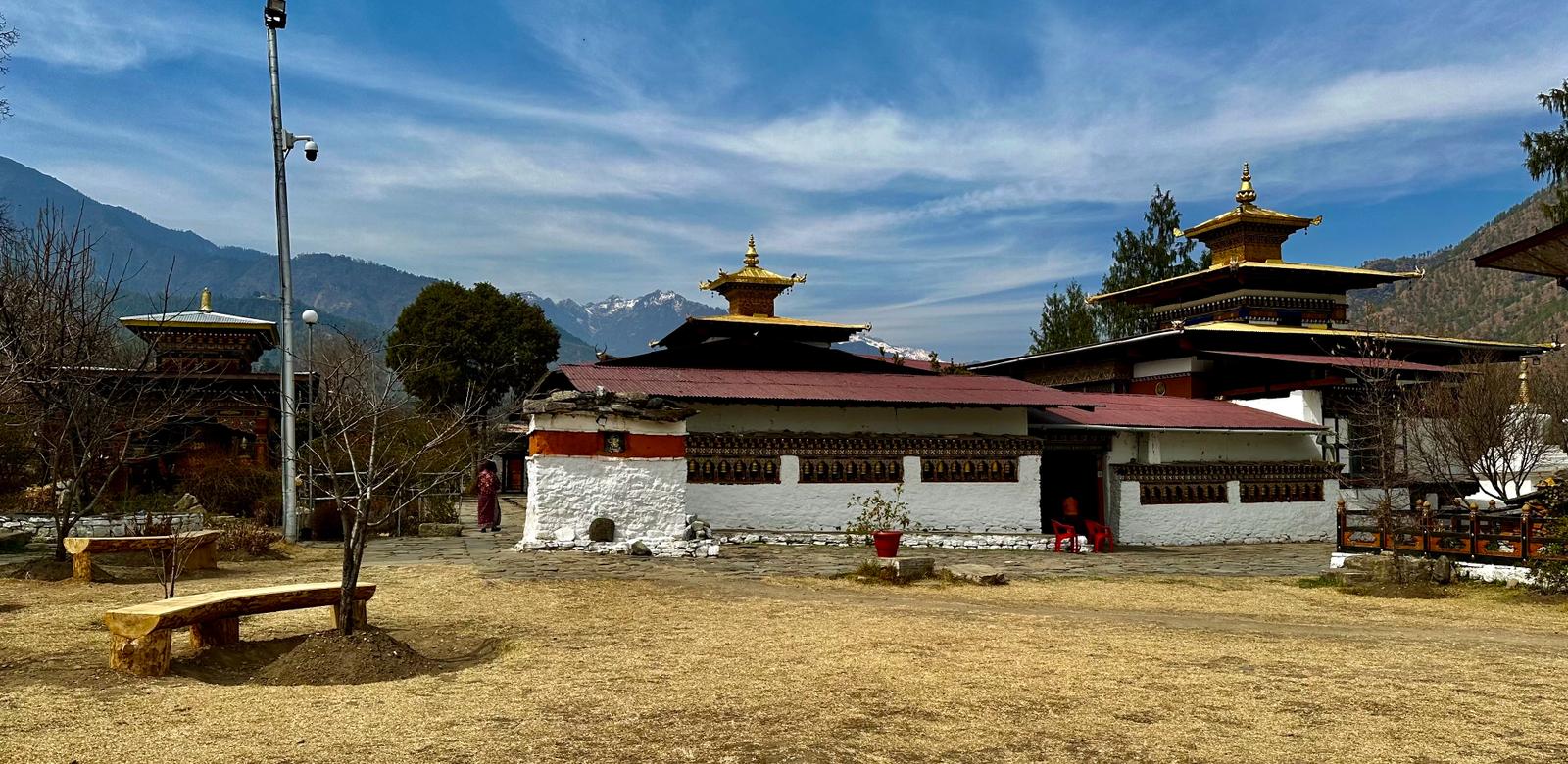
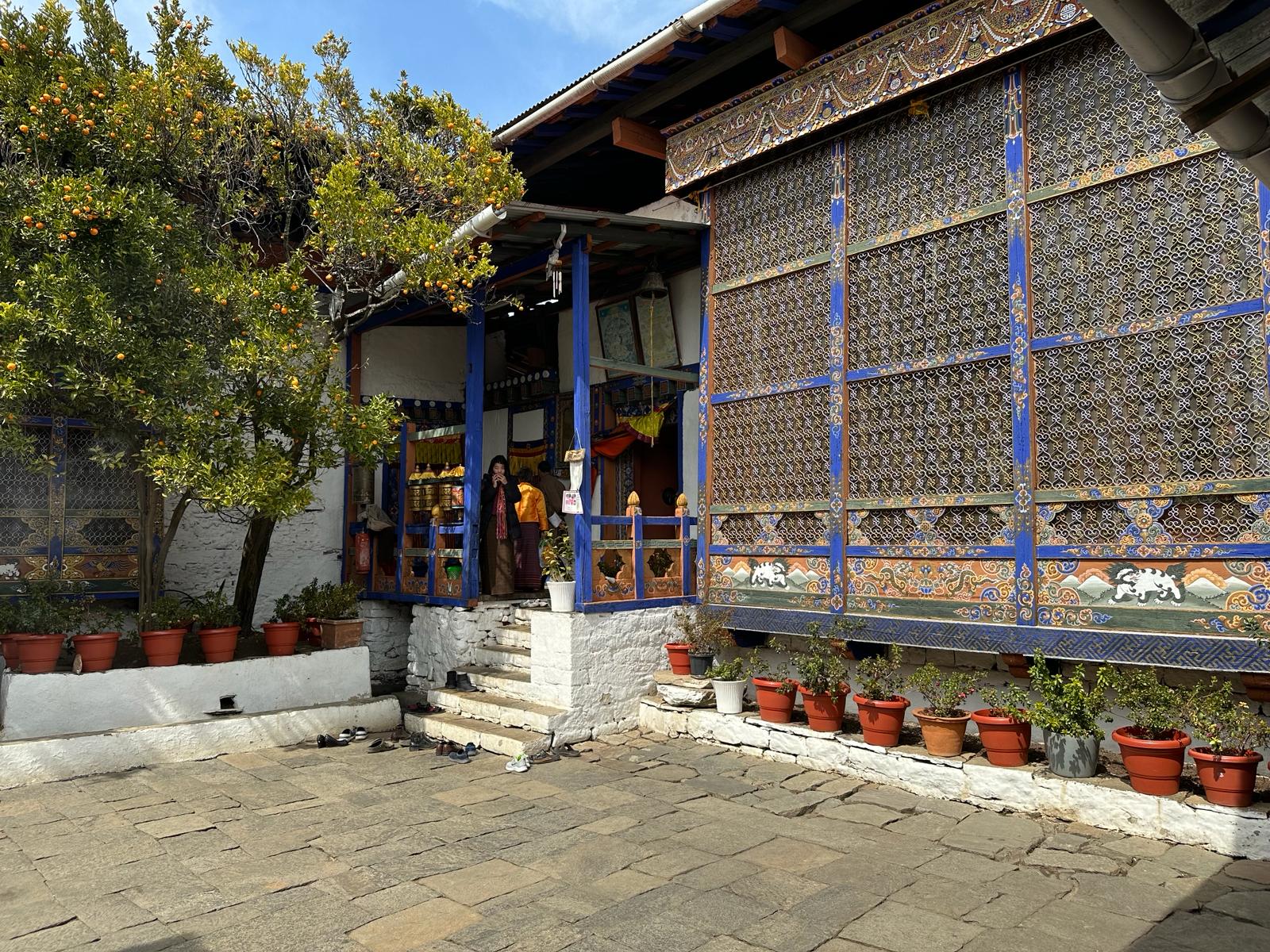
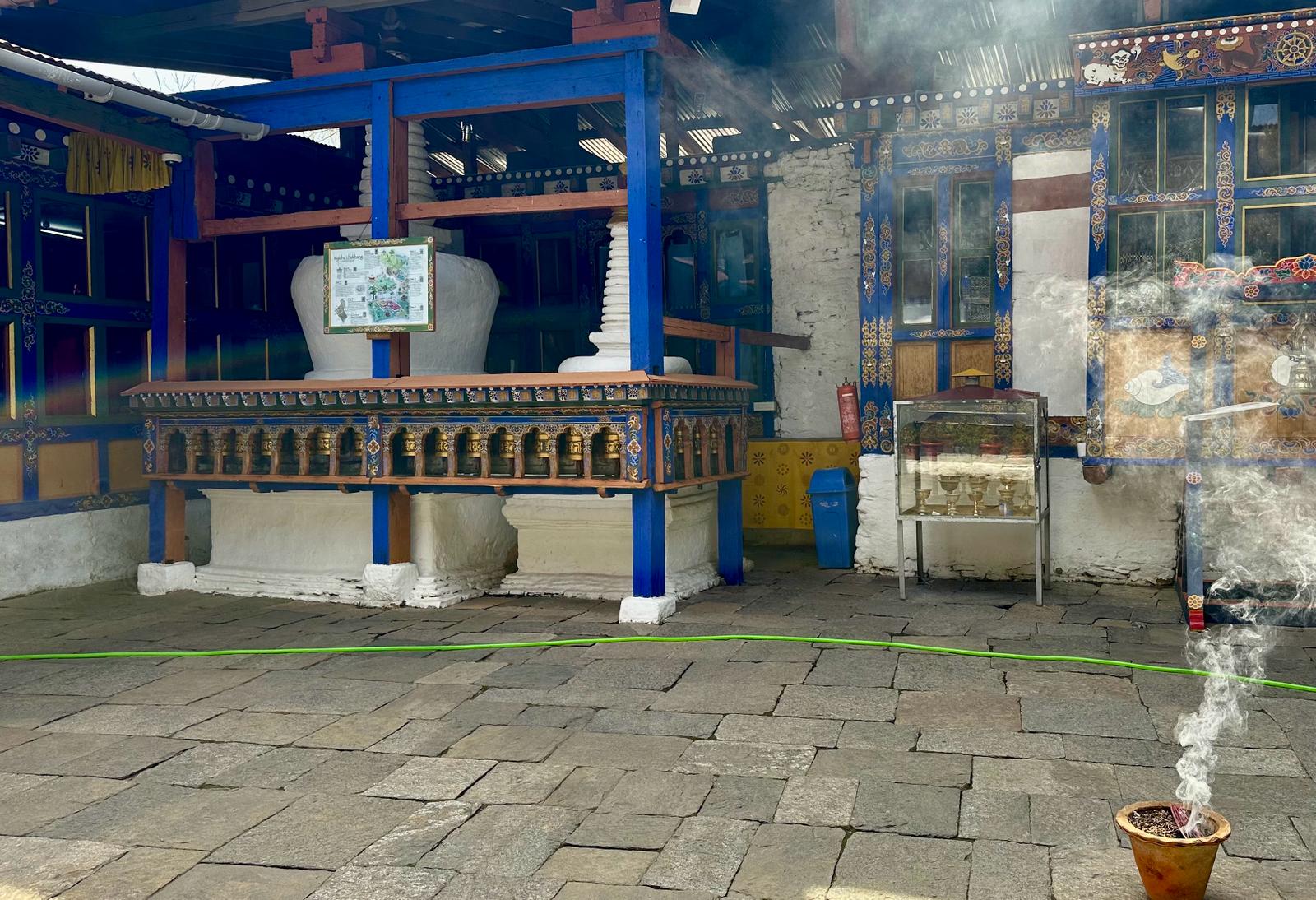
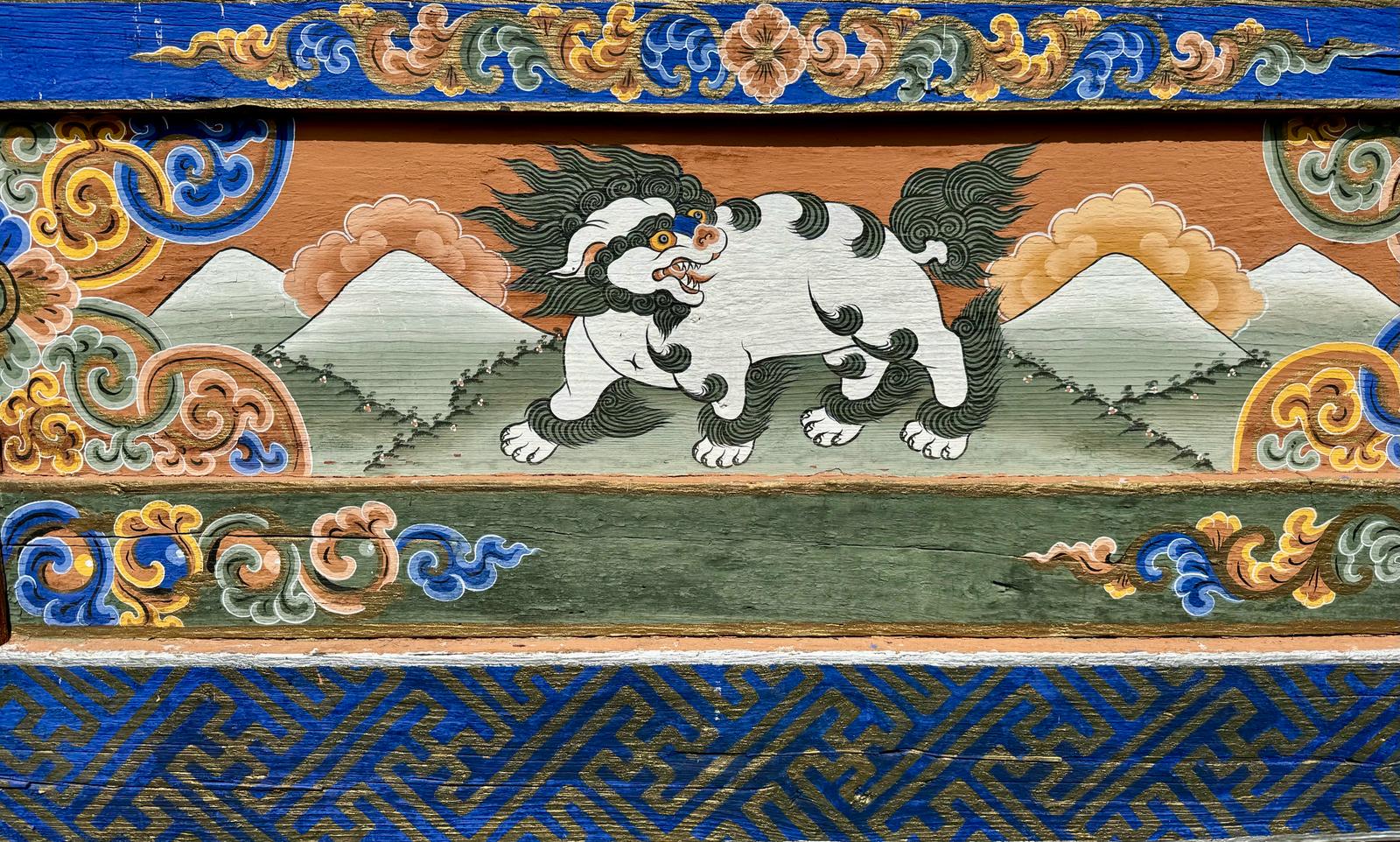
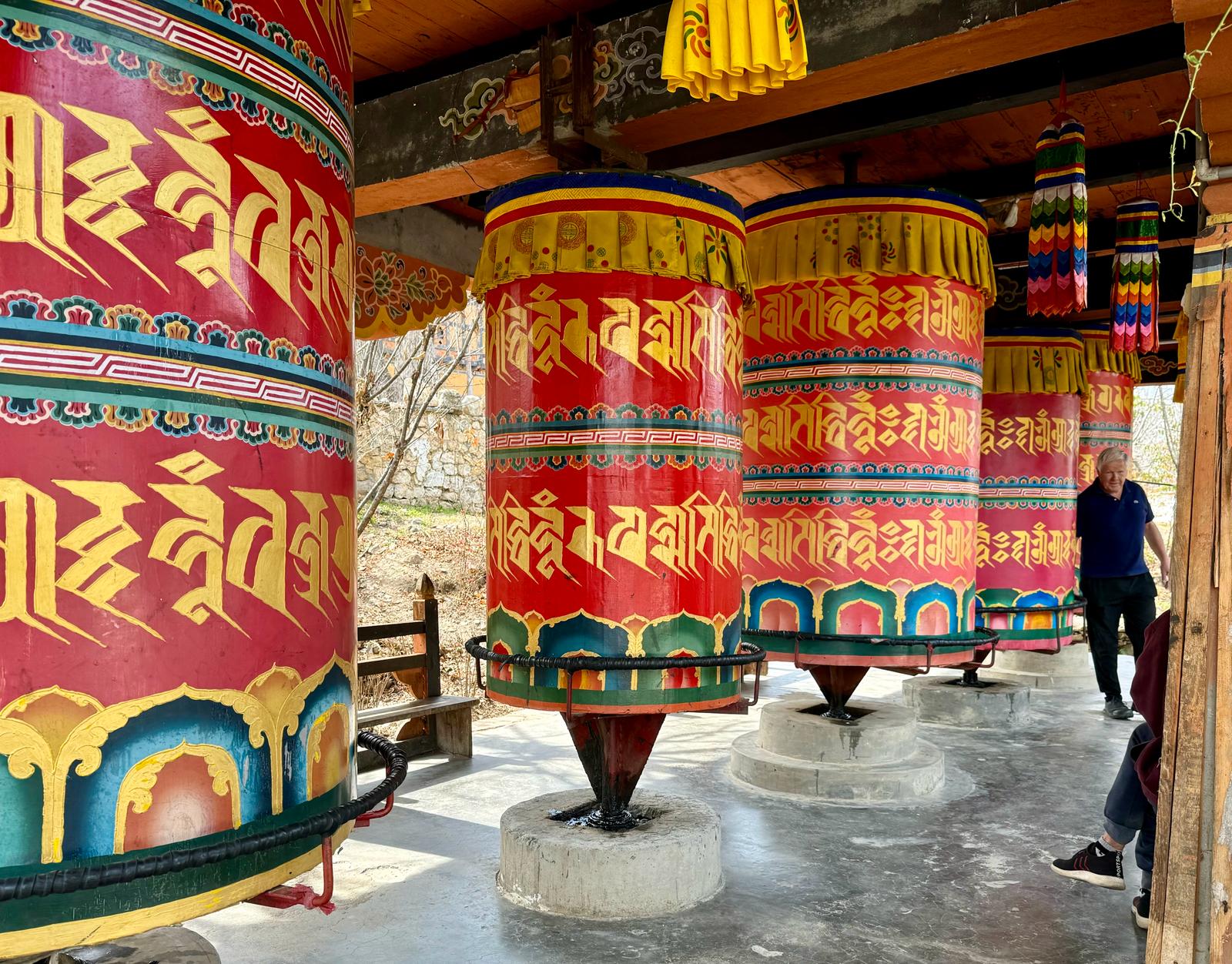
From there we drove back up to the Six Senses hotel and enjoyed a very relaxing lunch wth few others in the restaurant. The attention to detail and the excellent service provided by the people that work at Six Senses can only be described as outstanding. It’s difficult to open a door for yourself as someone seems to appear from nowhere and grab the door handle before you get there.
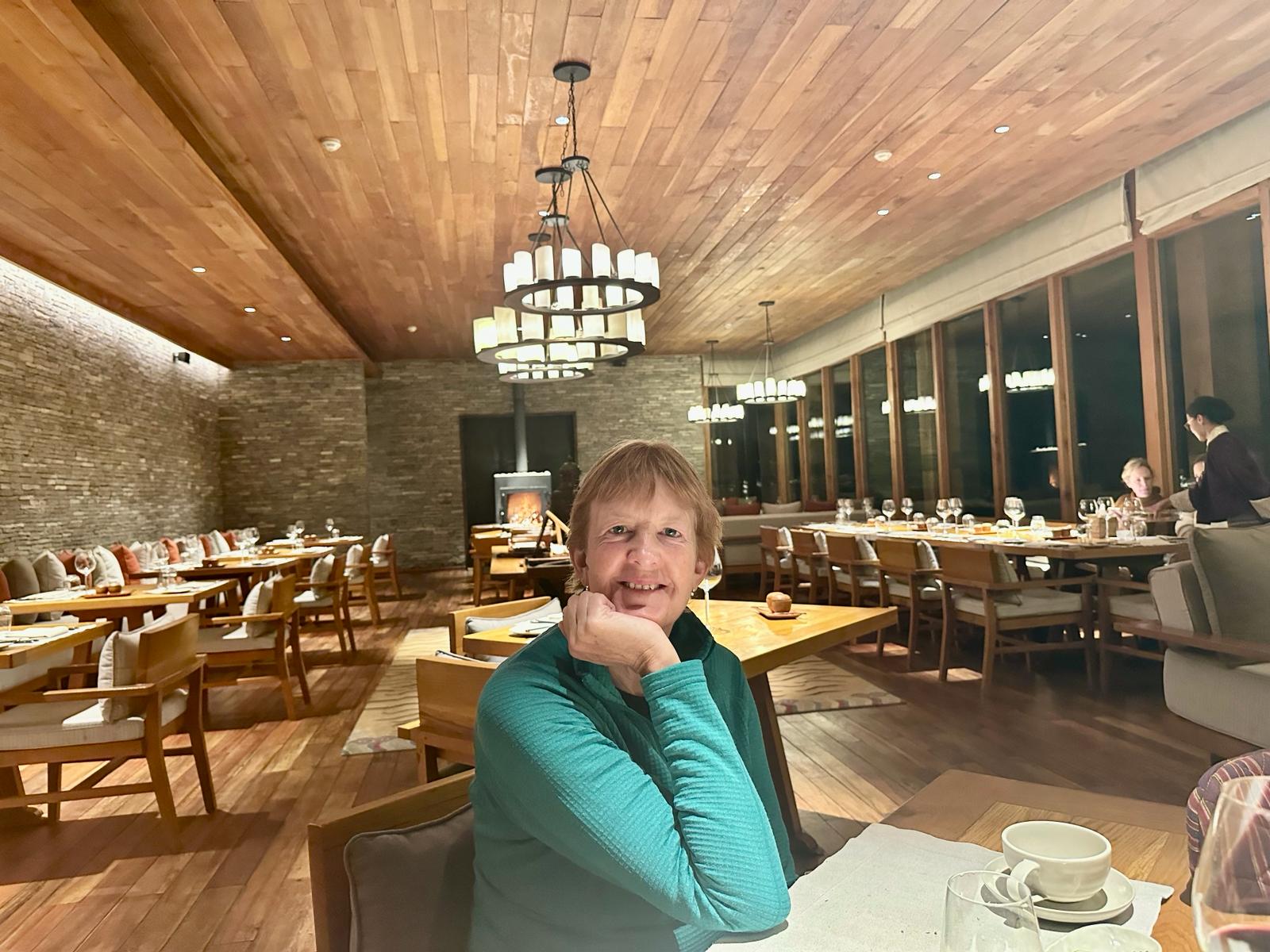
After lunch we rested for a while and then went for a stroll to have a look at the 15th century ruins, which nobody seems to fully understand the origin of. It looks as though the external walls have been cleared at some stage but the inside of the fort is still full of dirt and has trees growing out of it. There is an area beside the ruins where they hold special dinners, which is decked out in prayer flags. On the other side of the road from the main gate to the Six Senses there is a monastery surrounded by walls and just on the other side of the wall is a house flying a red and white flag, which apparently means this person is in meditation – do not disturb. There is a massive new building being constructed inside the walls that when completed will house some 500-700 monks.
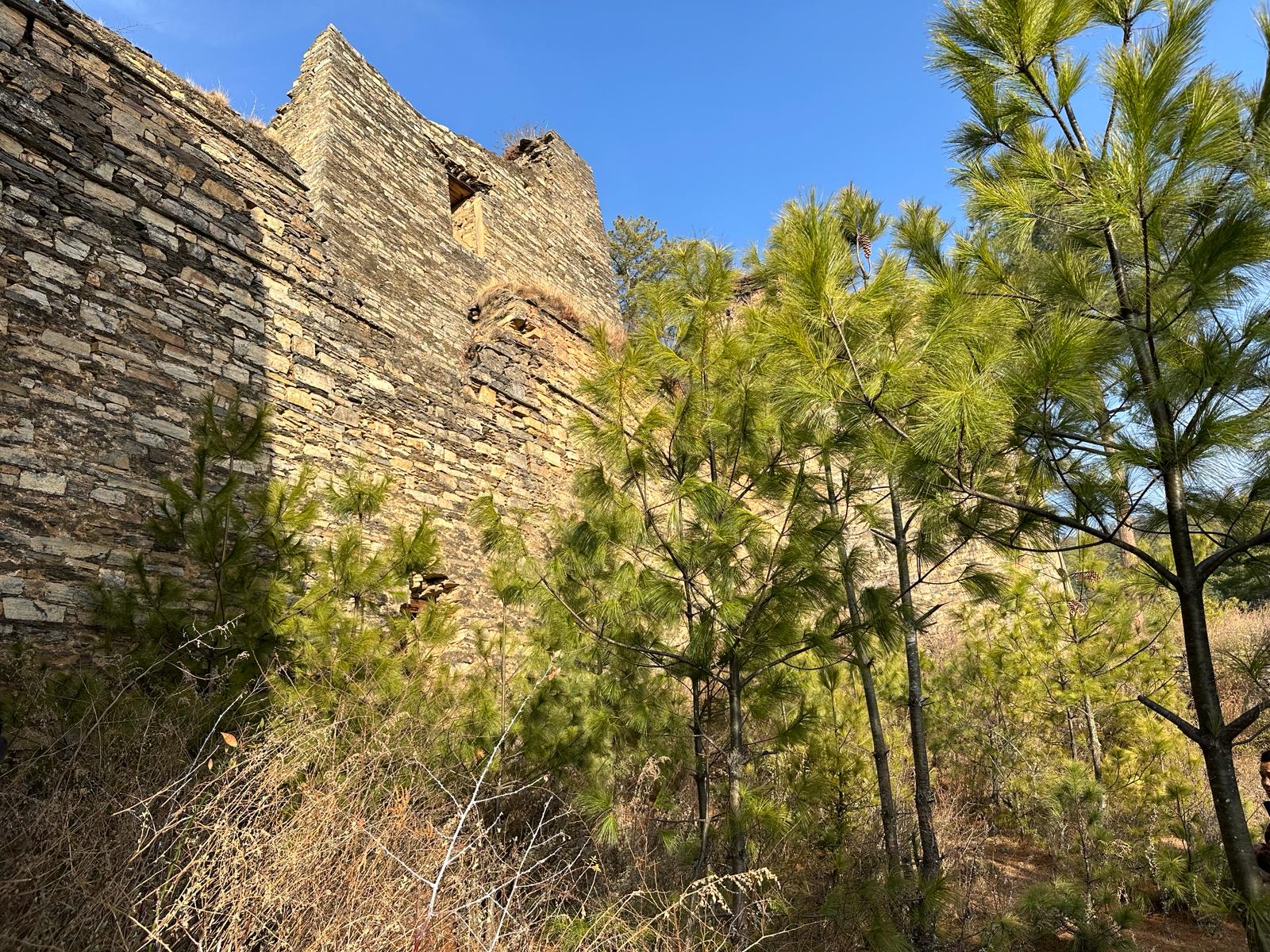
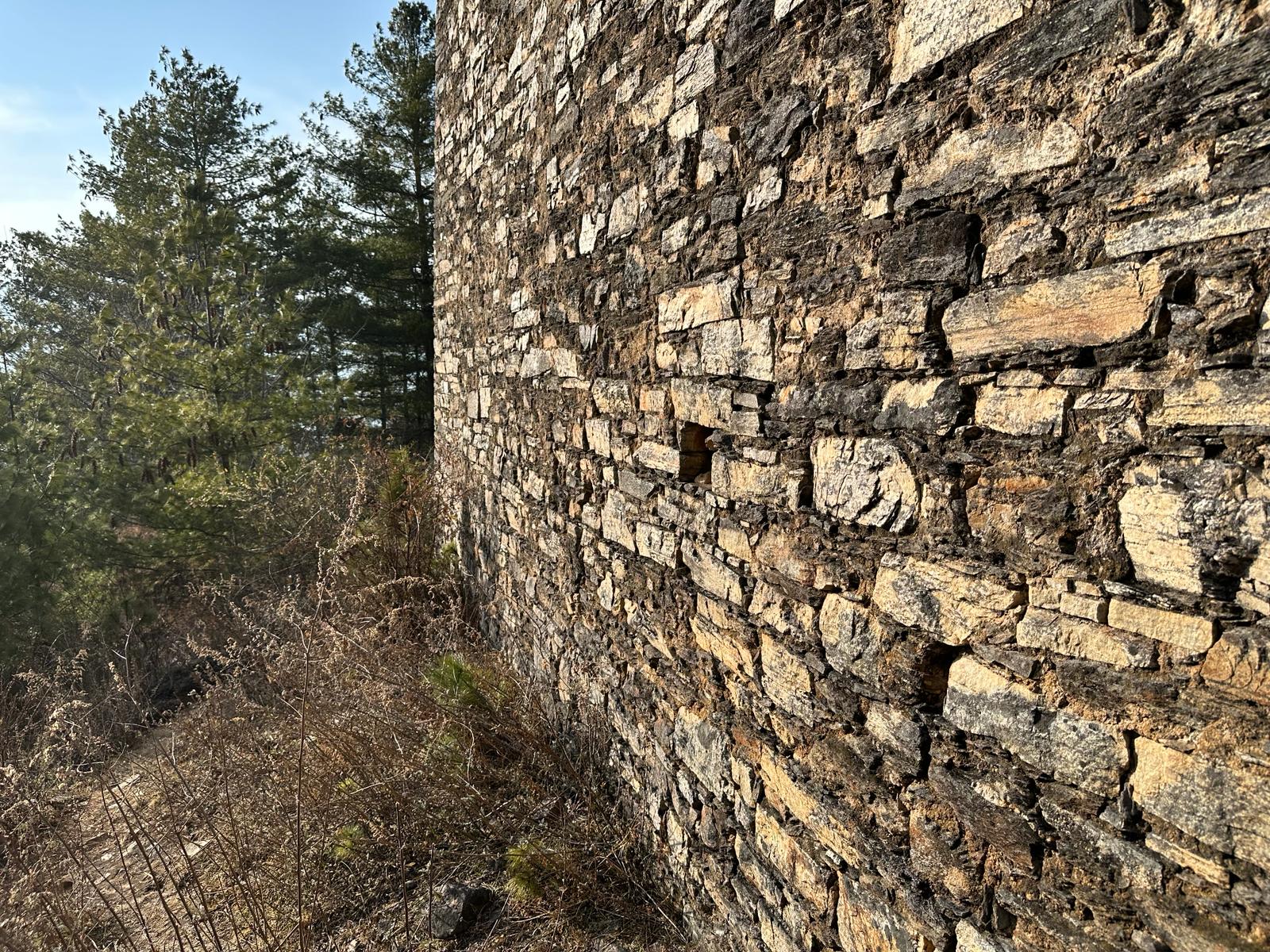
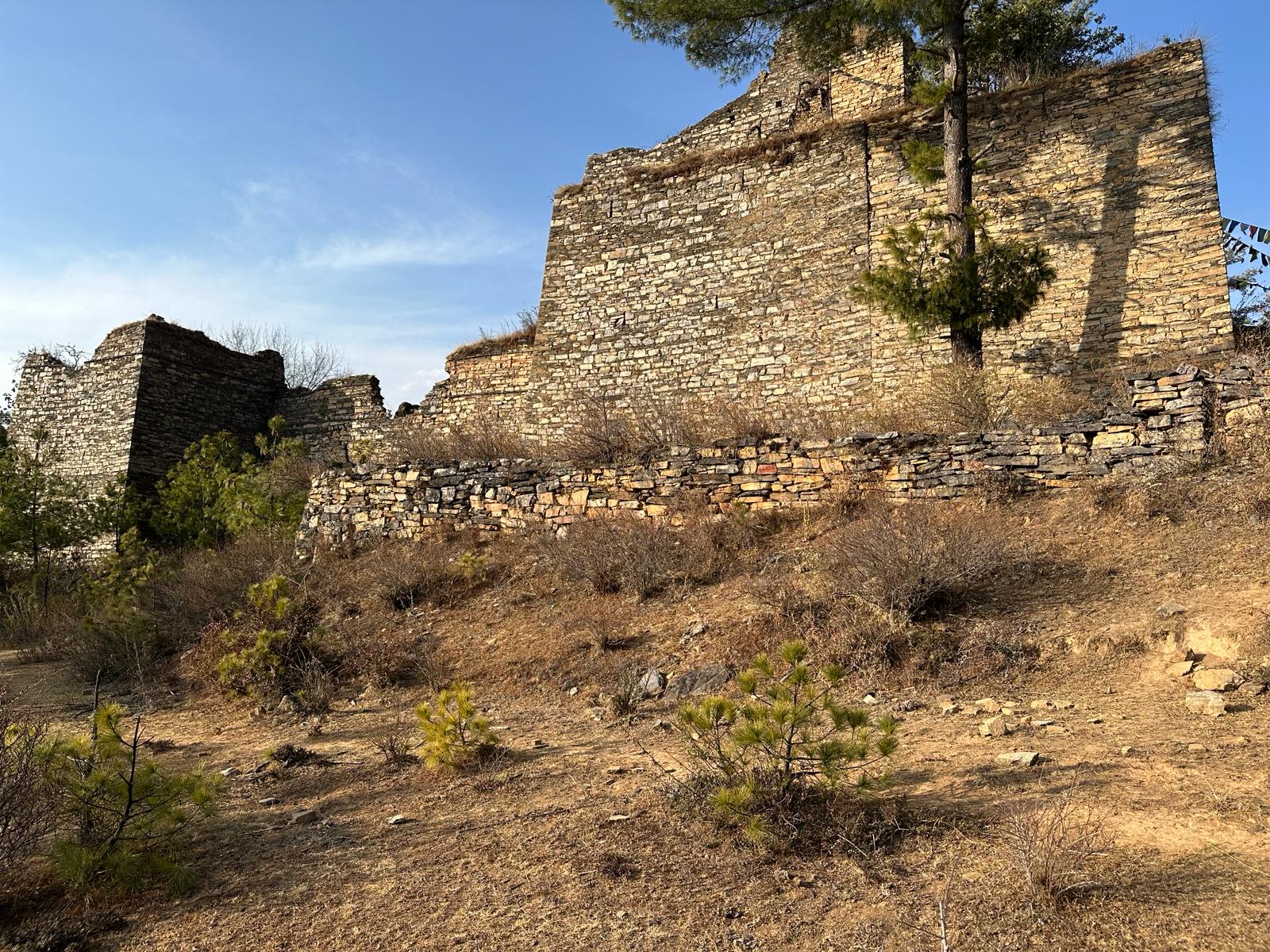
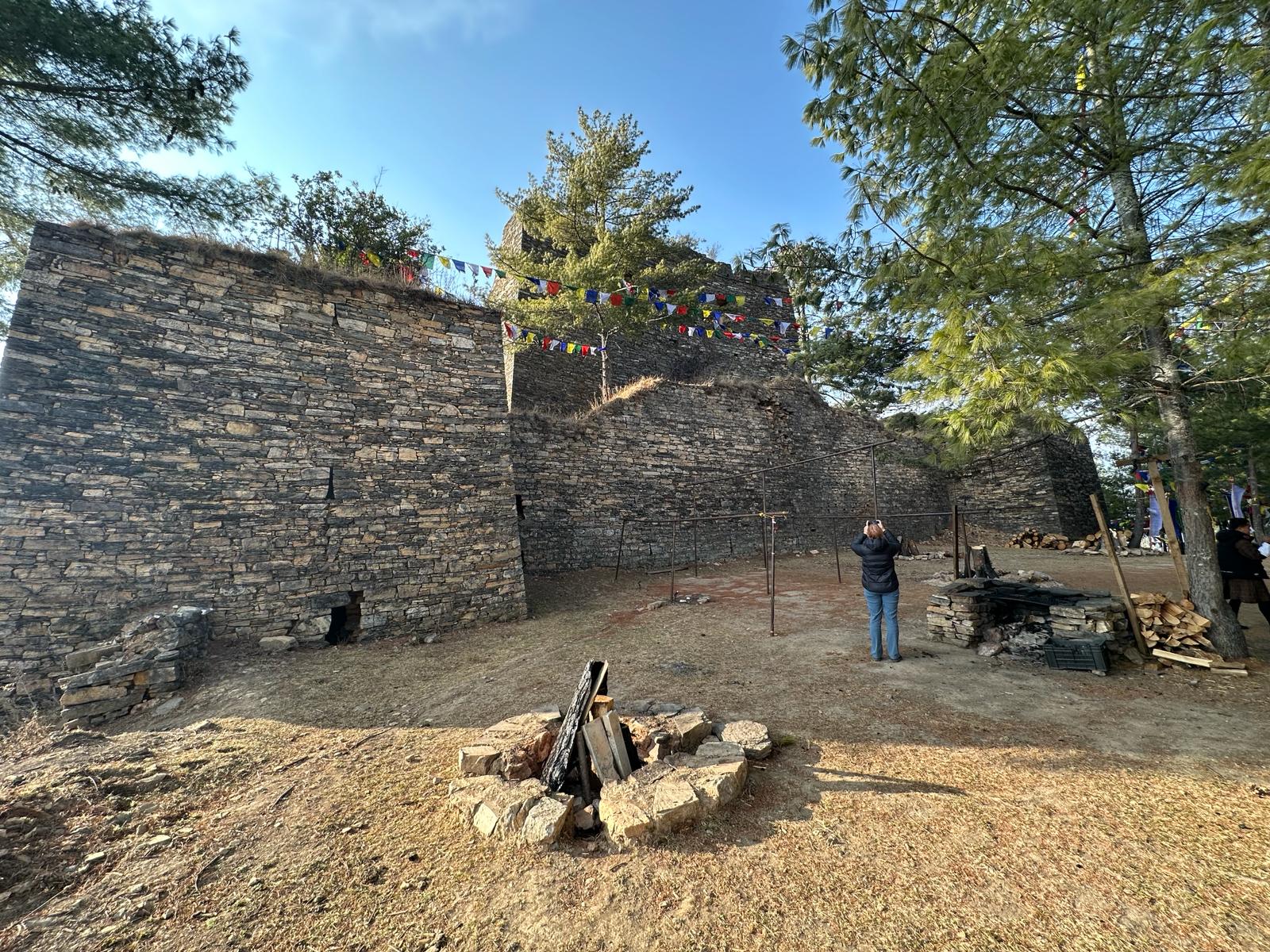
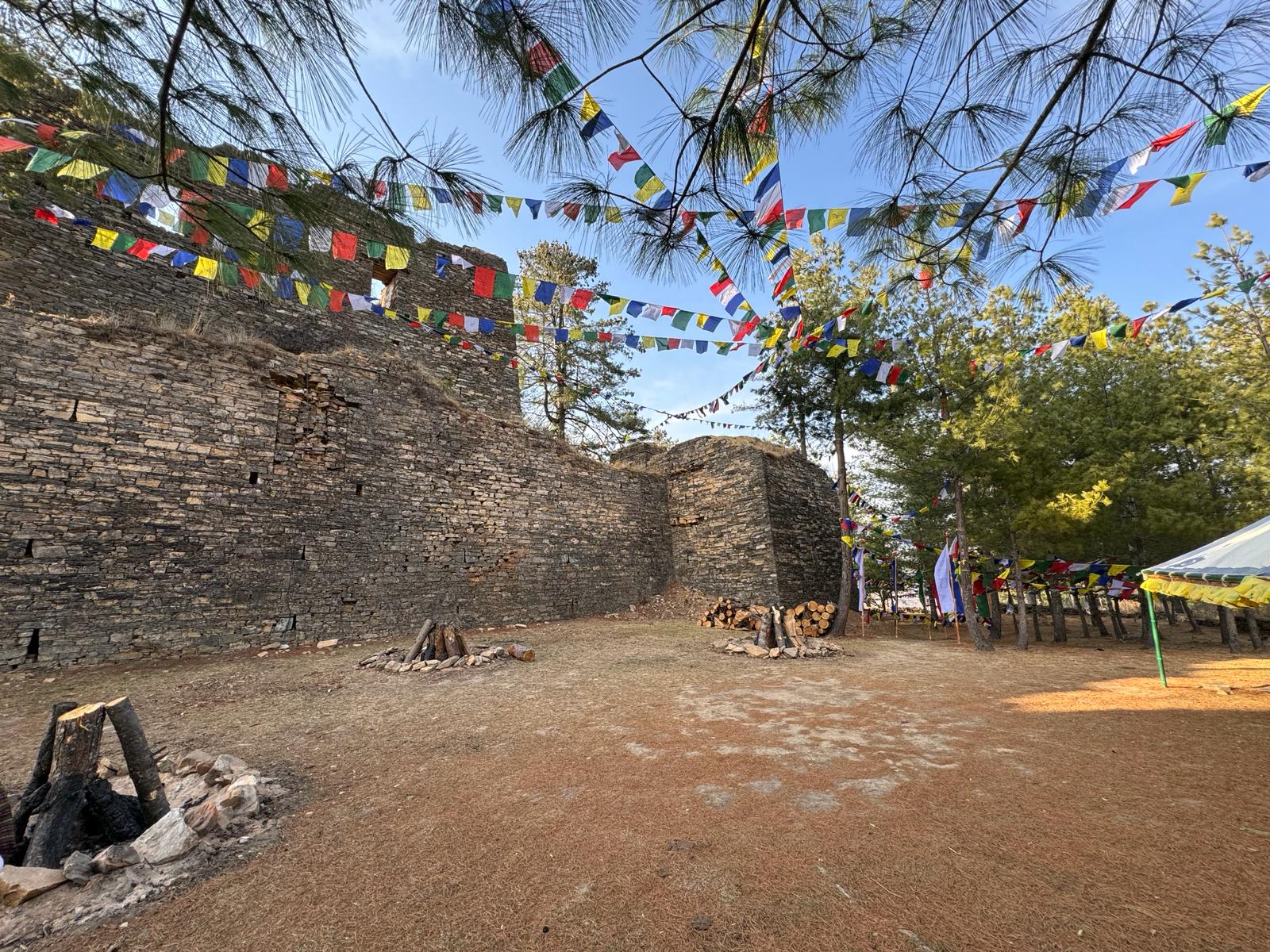
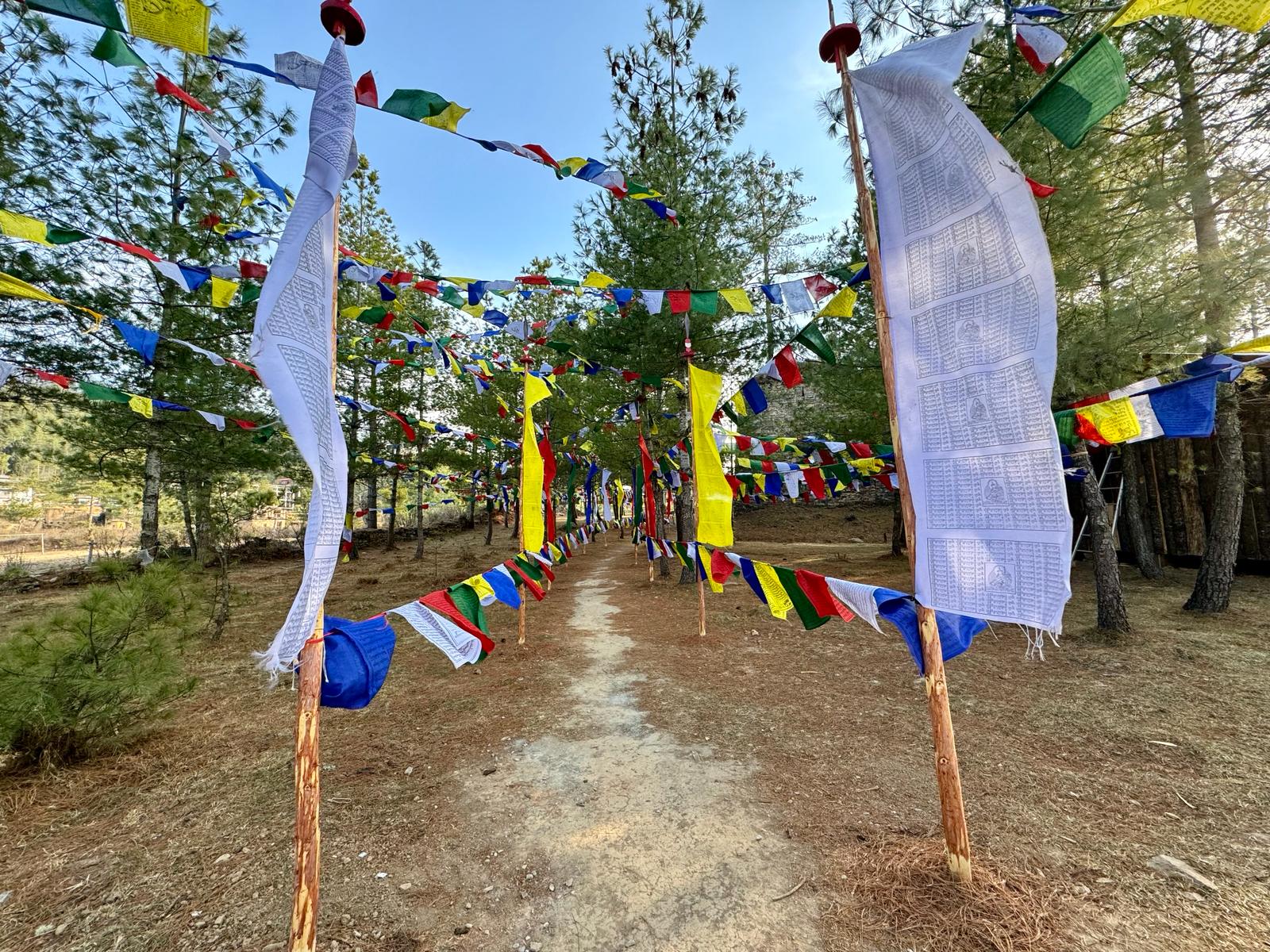
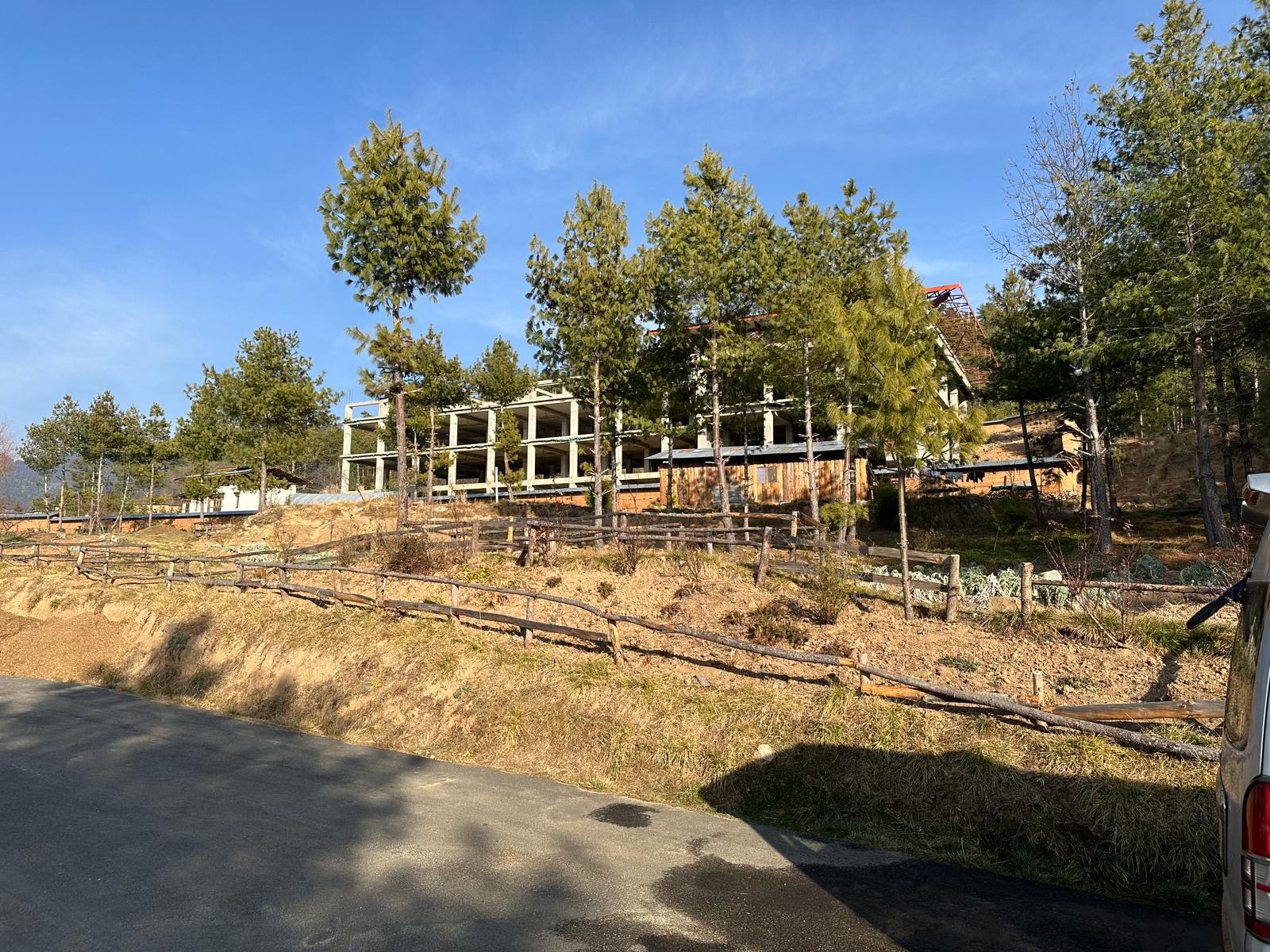
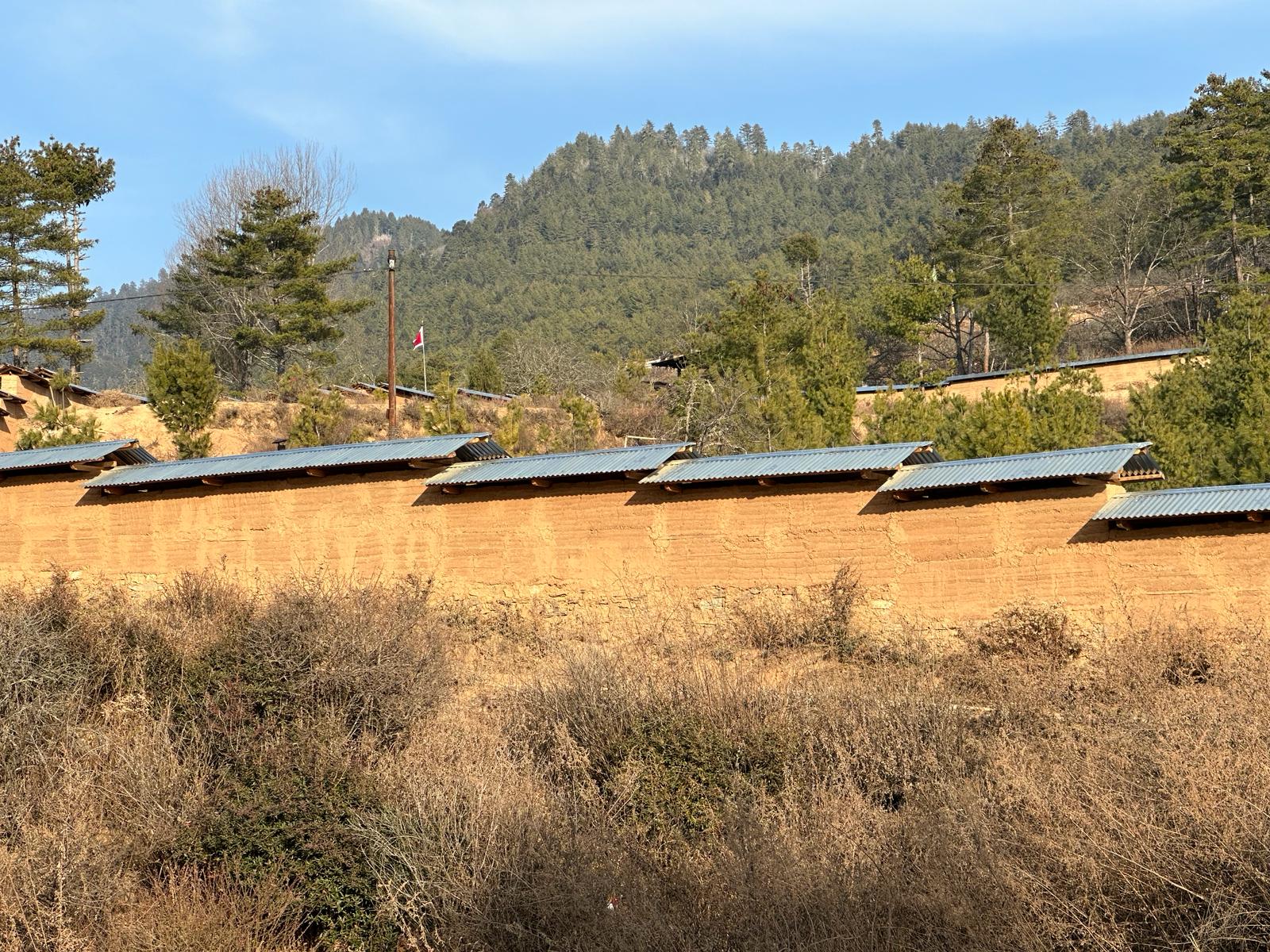
Tuesday 29 February: Paro to Bumthang – Sylvia
We were up bright and early this morning to meet Chimi and Singye at 6:30am for our transfer, via the bumpy dirt road, to the Paro airport for our 8am flight to Bumthang. The airport is huge, clean, elaborately decorated and incredibly efficient. We made it through check in and security and waited in the gate area for our flight, which eventually departed about 8:56am. Being a pilot in this country takes some skill with the airports in narrow valleys and flying up over mountainous terrain. We had amazing views over the Himalayas and down into the inhabited valleys of Bhutan during our roughly 30 minute flight. The lovely man, sitting on the opposite side of the aisle from me, was very obliging and happily took photos and videos out his window on my phone for me. The ATR 40 was not even half full and many of the passengers were staying on board to go to the next destination.
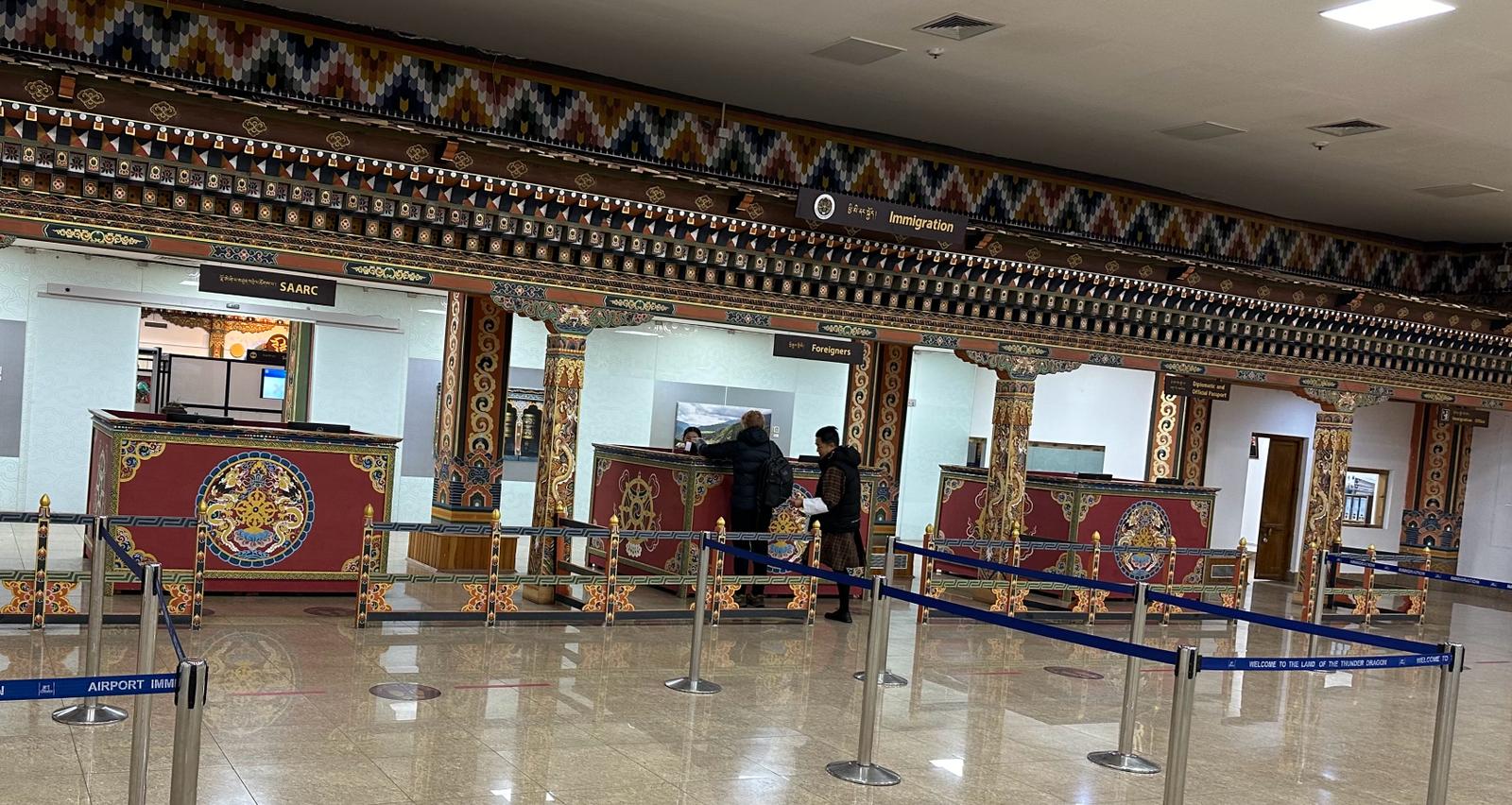
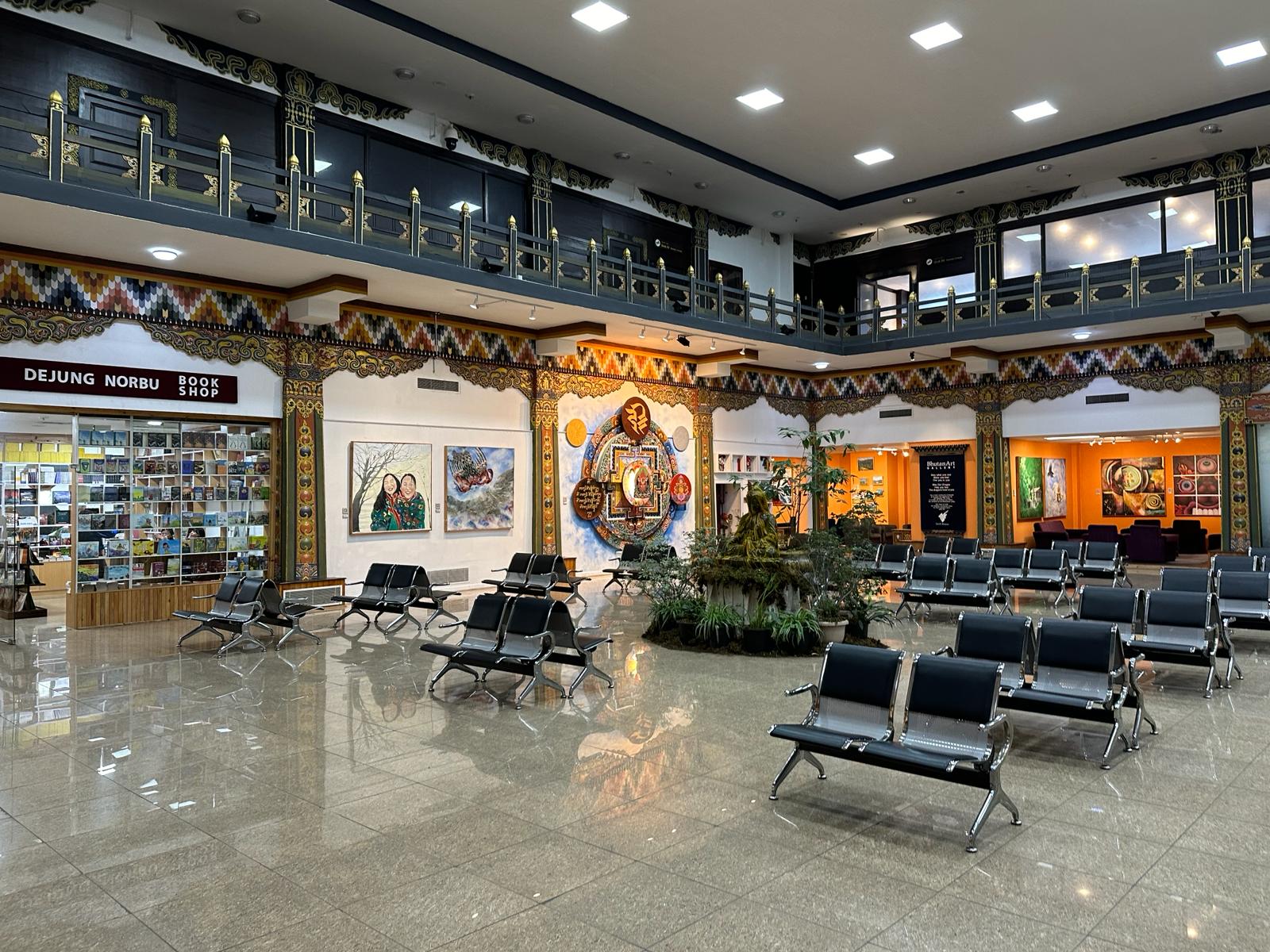

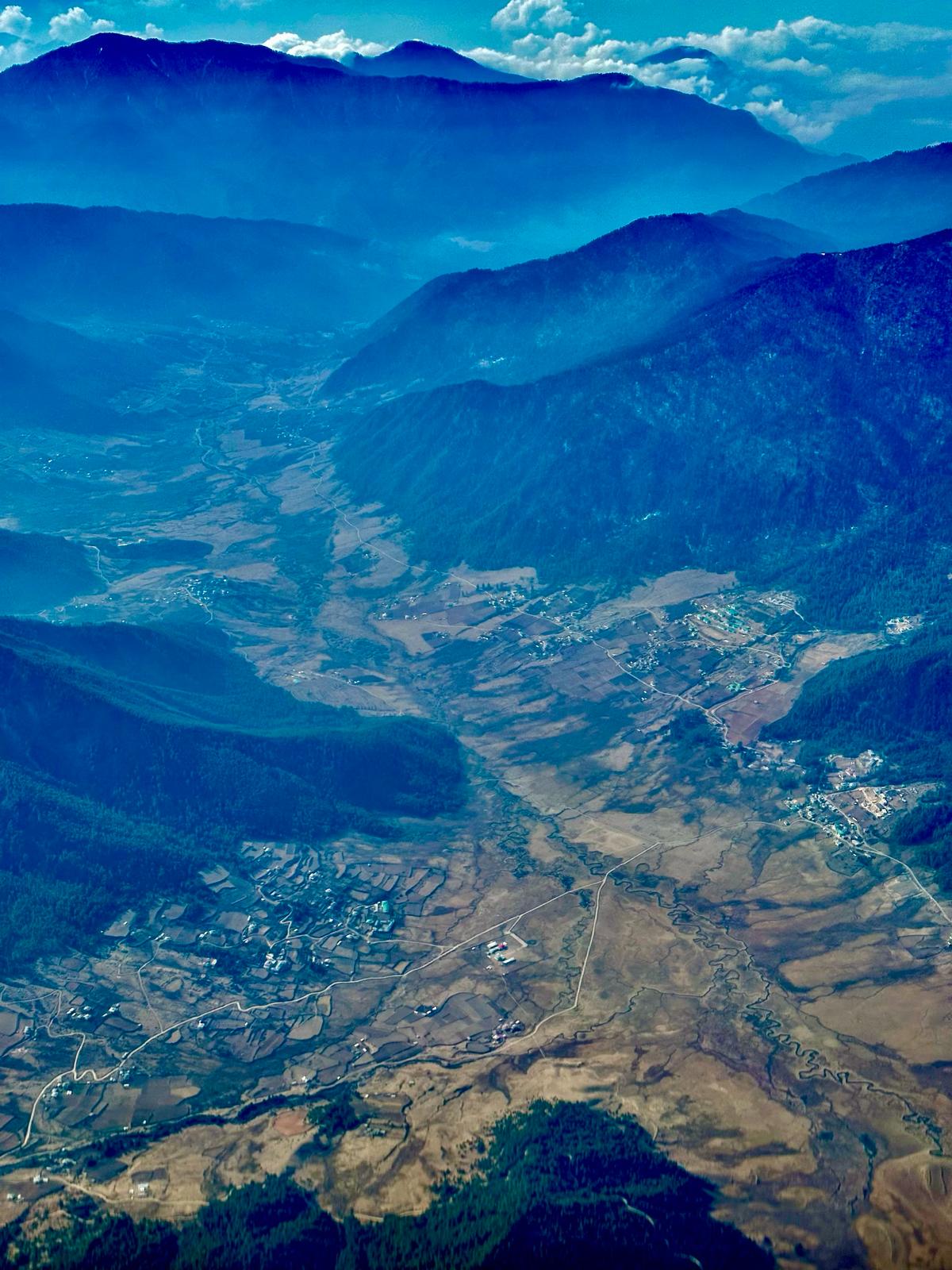
After collecting our bags we were met by a new driver as Singye is driving here and will be with us tomorrow. It will take him 8-10 hours to drive the ±295 kilometres from Paro, all on two lane sealed roads but winding his way up, down and around the mountainous terrain. Chimi had joined us on the flight. We checked in to the Six Sense Bumthang “Forest within a Forest”, about 5 minutes drive from the airport. It is very peaceful here; the hotel is set within the blue pine forest and overlooks the Bumthang Chhu River. The staff were, as always, incredibly welcoming and met us with two men blowing traditional horns. We were shown around this small hotel (only 9 rooms) and after settling in and unpacking we headed to the restaurant for a late breakfast. Apparently we are the only guests here at the moment although there is another couple arriving later tonight.
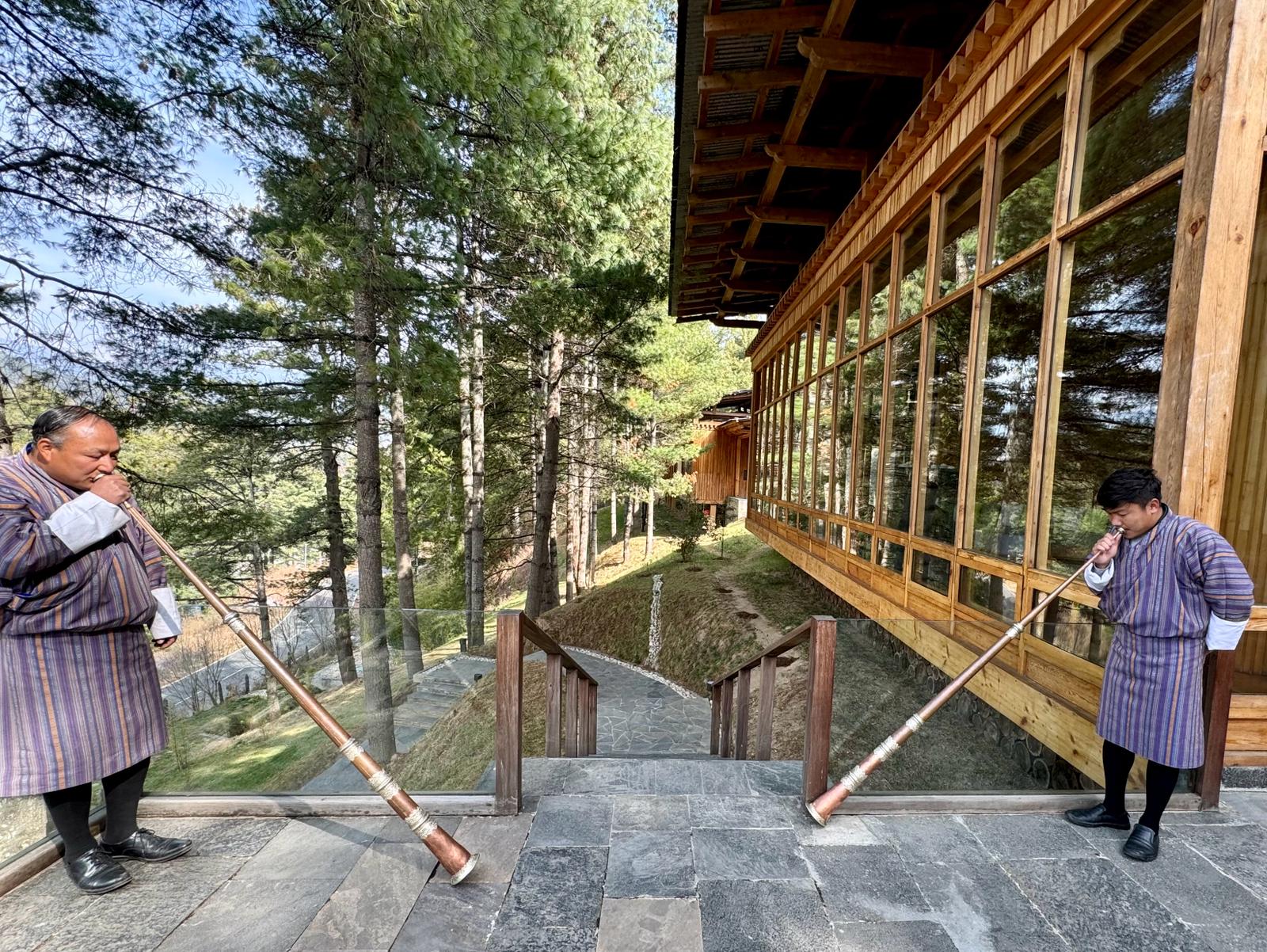
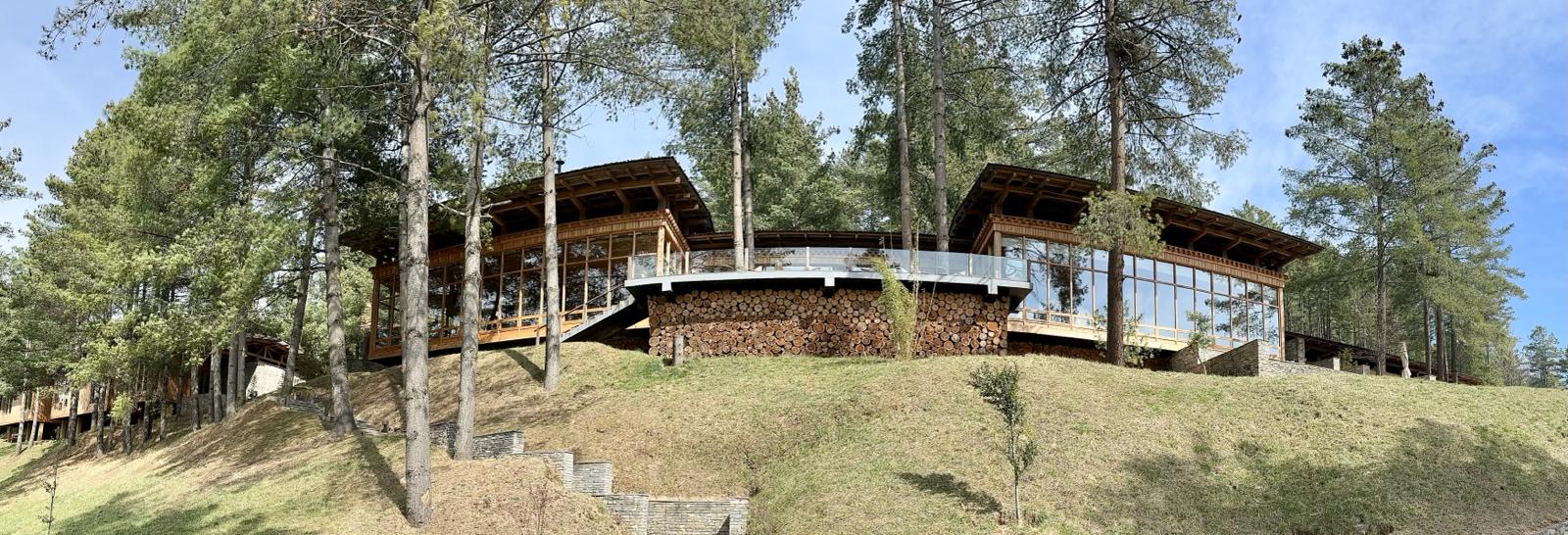
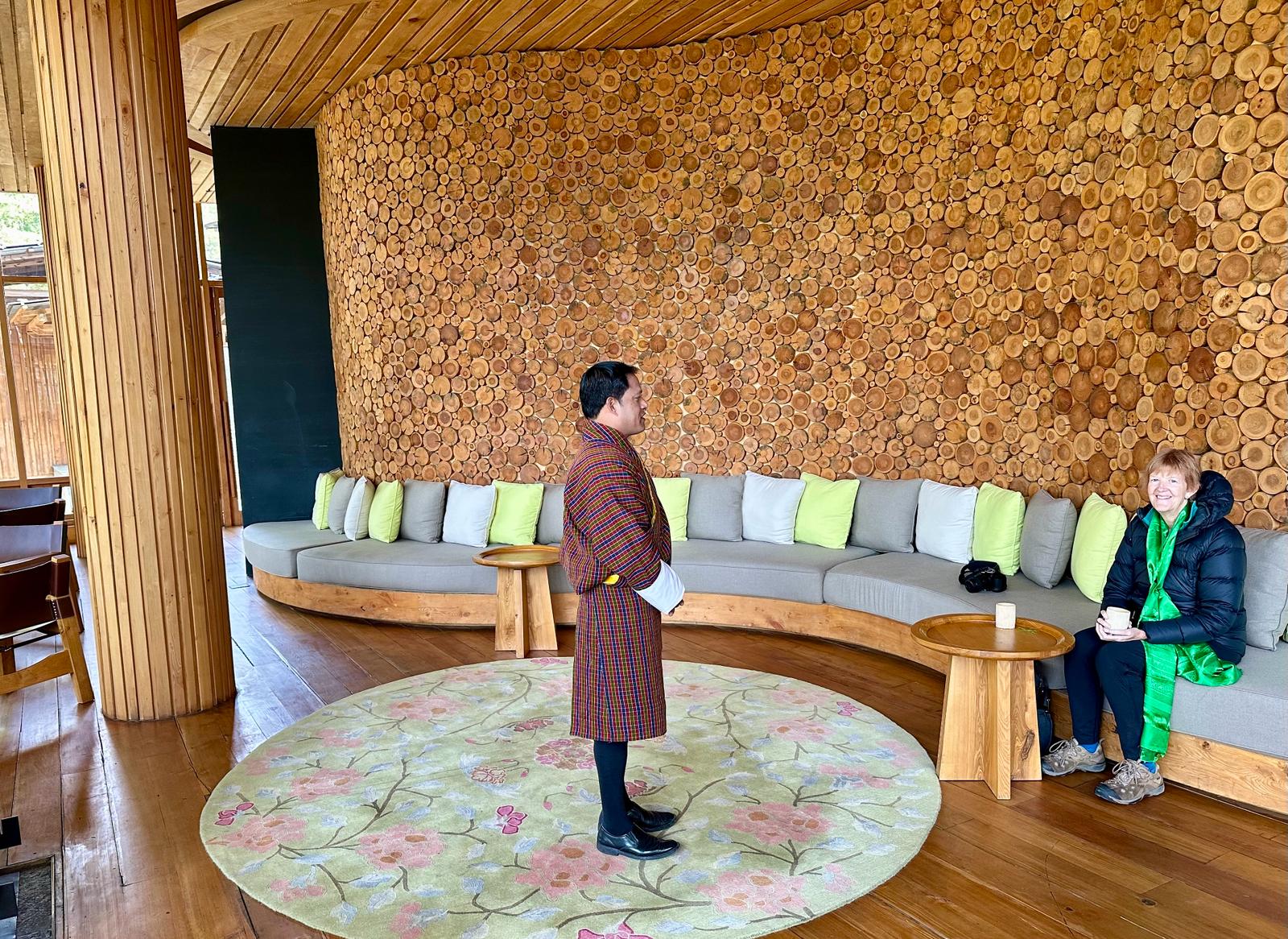
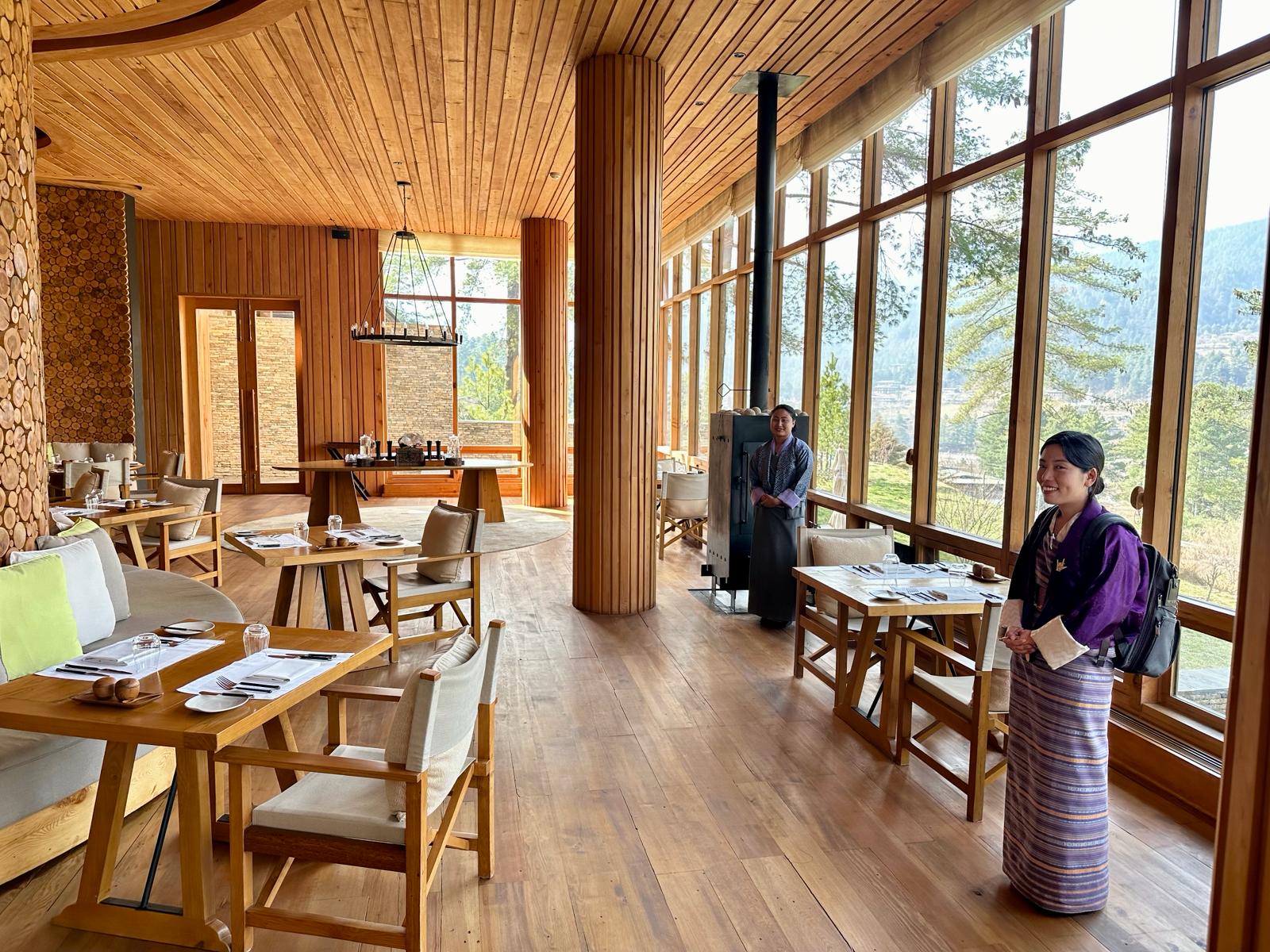
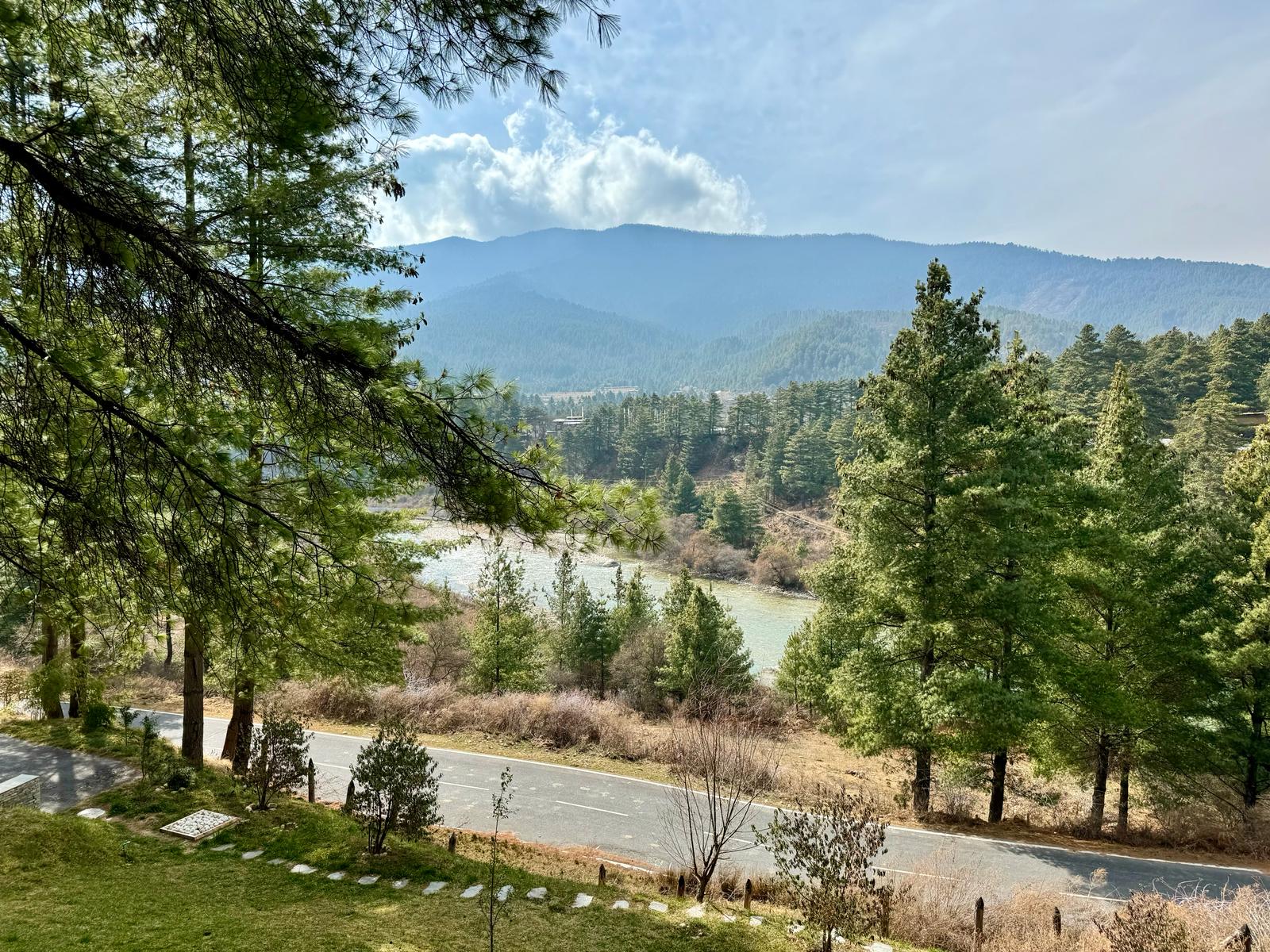
Breakfast is always accompanied by ‘healthy shots’ one, two or three shot glasses of different juices made from local ingredients intended to boost some form of our health. It might have worked better today if I hadn’t indulged in the local version of french toast with local fruits – which was absolutely delicious.
After breakfast we met Chimi and headed to the Jakar Dzong (Seat of Regional Administration and Monastic Order) , which overlooks Chamkar town on the other side of the river from the hotel. I am gradually starting to understand more about Buddhism, the different Buddhas, Bodhisattvas and Arhats (disciples) depicted in the different temples we are visiting, and even starting to recognise a few of them. Chimi has been extremely patient in his explanations and answering our questions.
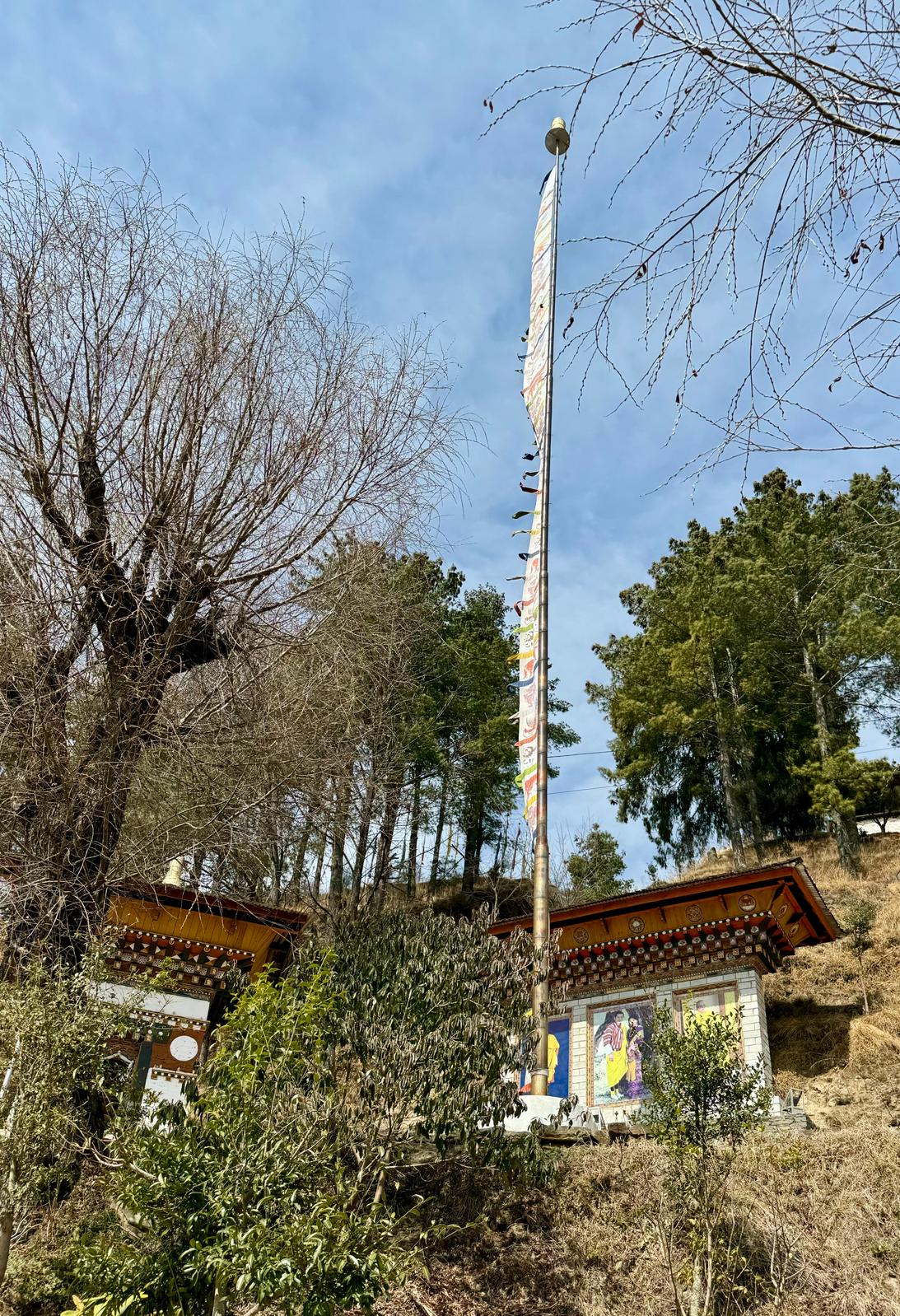
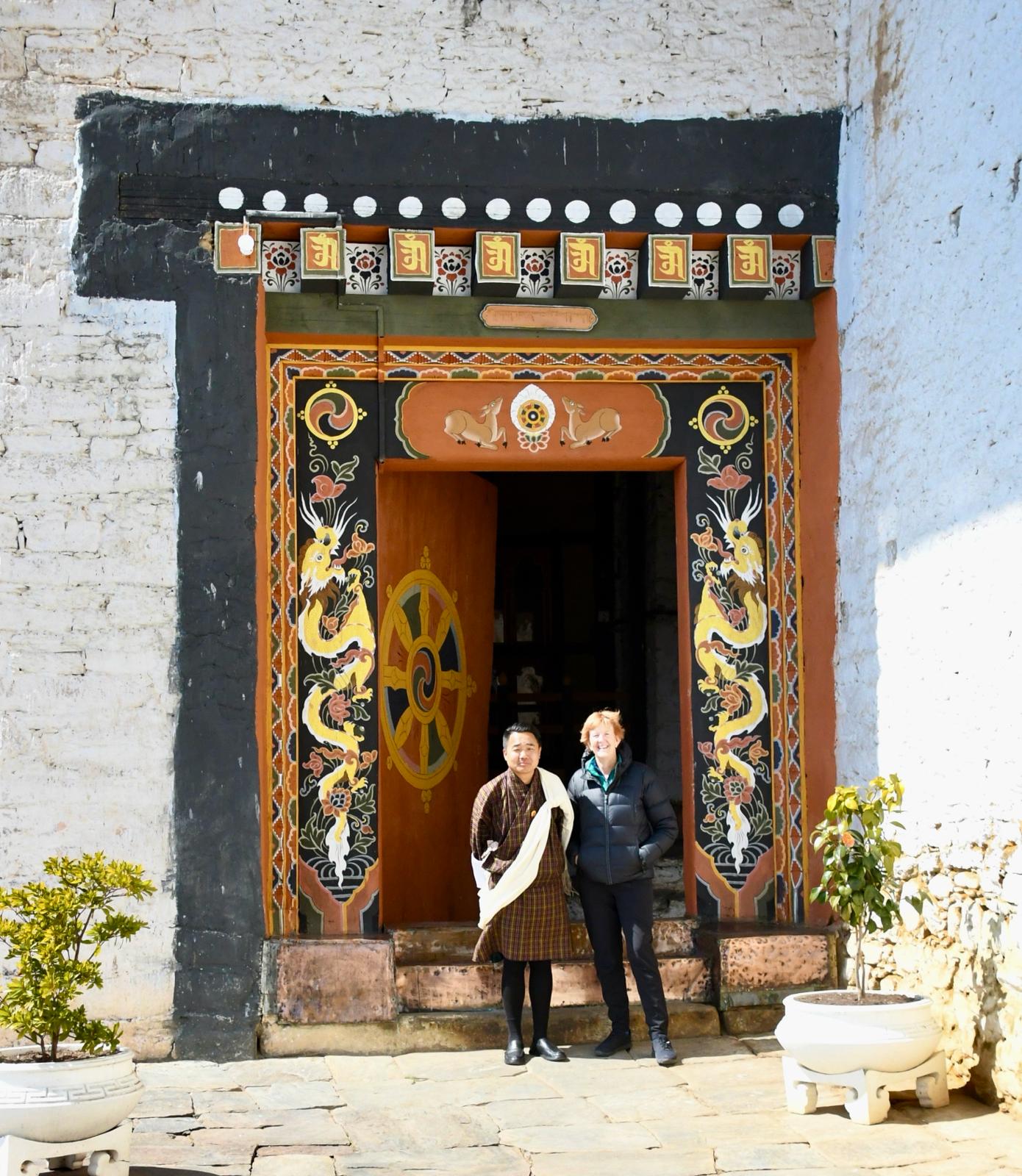
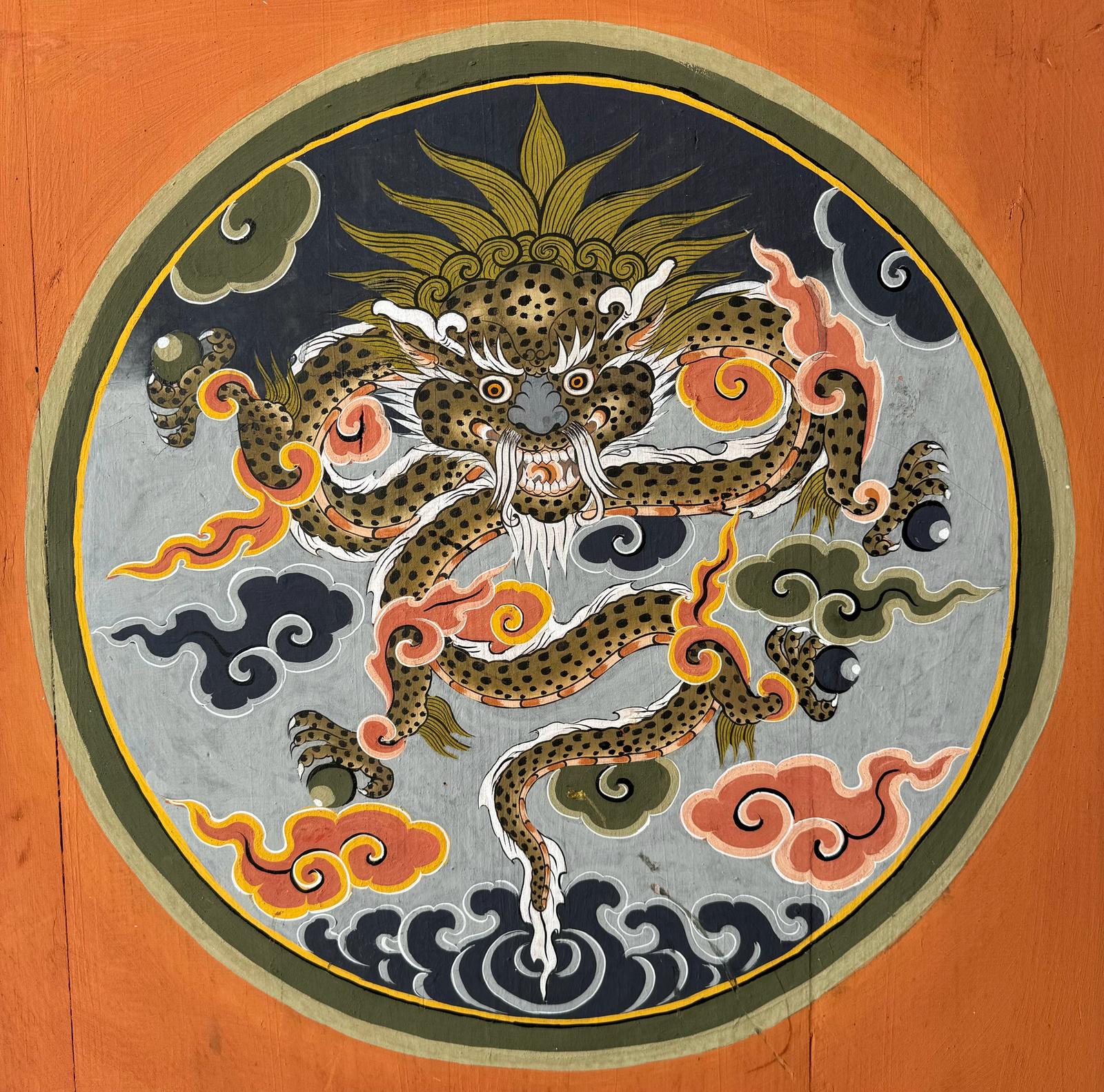
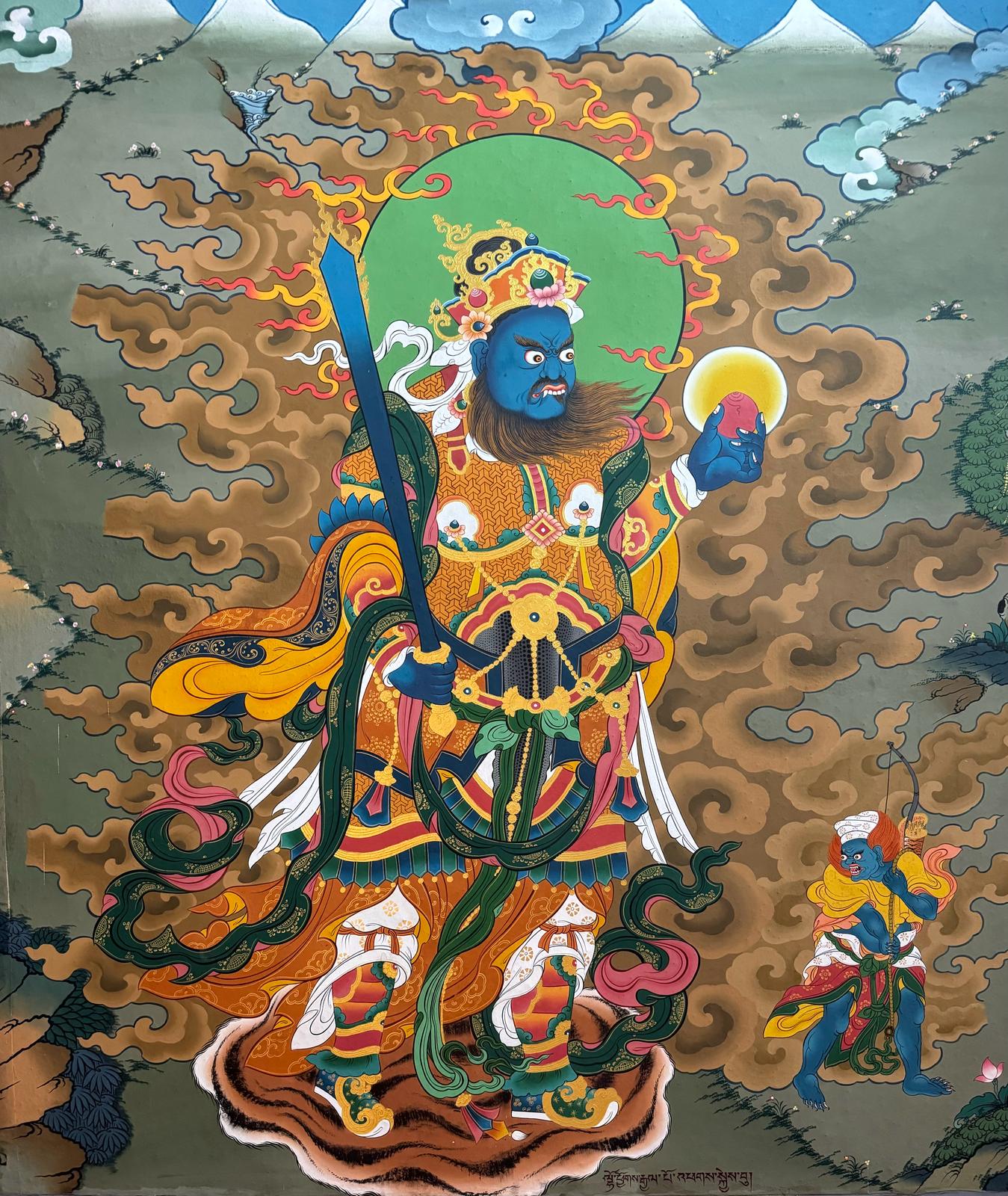
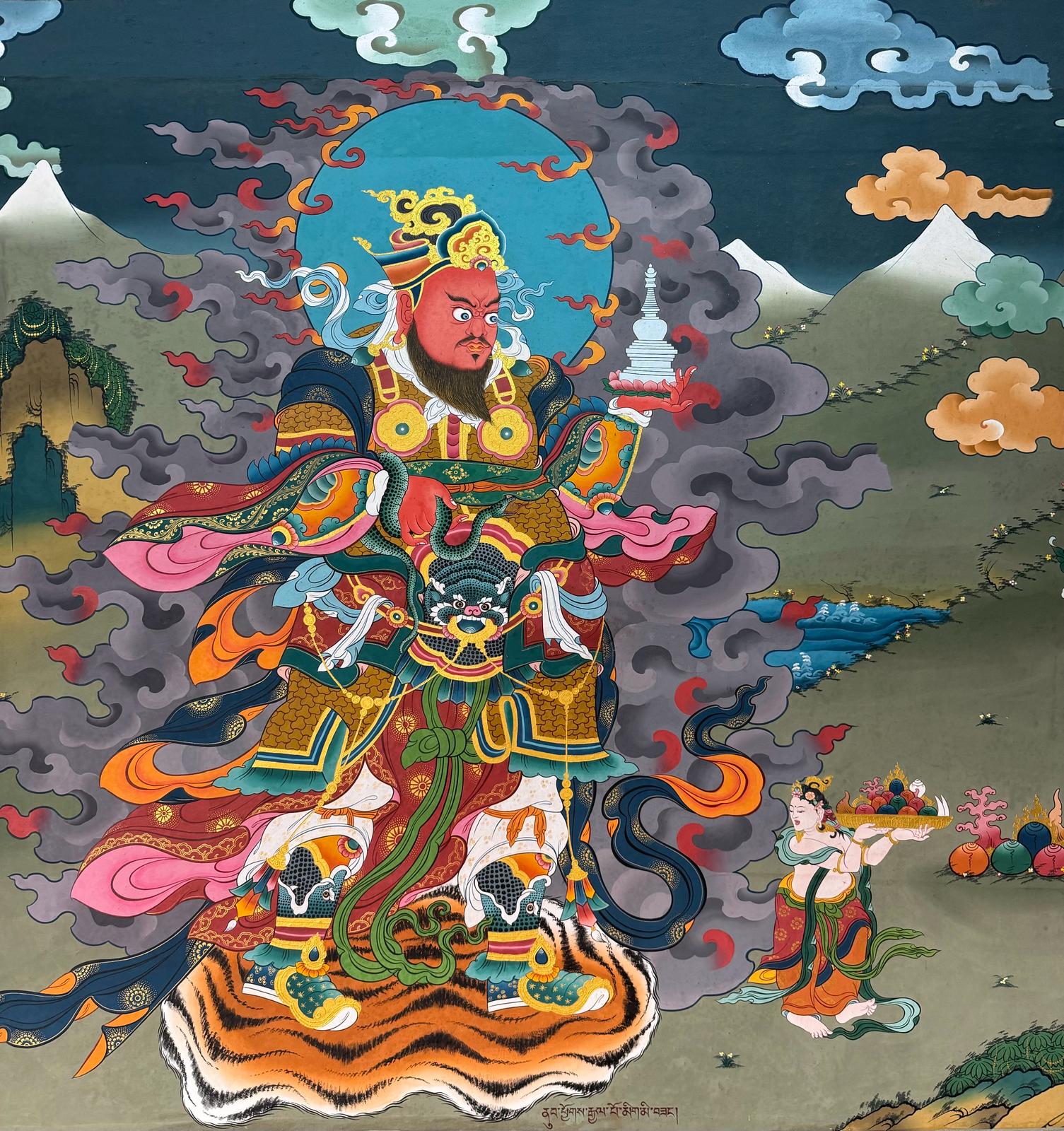
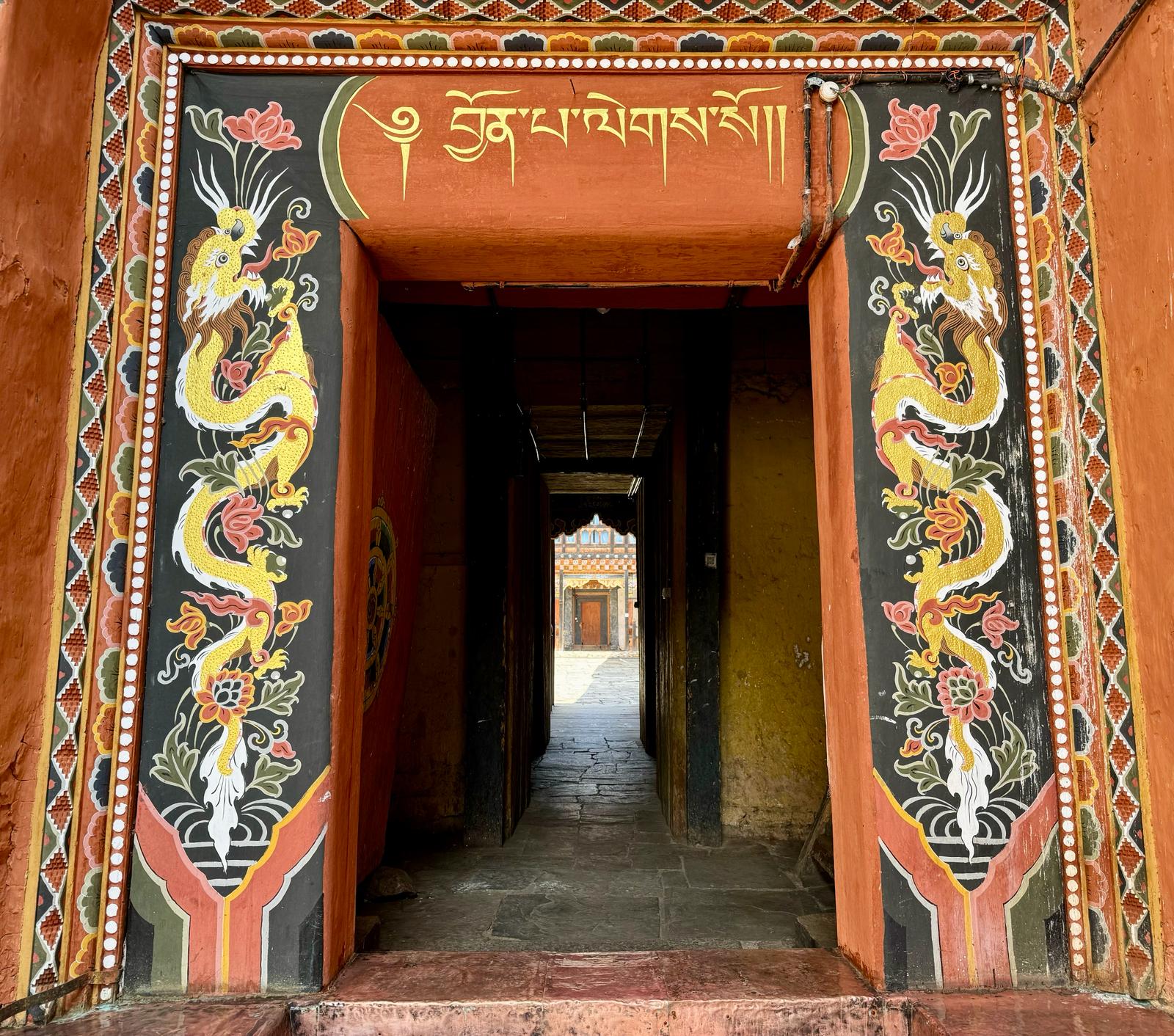
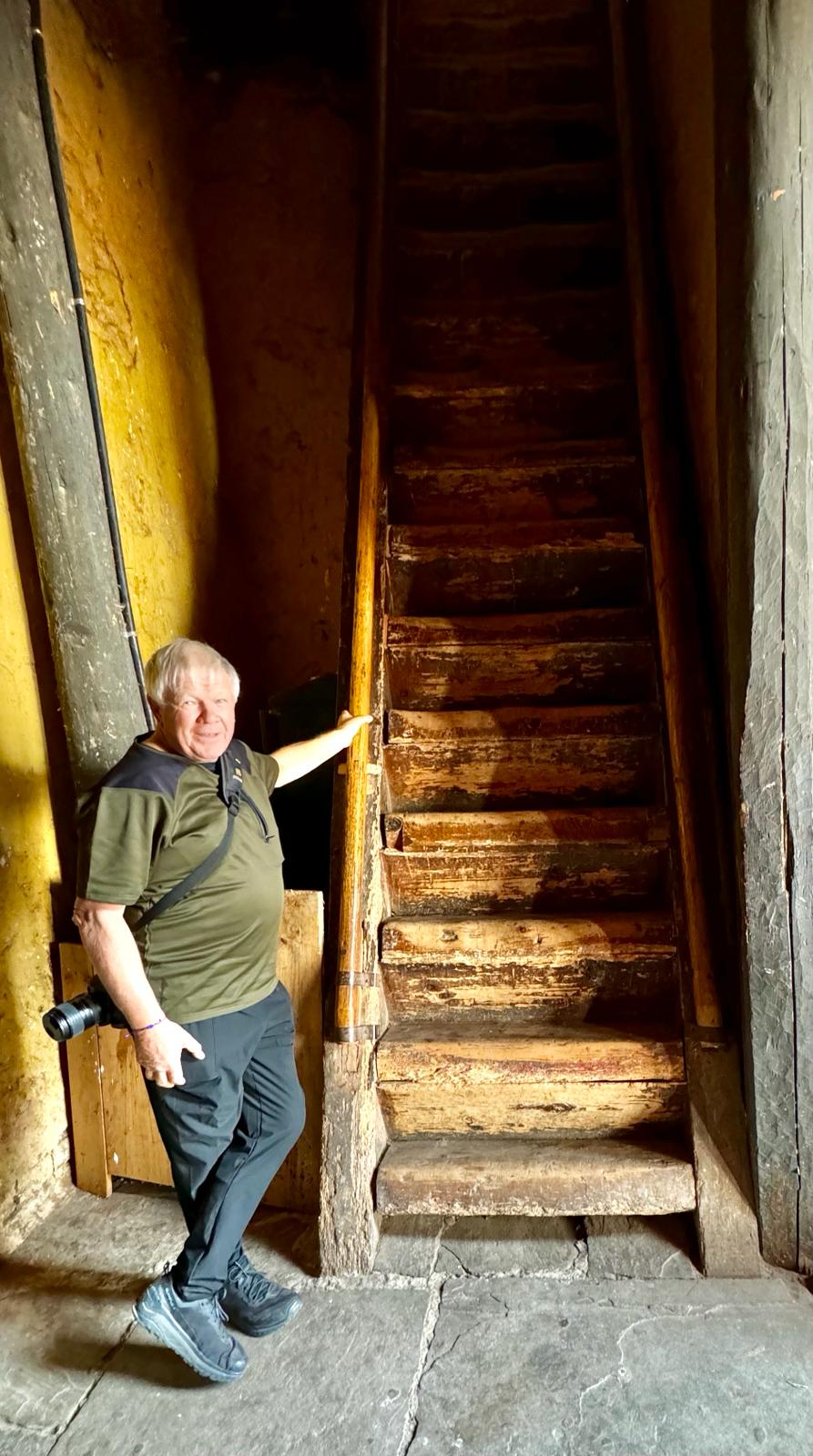
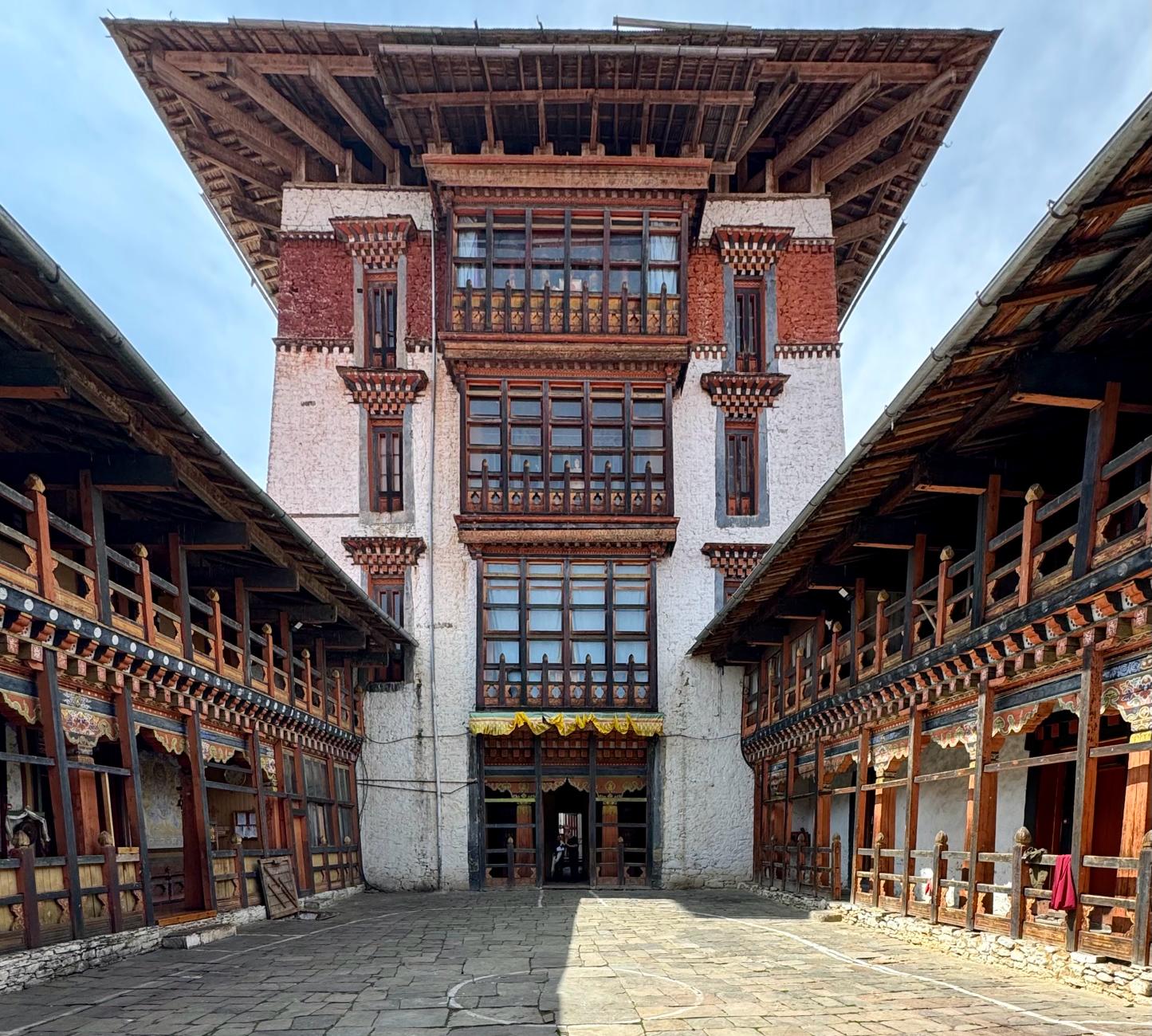
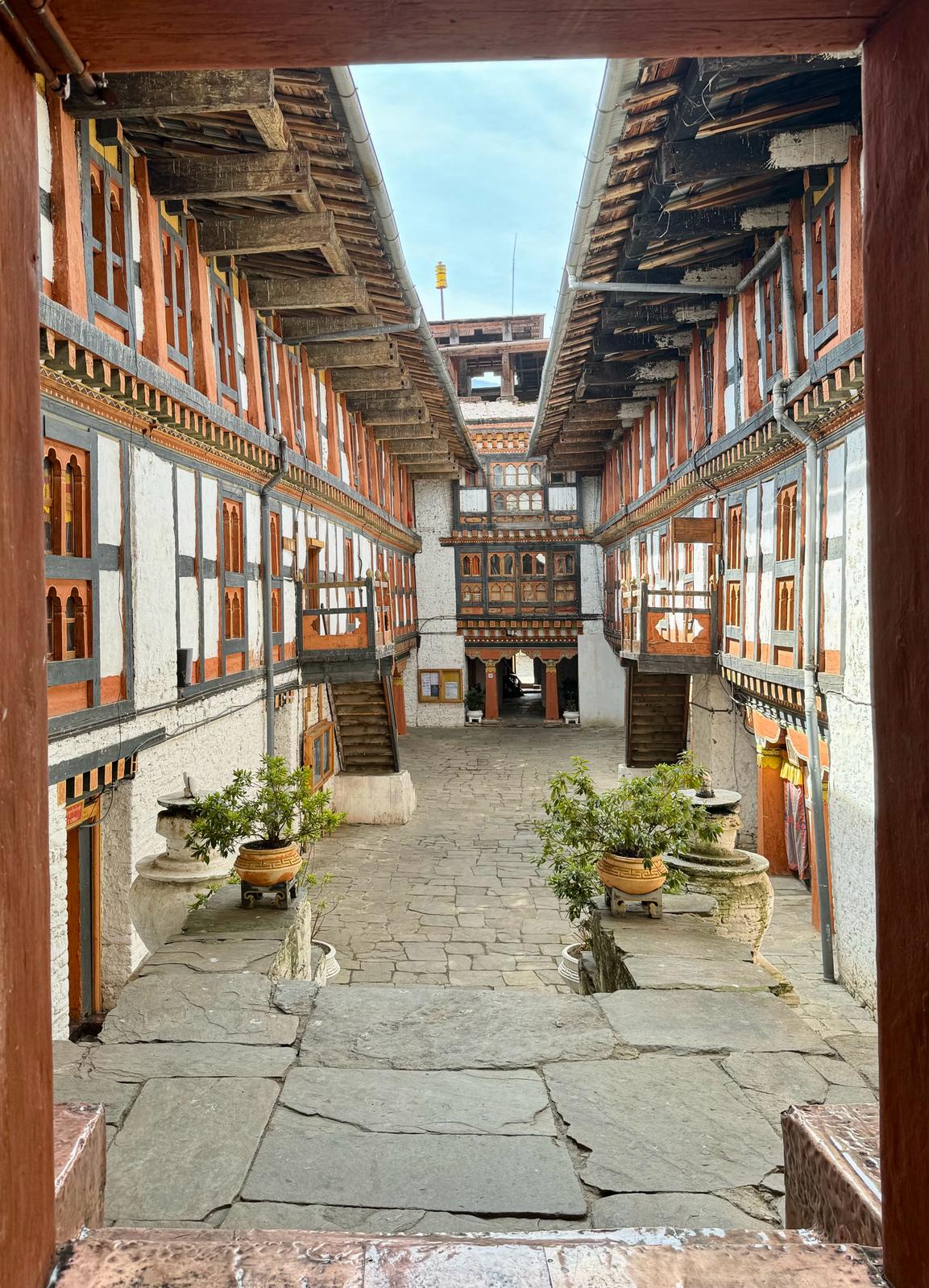
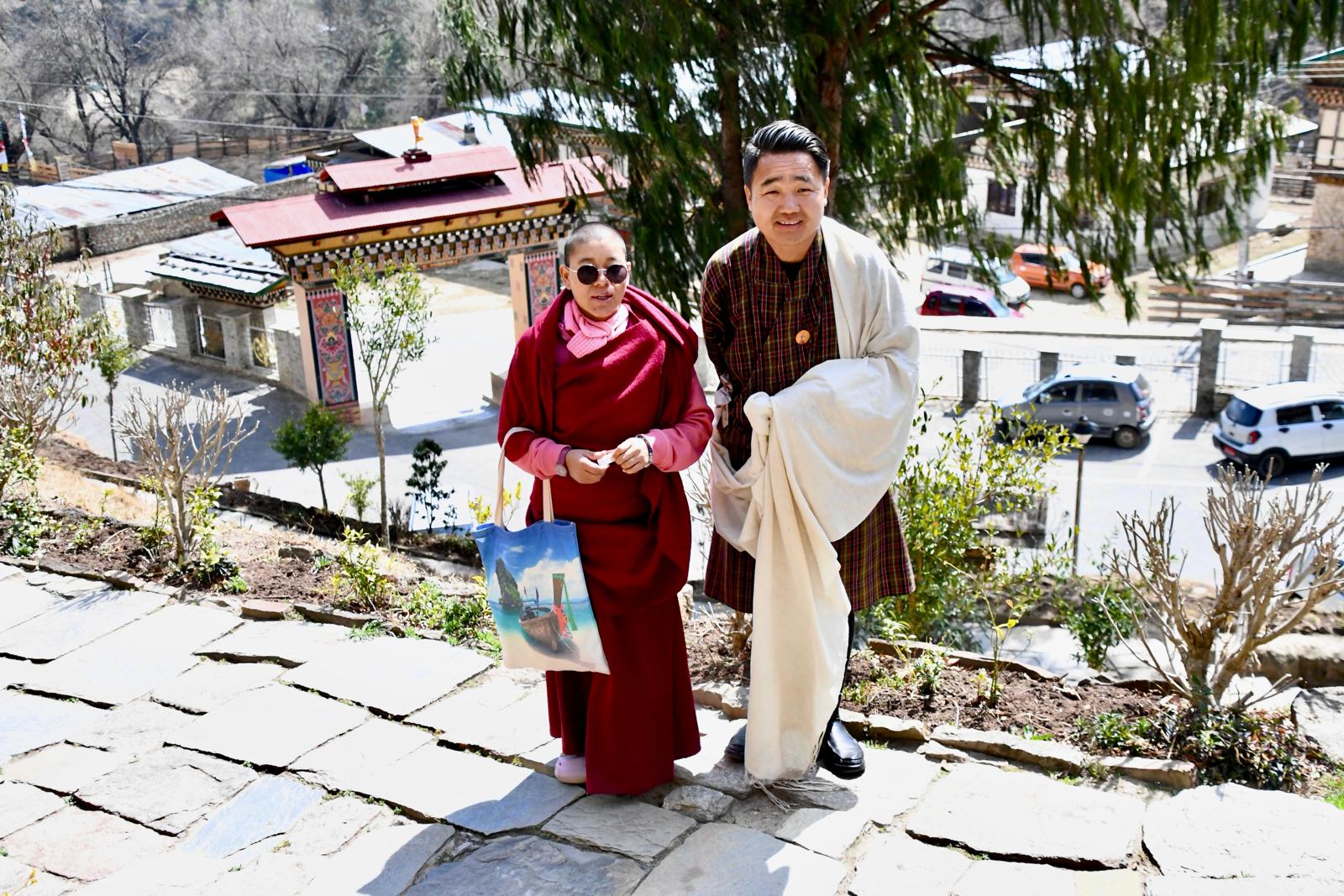
This lady apparently runs a nunnery we will be visiting in a couple of days. We met her leaving the Dzong as we were arriving.
Next we spent some time wandering through Chamkar town. There is a huge amount of forest around here and we saw a lot more buildings with wooden facades, and many houses with huge piles of firewood stacked outside. We came across a small outdoor market, selling lots of vegetables. As in the other towns we have been to, people seem very friendly and welcoming.
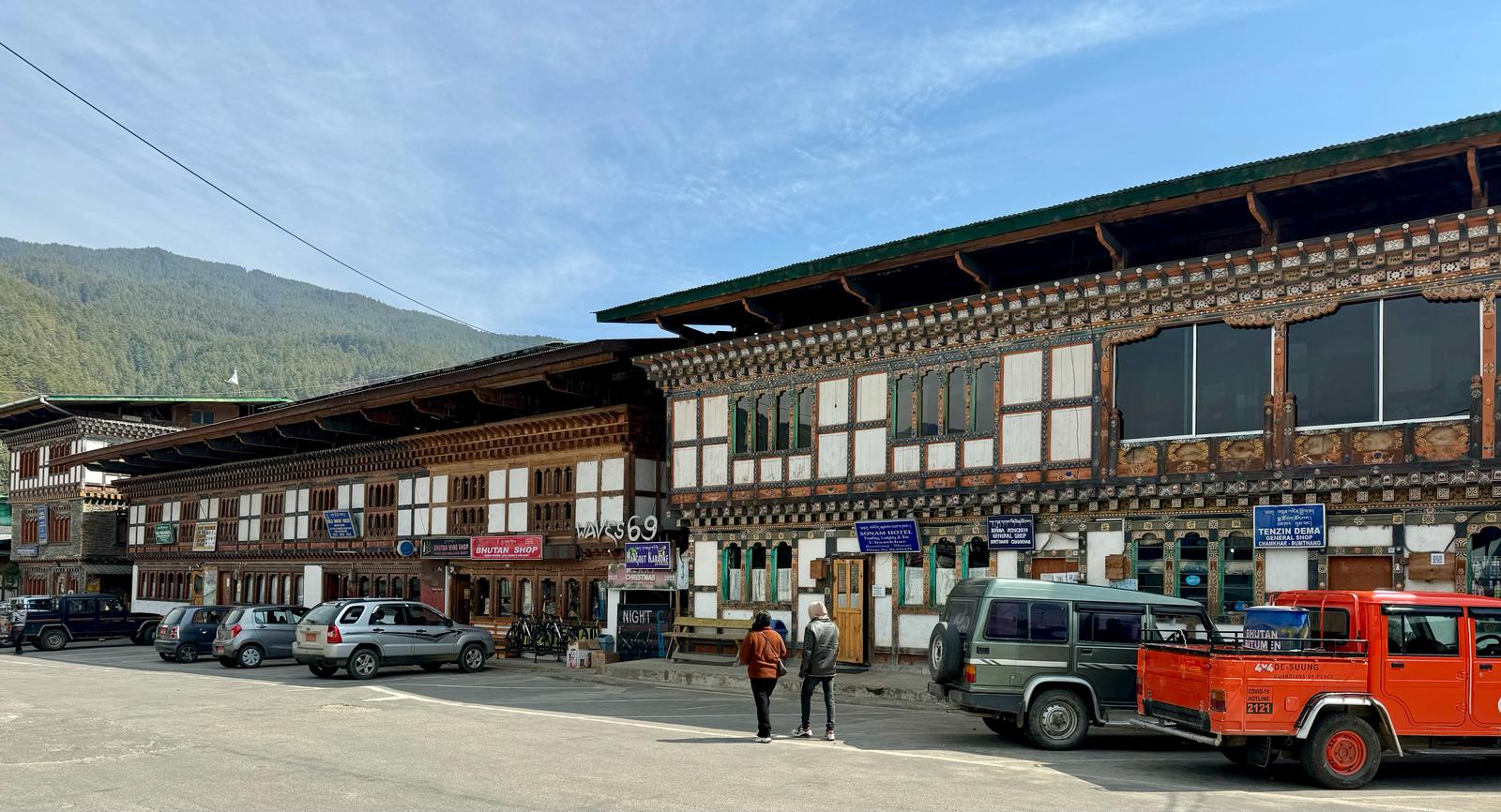
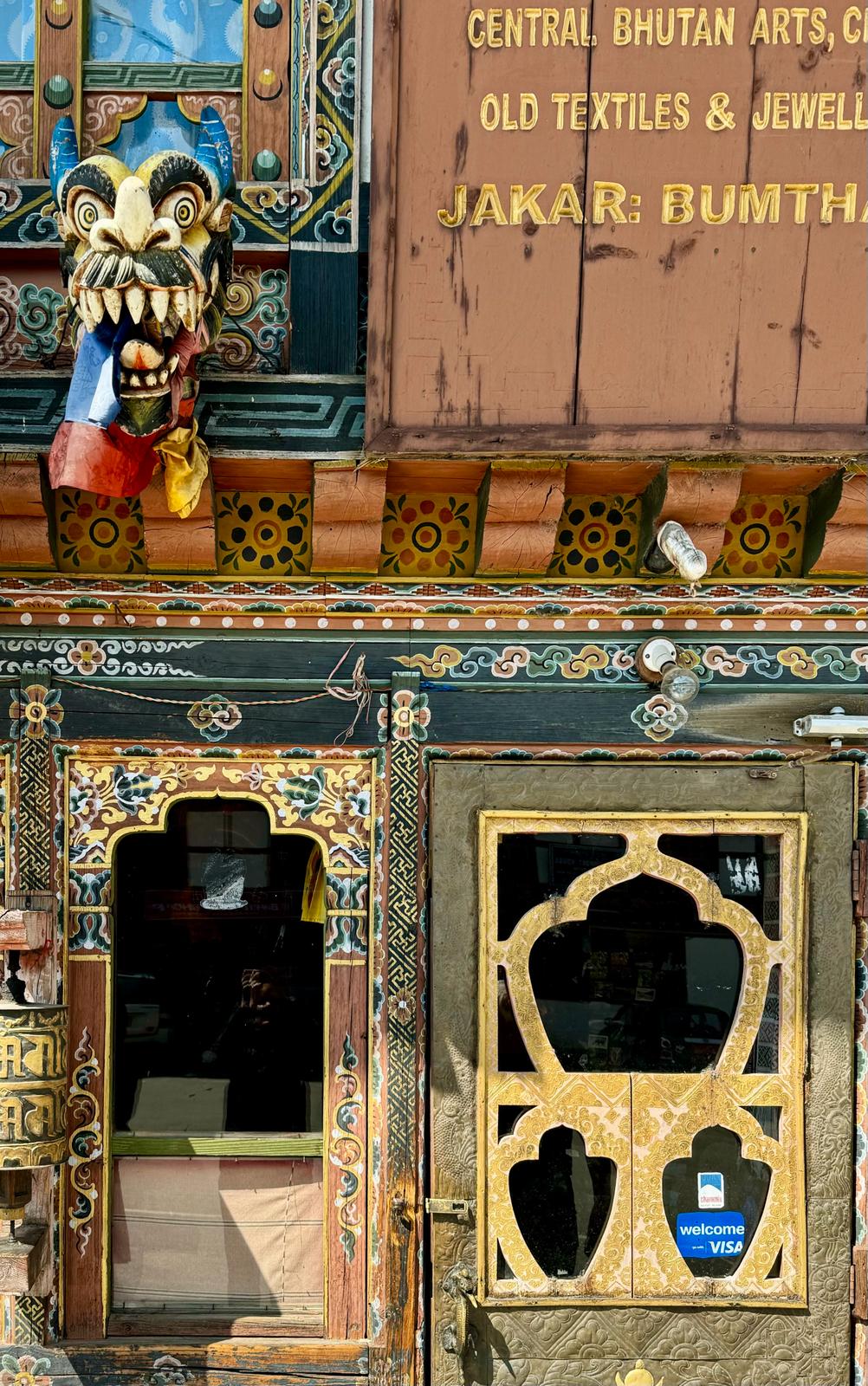
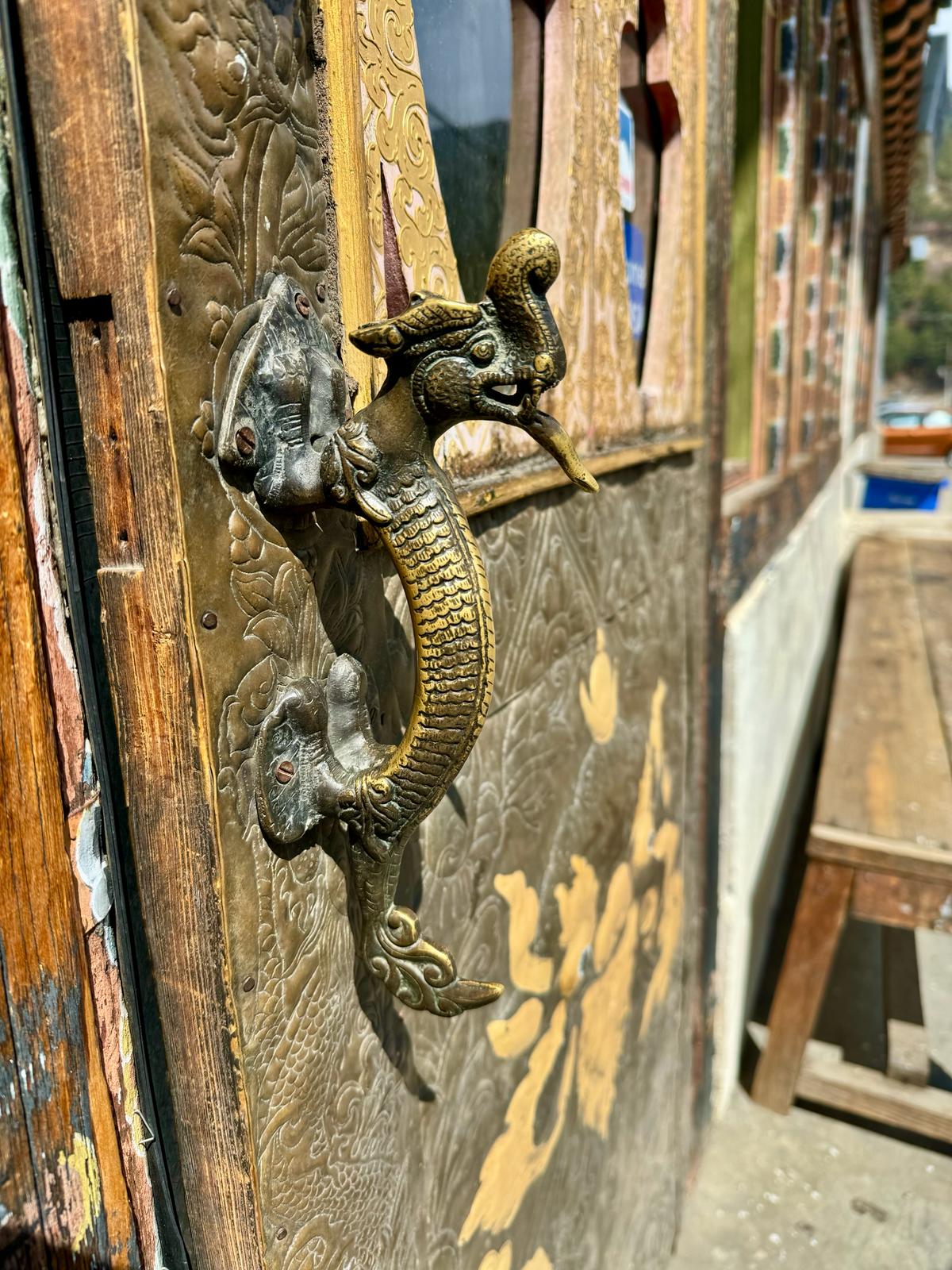
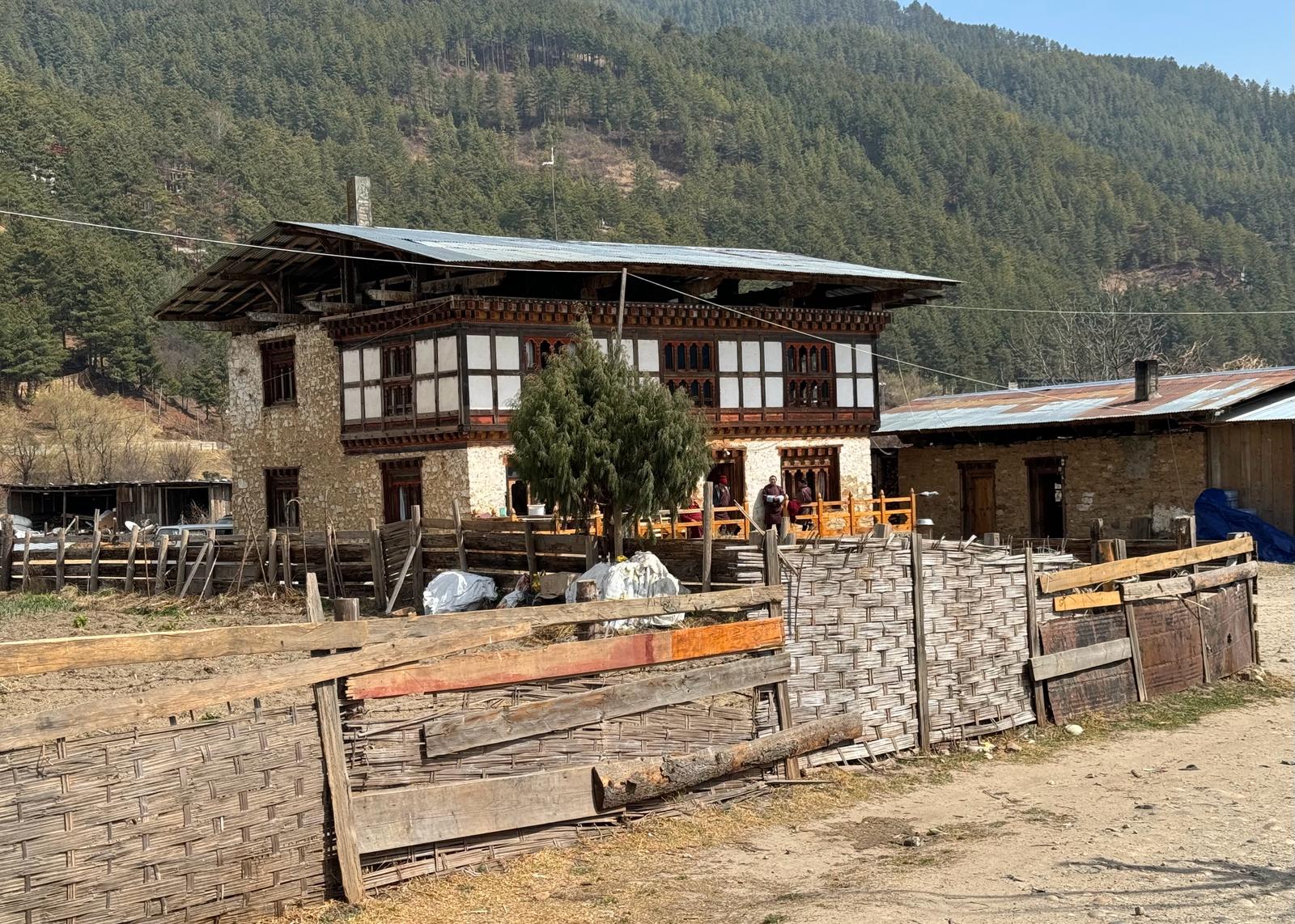
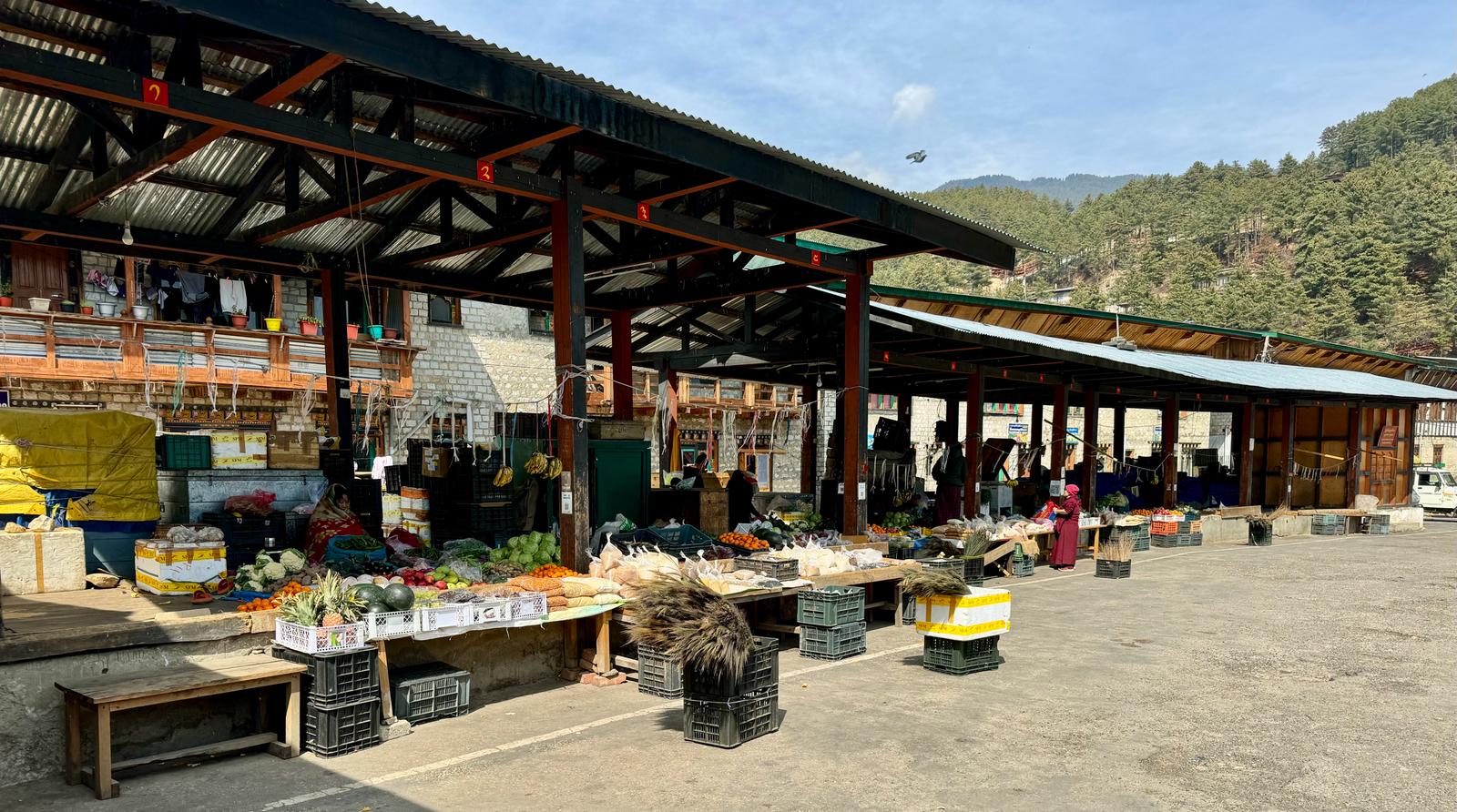
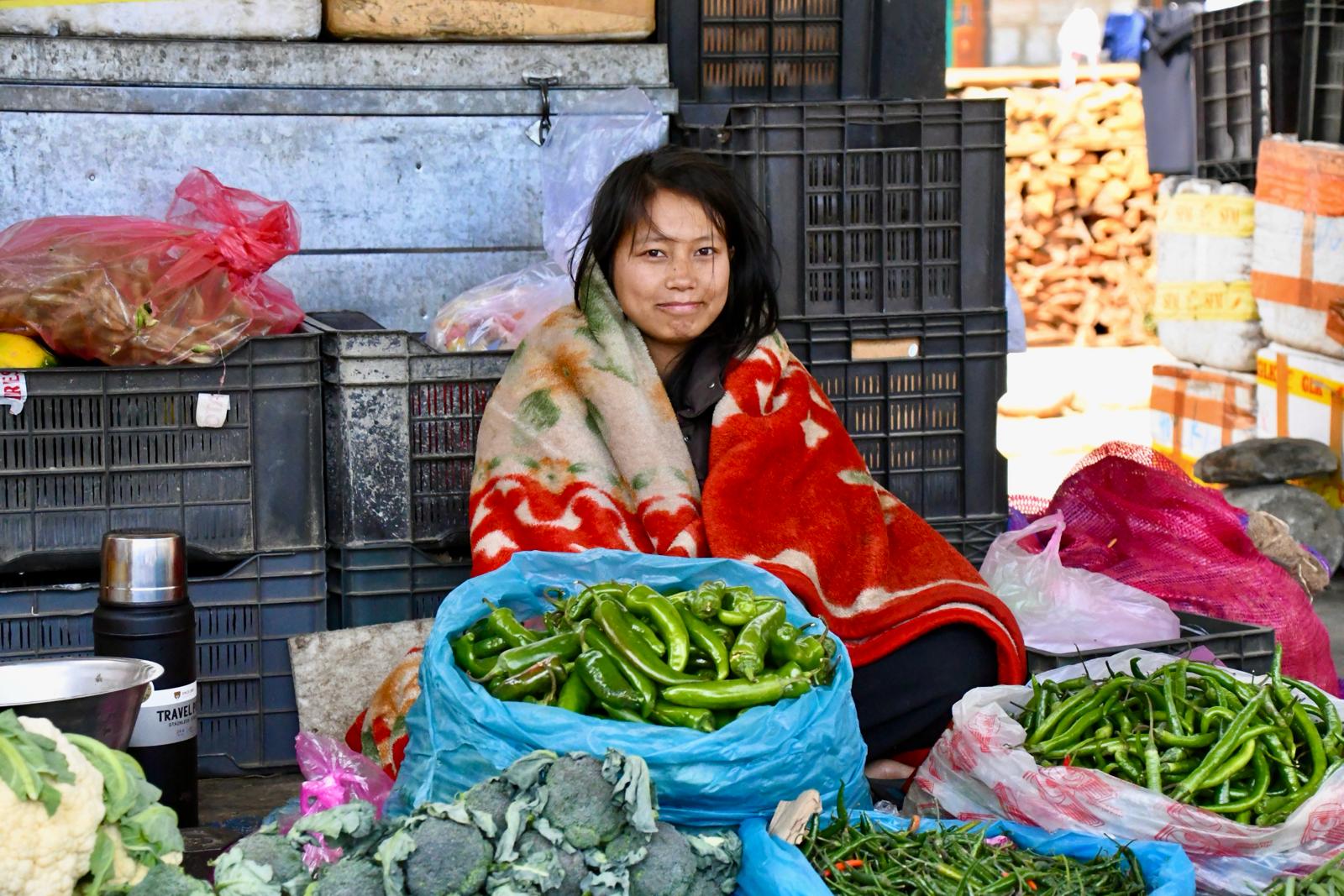
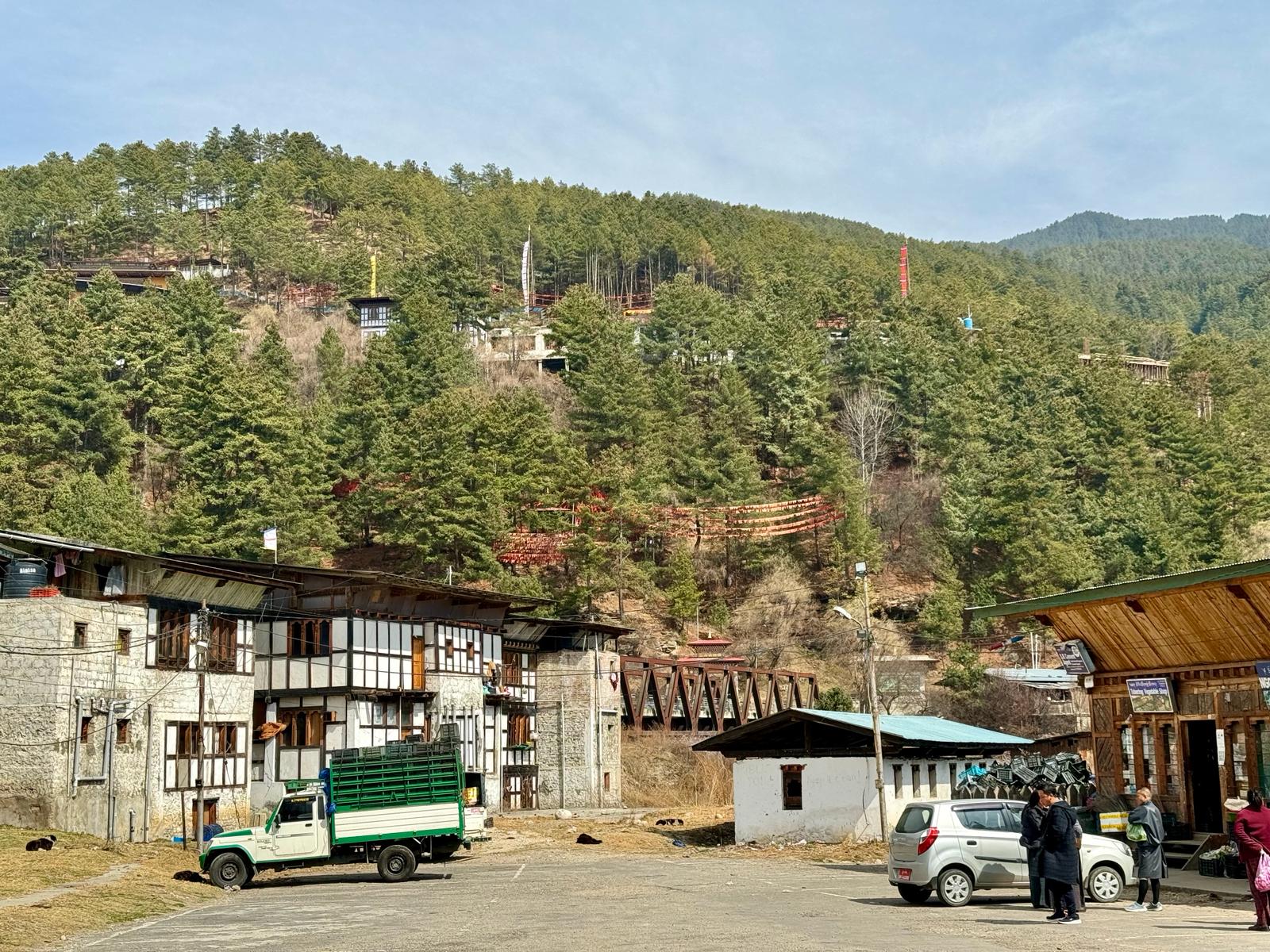
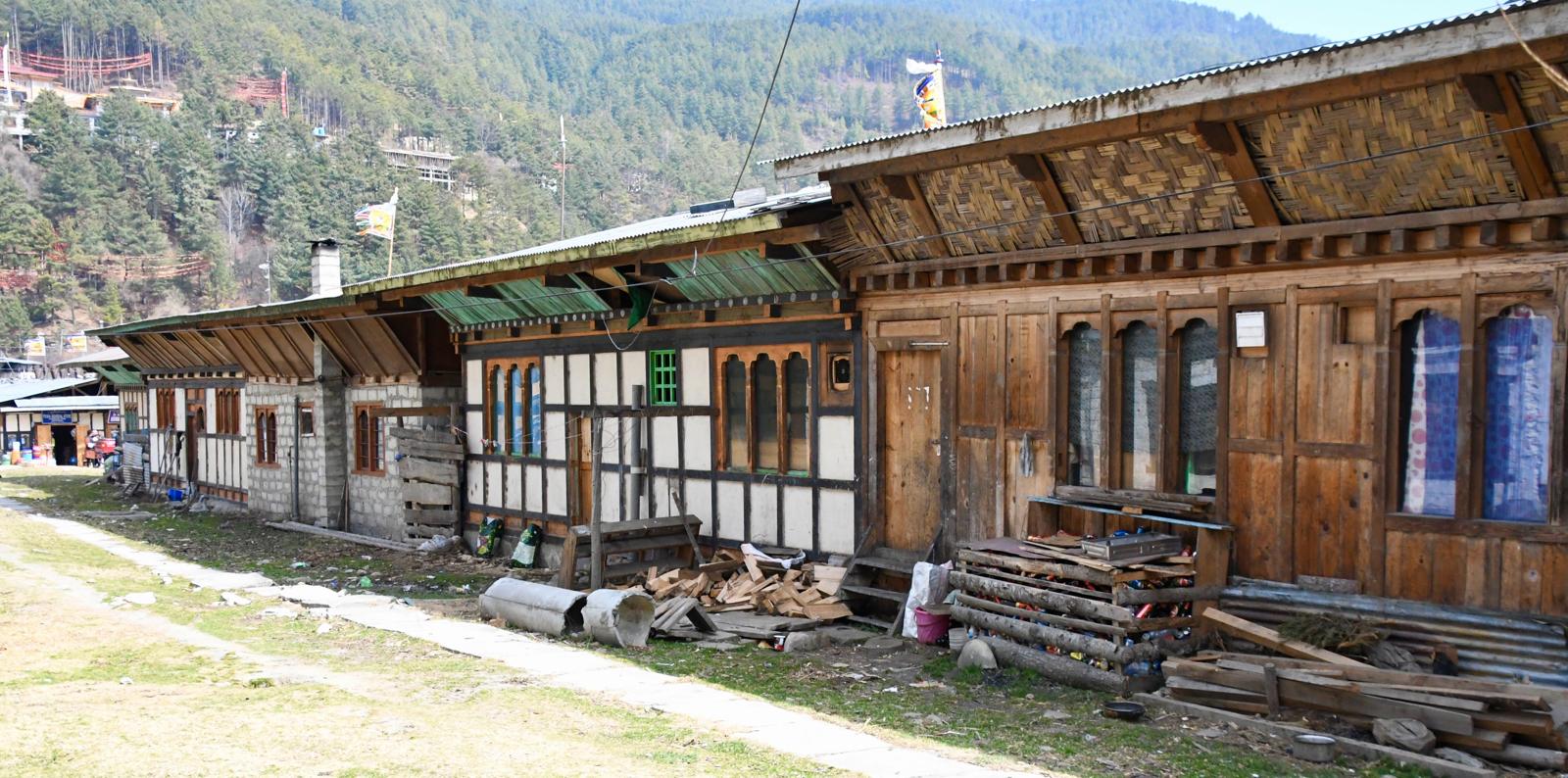
We continued to wander across the bridge out of town, enjoying the fresh breeze and the sound of the river, while admiring the numerous red flags flapping outside one of the large, privately owned monasteries. We spotted a couple of ruddy ducks by the river, and as we walked on a bit further several horses ran up and down through the trees on the other side of the river to drink. Eventually we hopped back in the car and returned to the hotel for a restful afternoon.
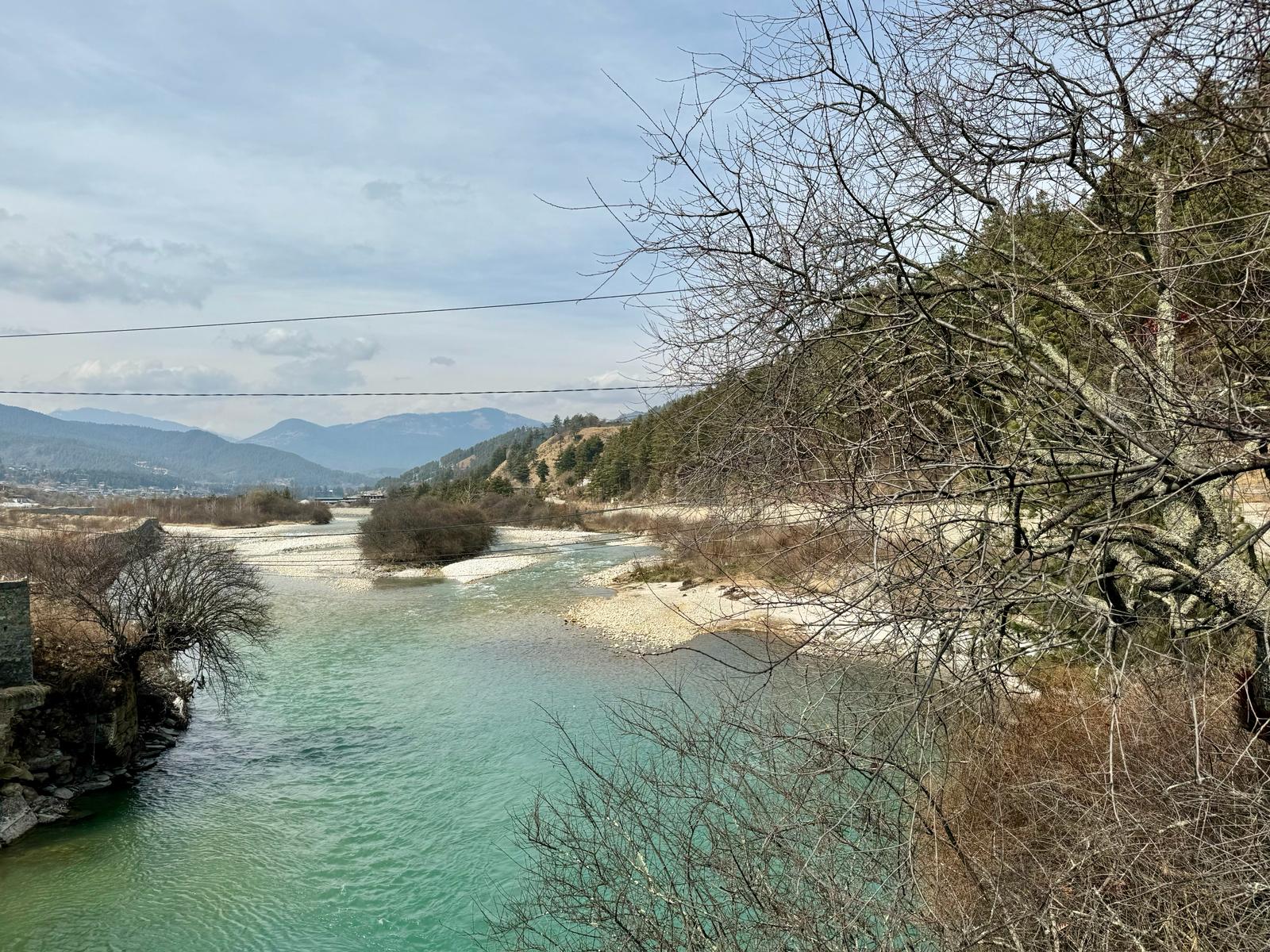
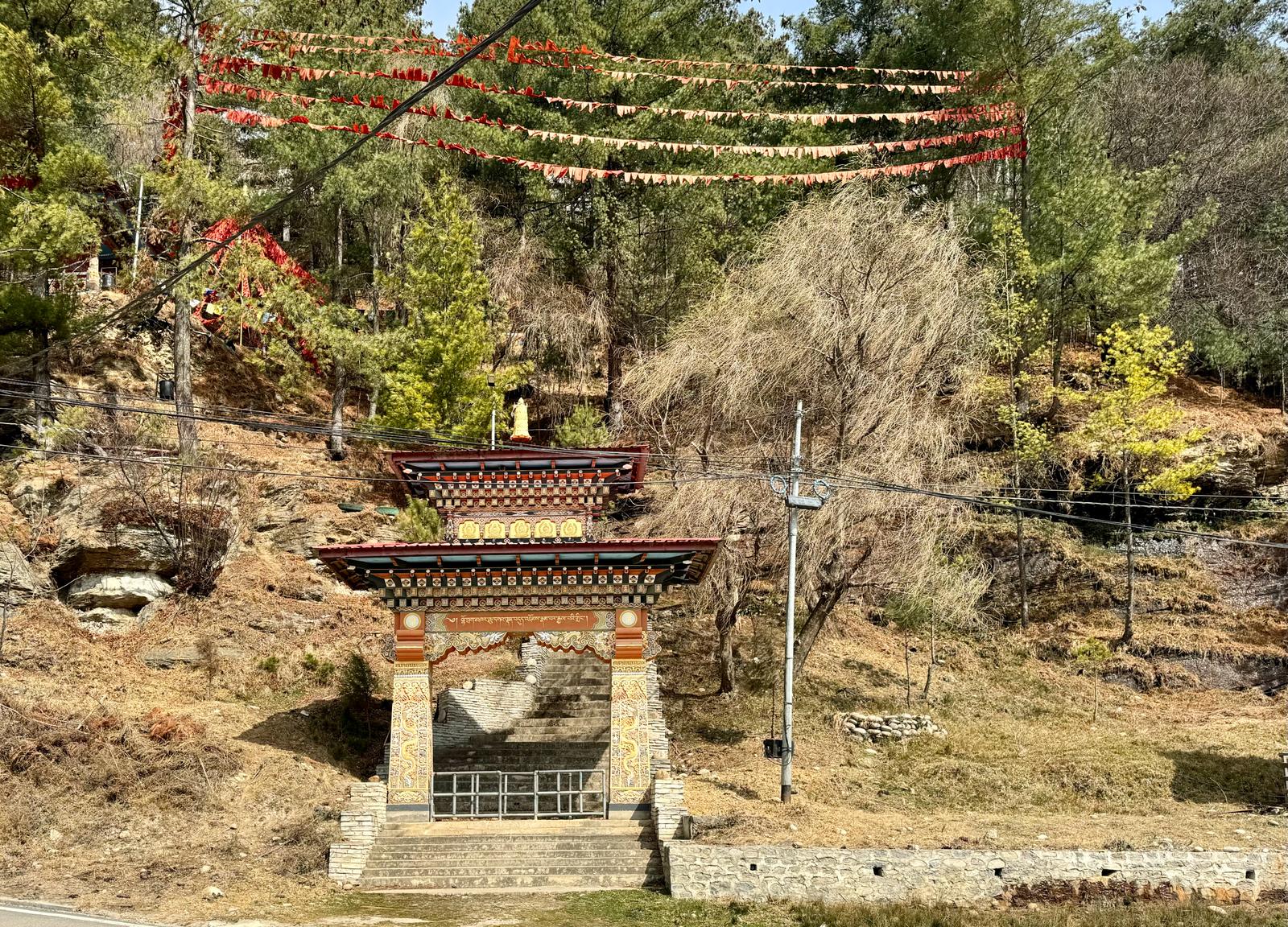
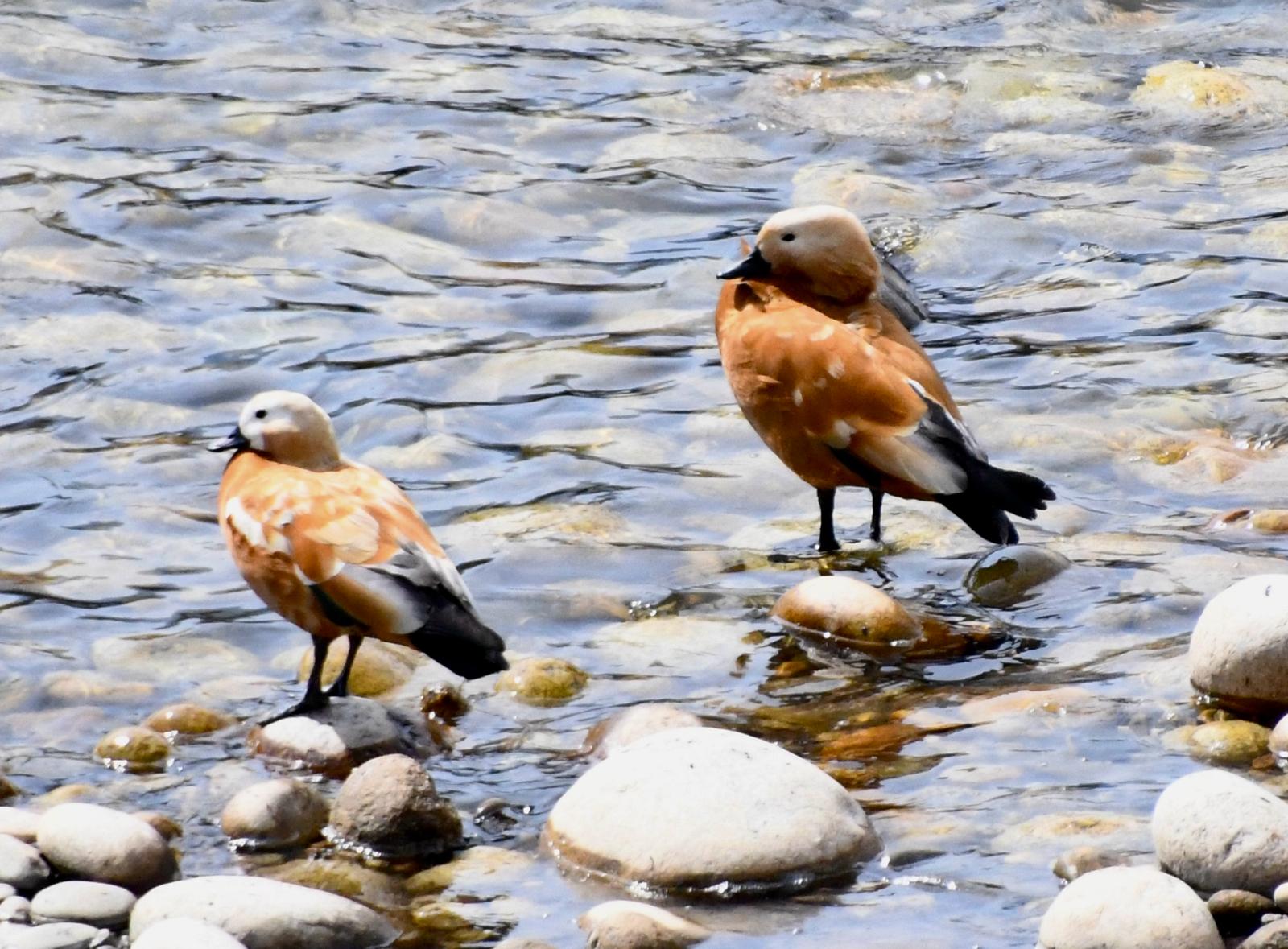
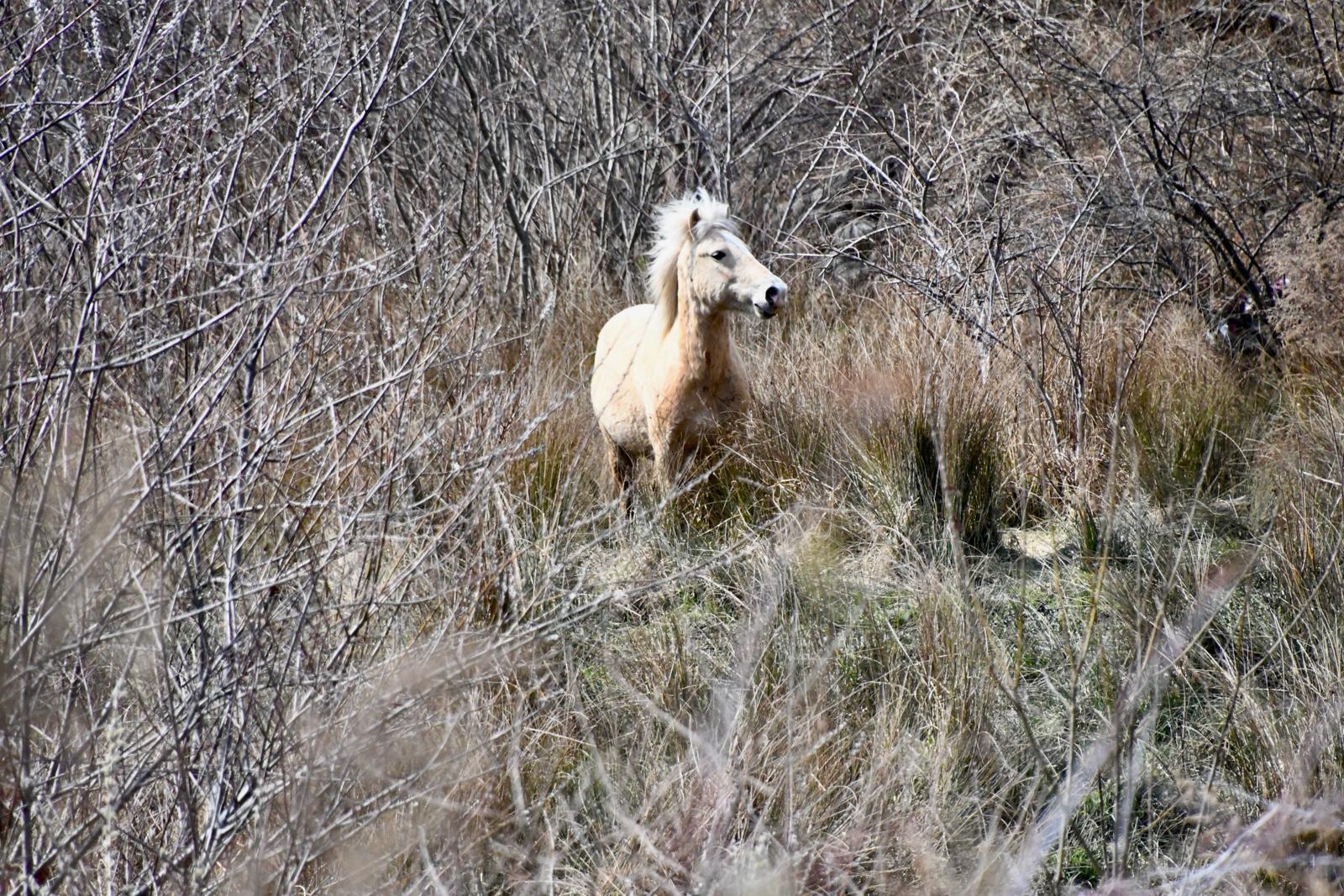
Another fabulous blog and photos. Thanks you two, and so glad to know you will reach Enlightenment.
Surprising to see tropical looking fruit and veges in such a cold altitudinous place.
Very impressed with your climb. My knees are aching at the thought of it, so I can imagine what yours must have been like Roger! Thank goodness for great hospitality and massages. Xx
For me one of your best blogs yet loved it
Thank you for such enlightening writings and the amazing photos
The hike to Tigers Nest looks really special, thanks for sharing. Bhutan looks very beautiful.
that walk up to the temple looks amazing. Seems unfair you have to go down and up again!
The temple trip sounds like hard work. But keeping happy
The article introduction and photos are very beautiful, thank you for sharing